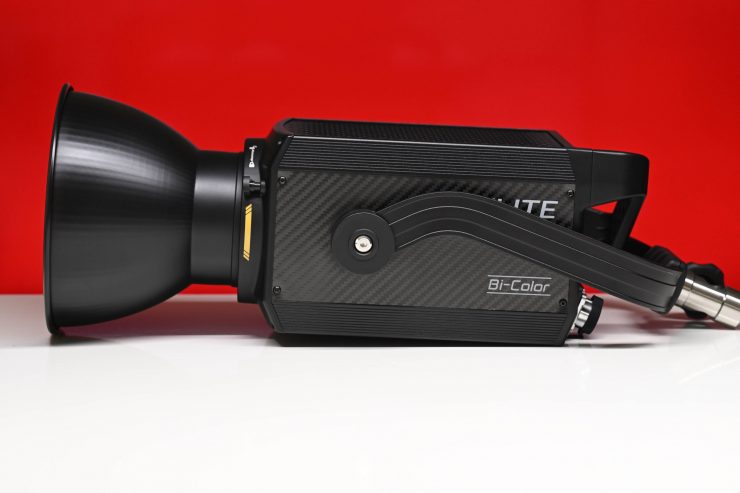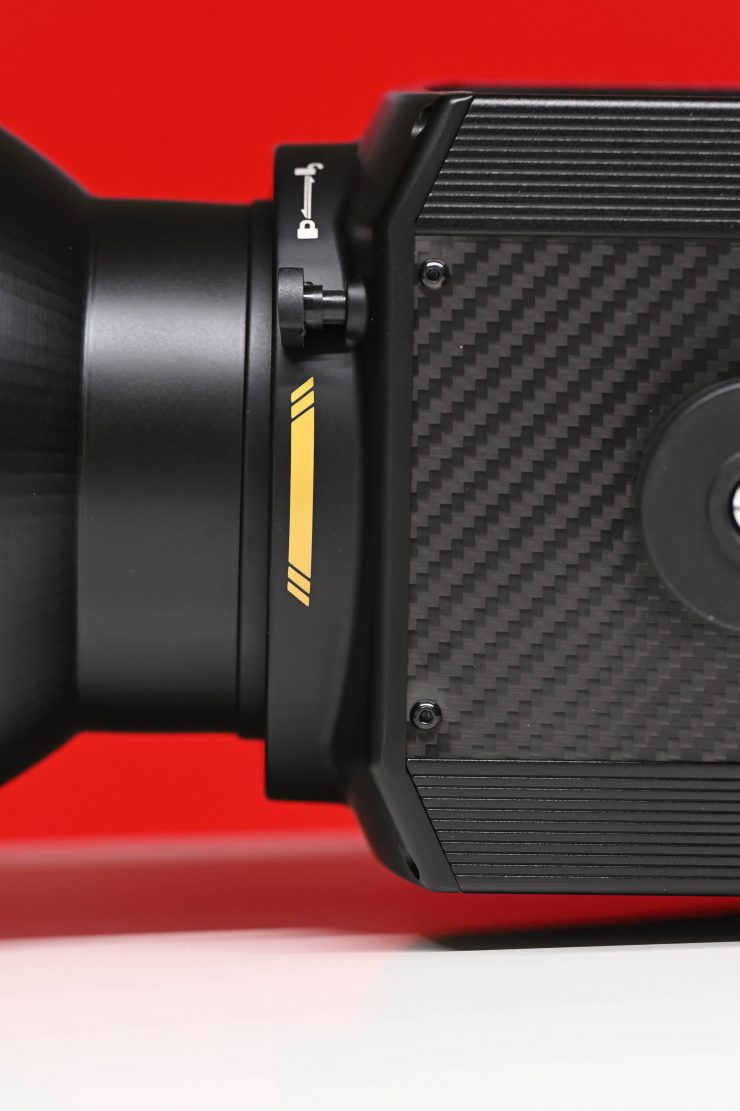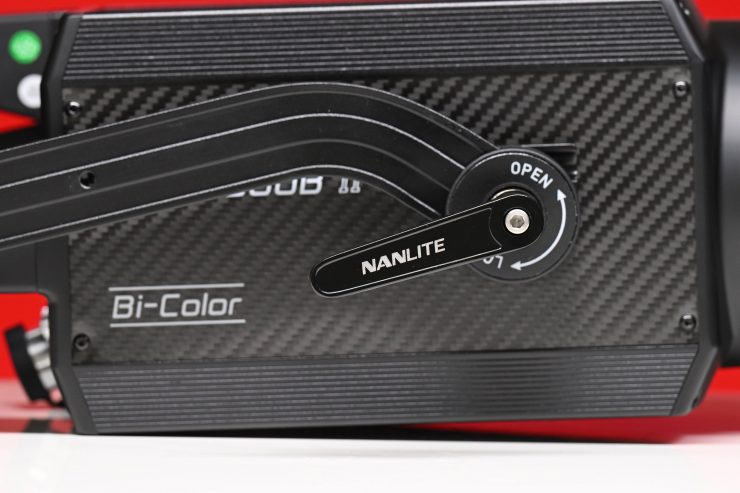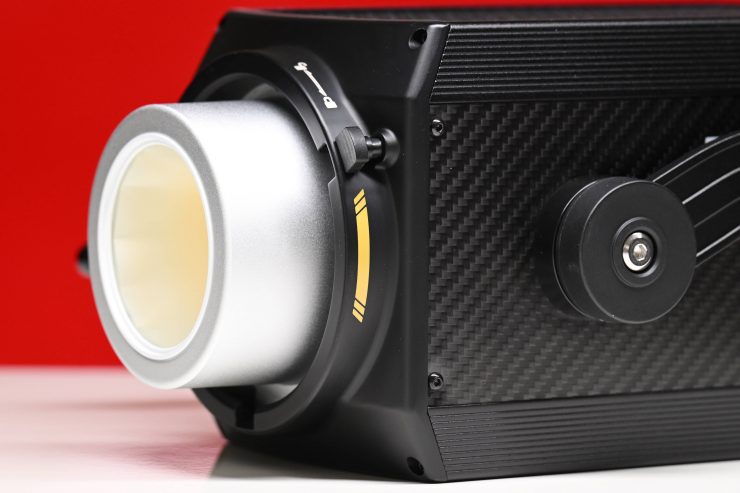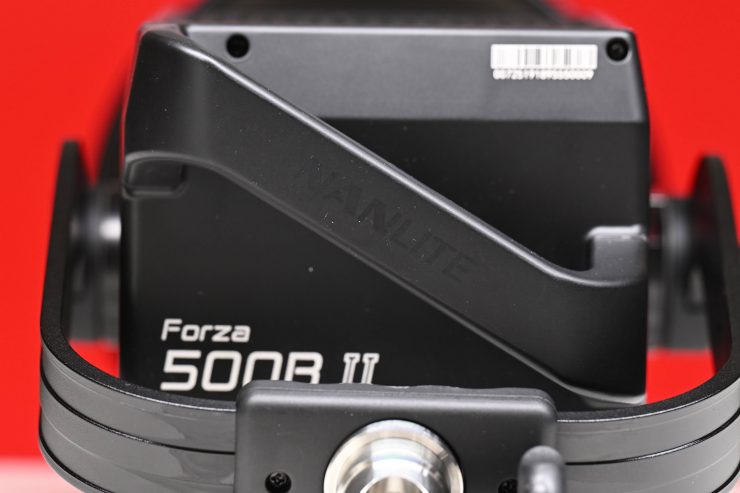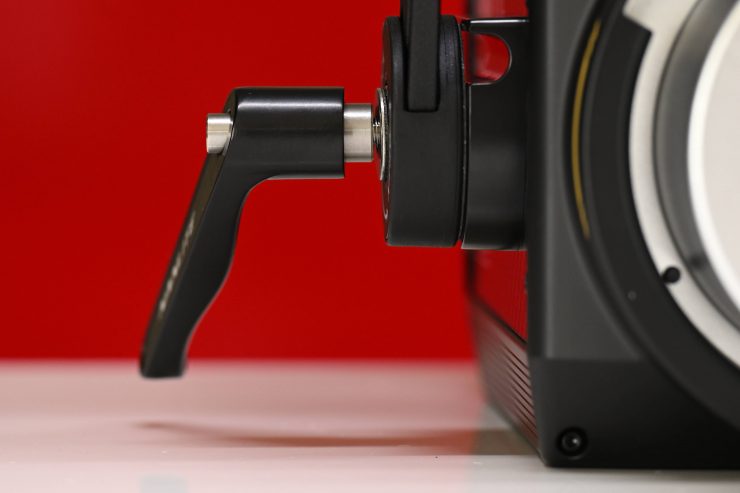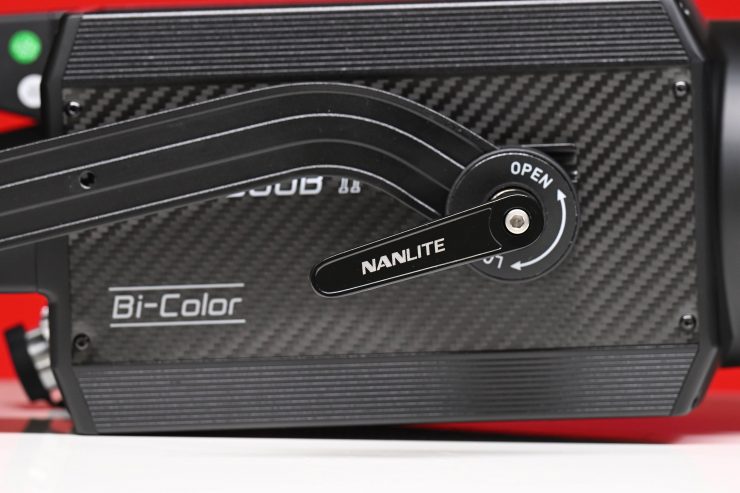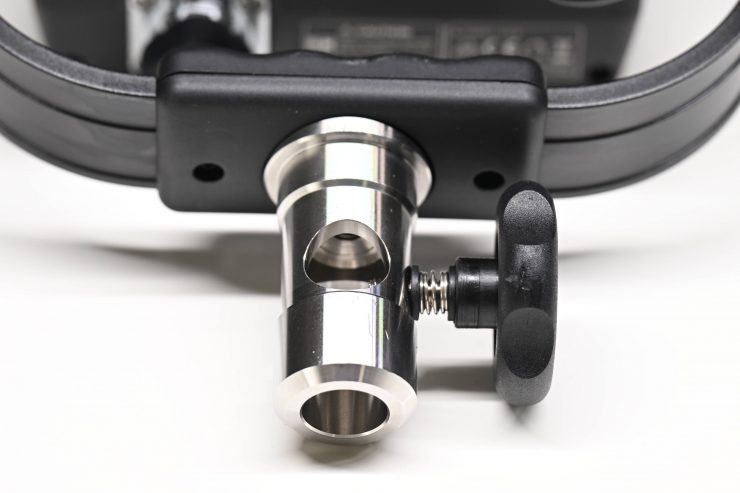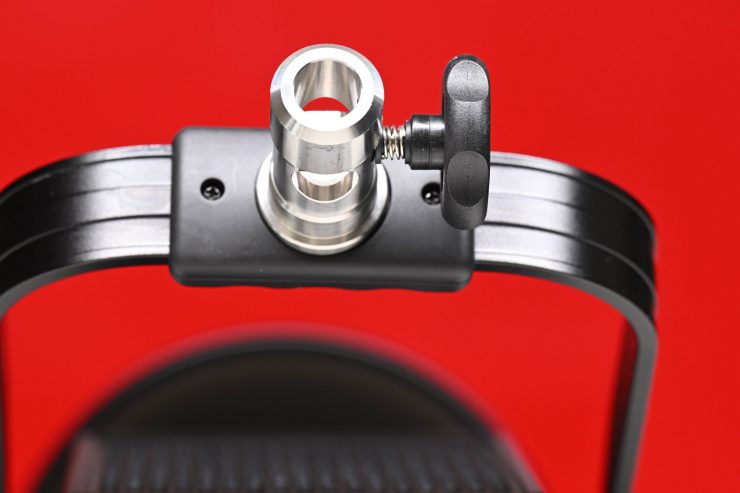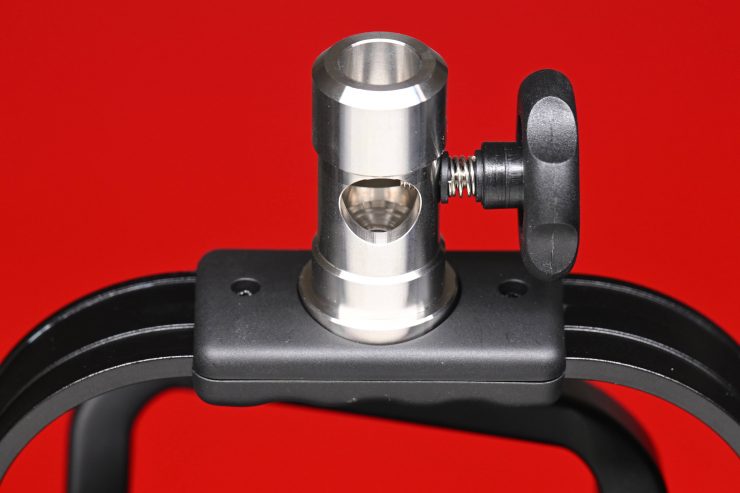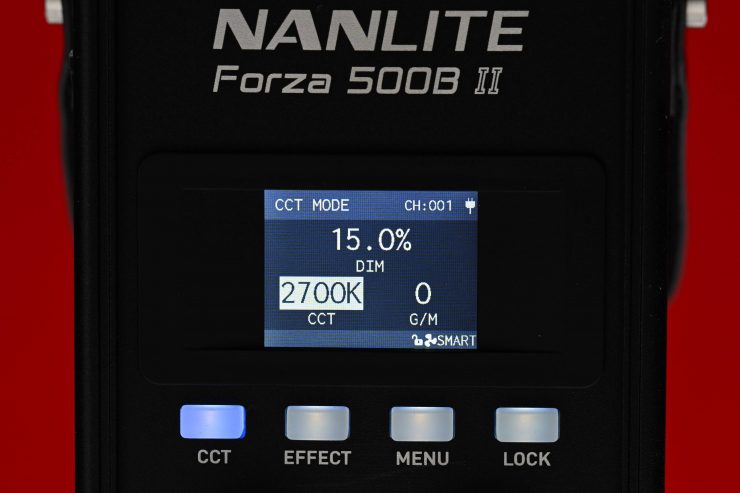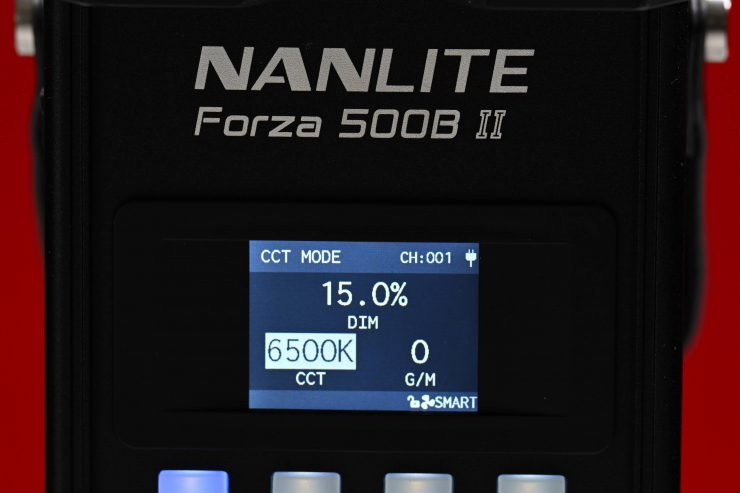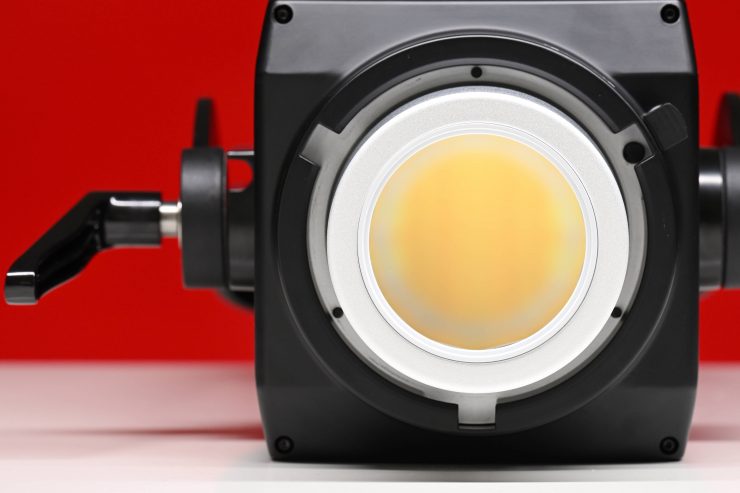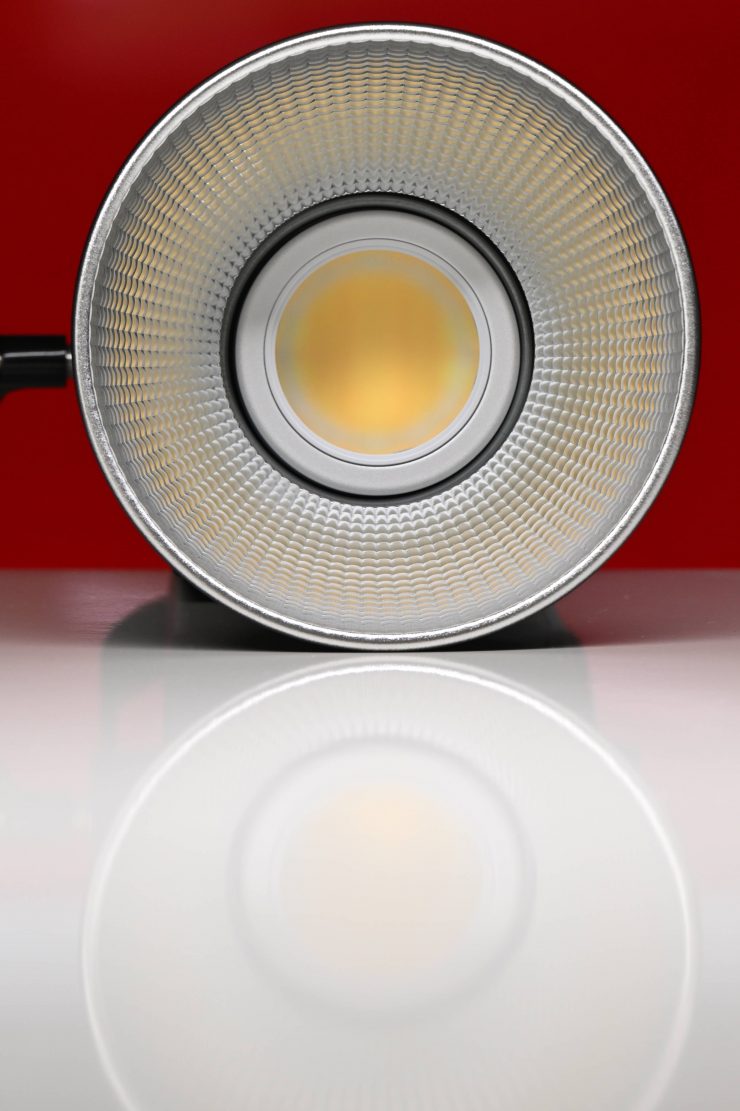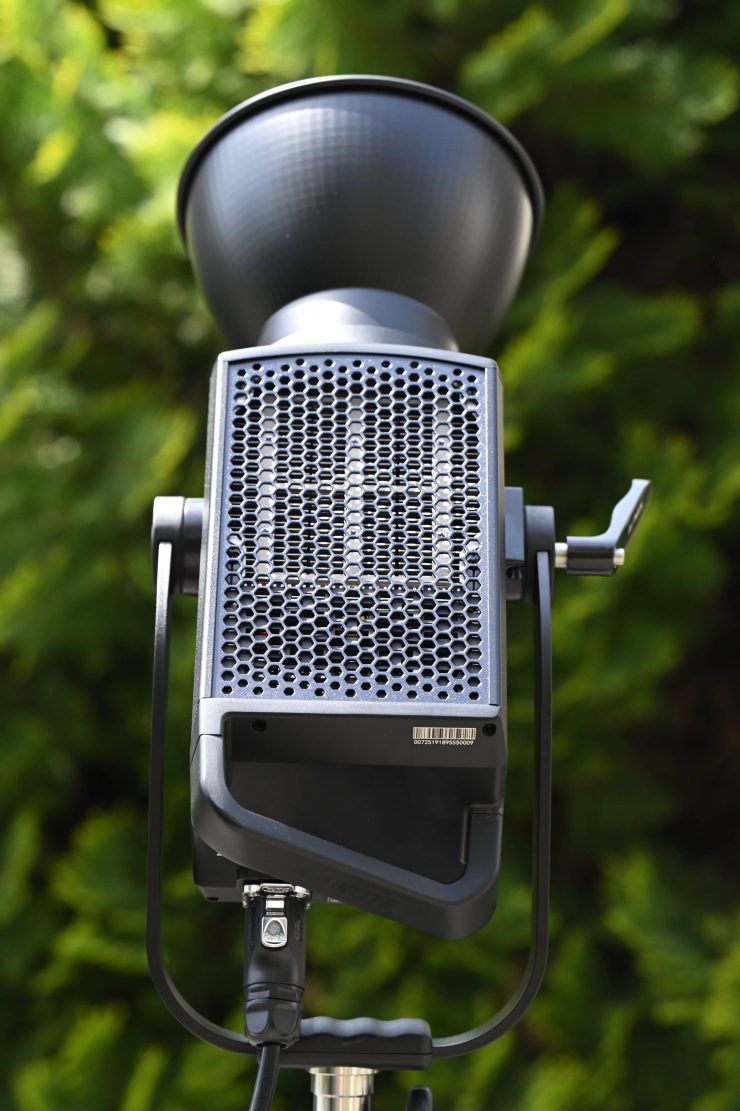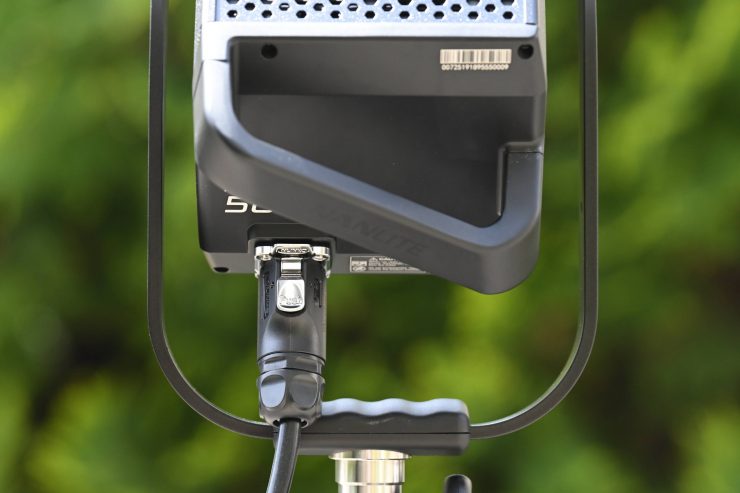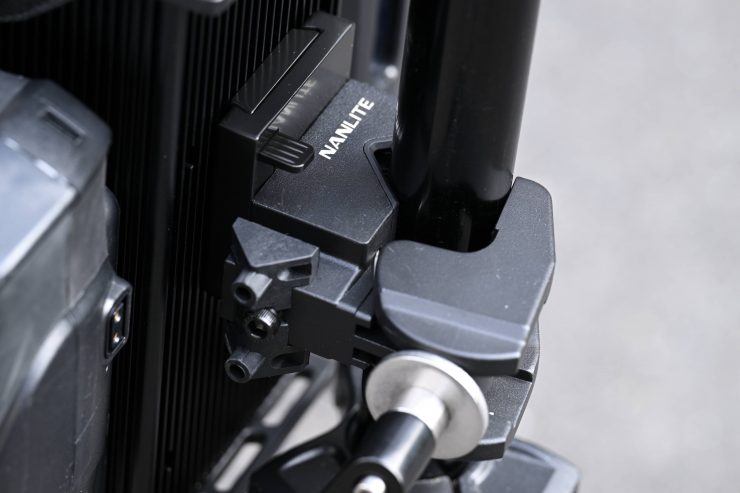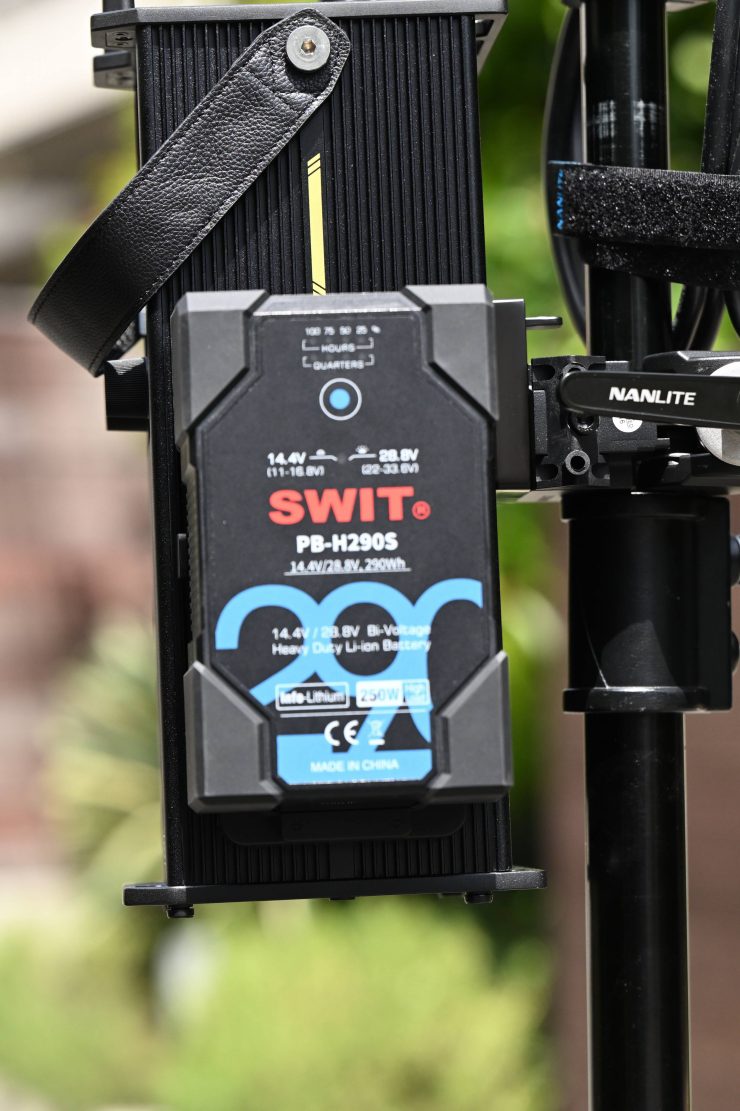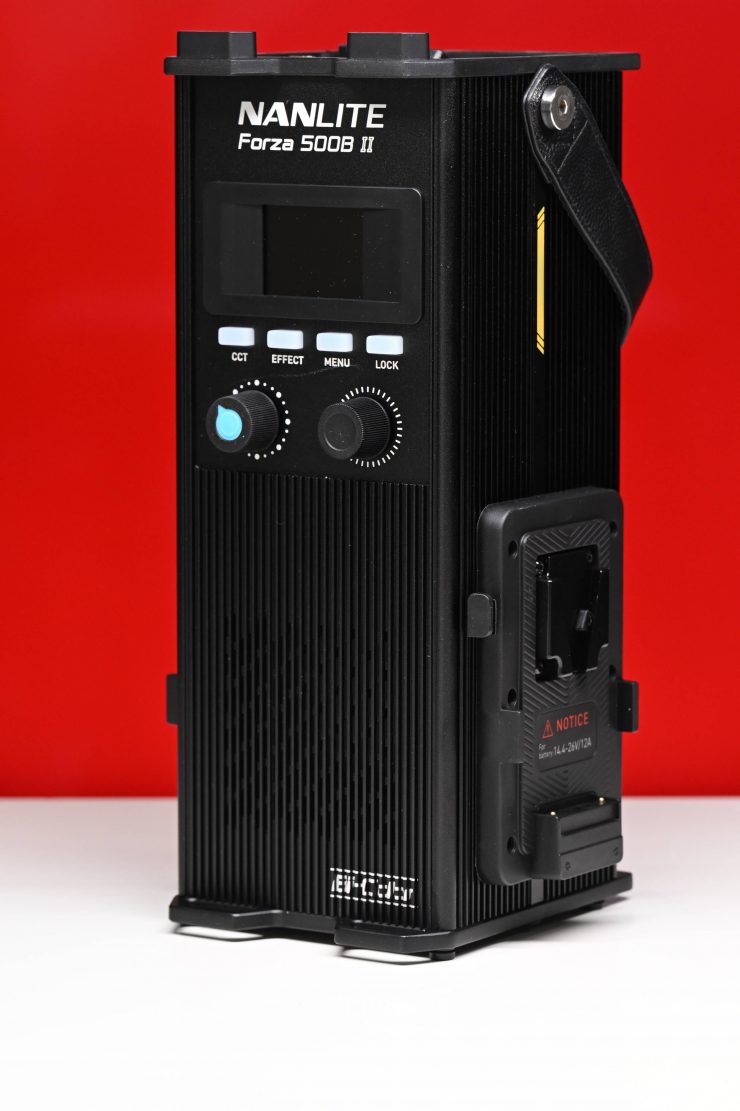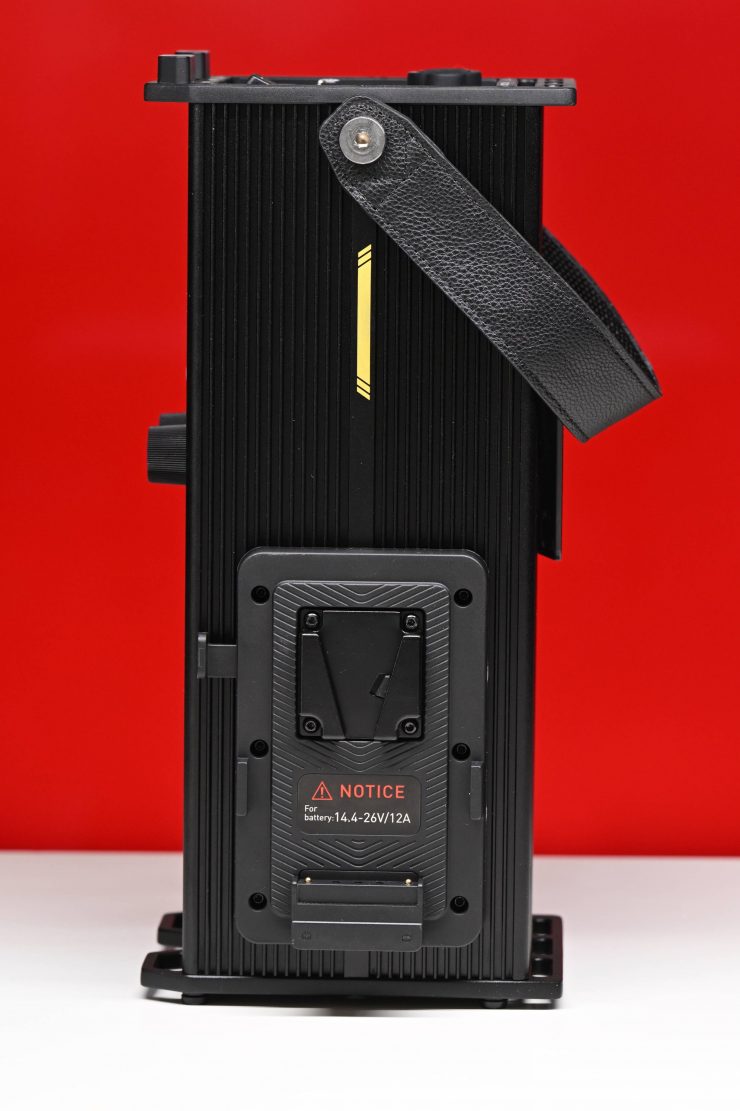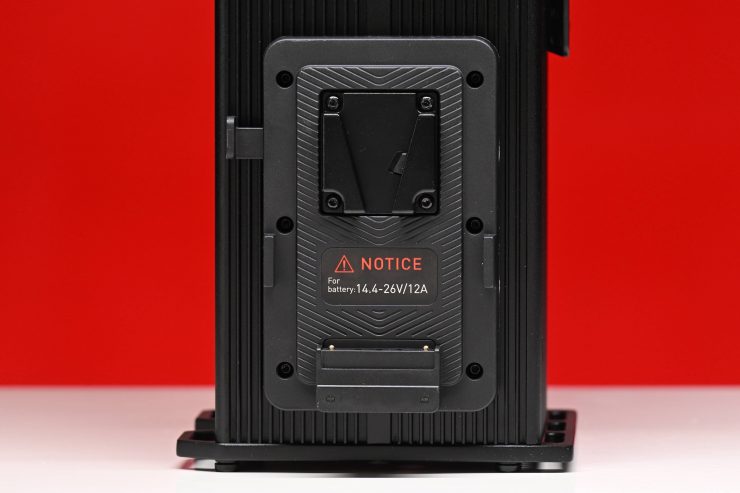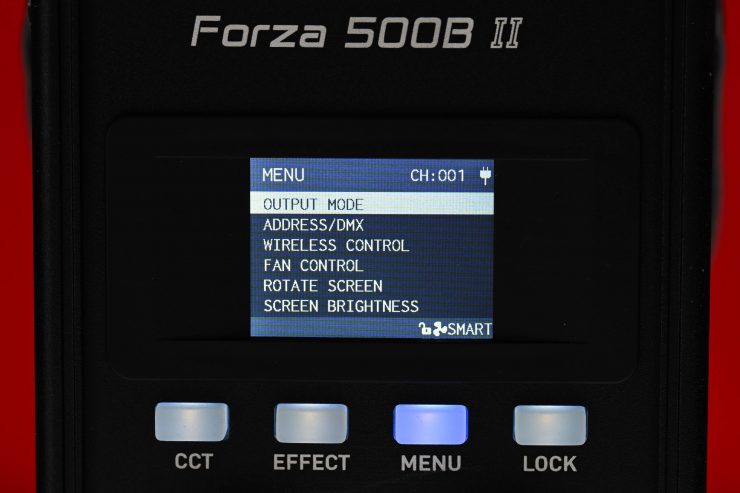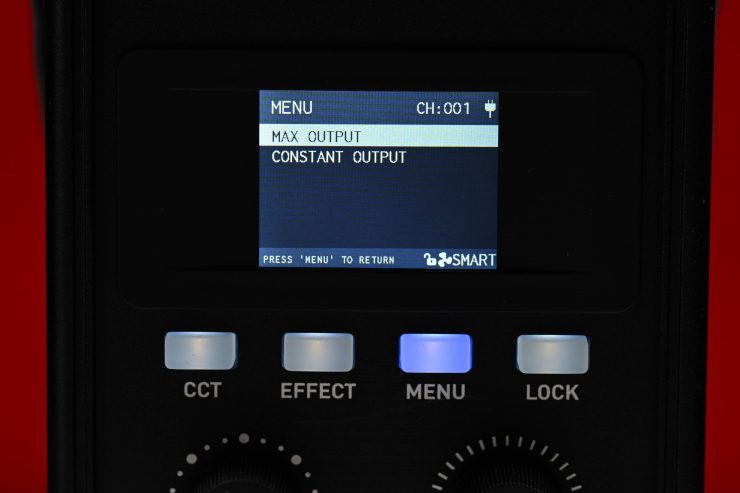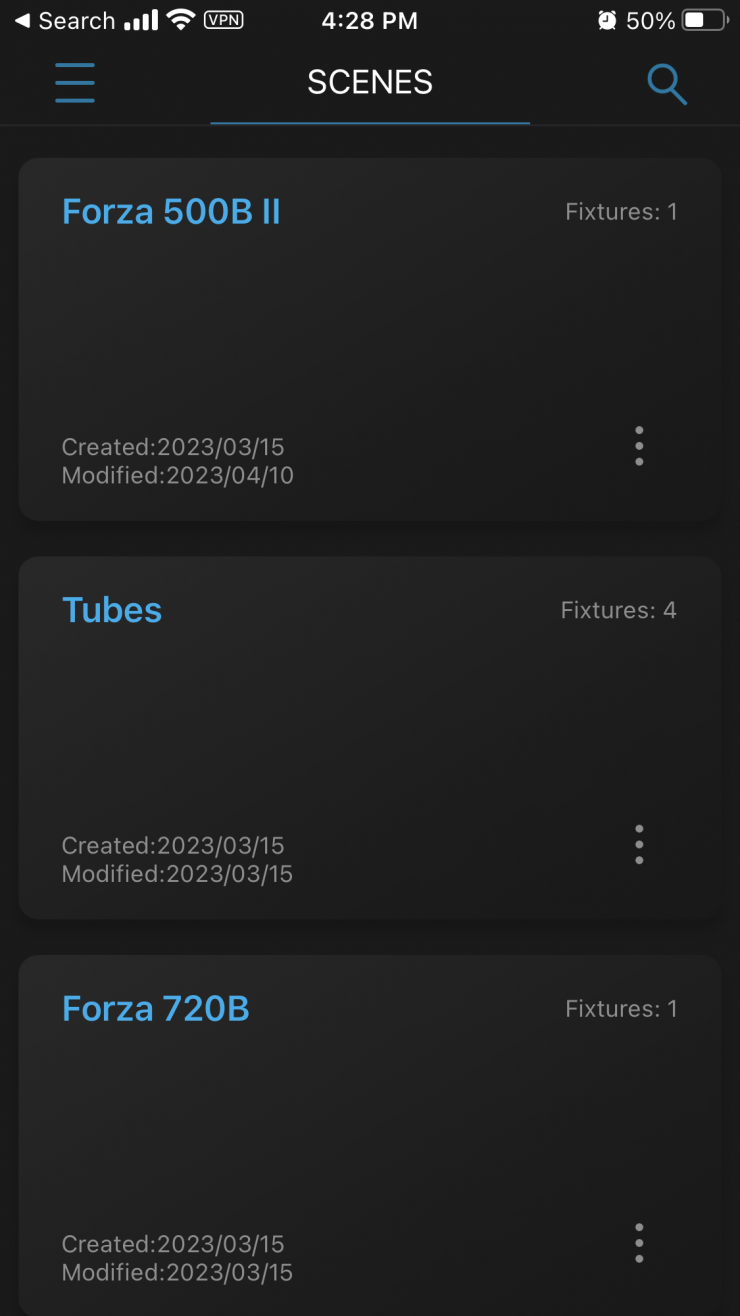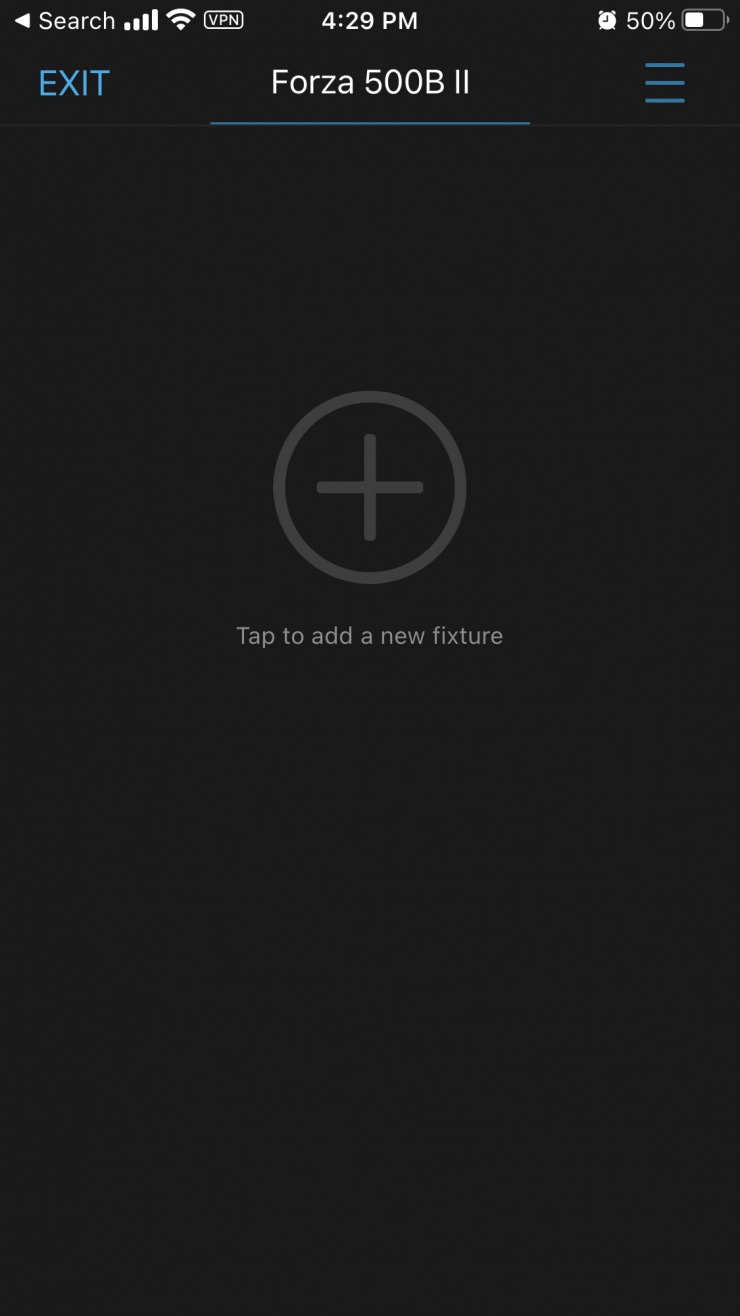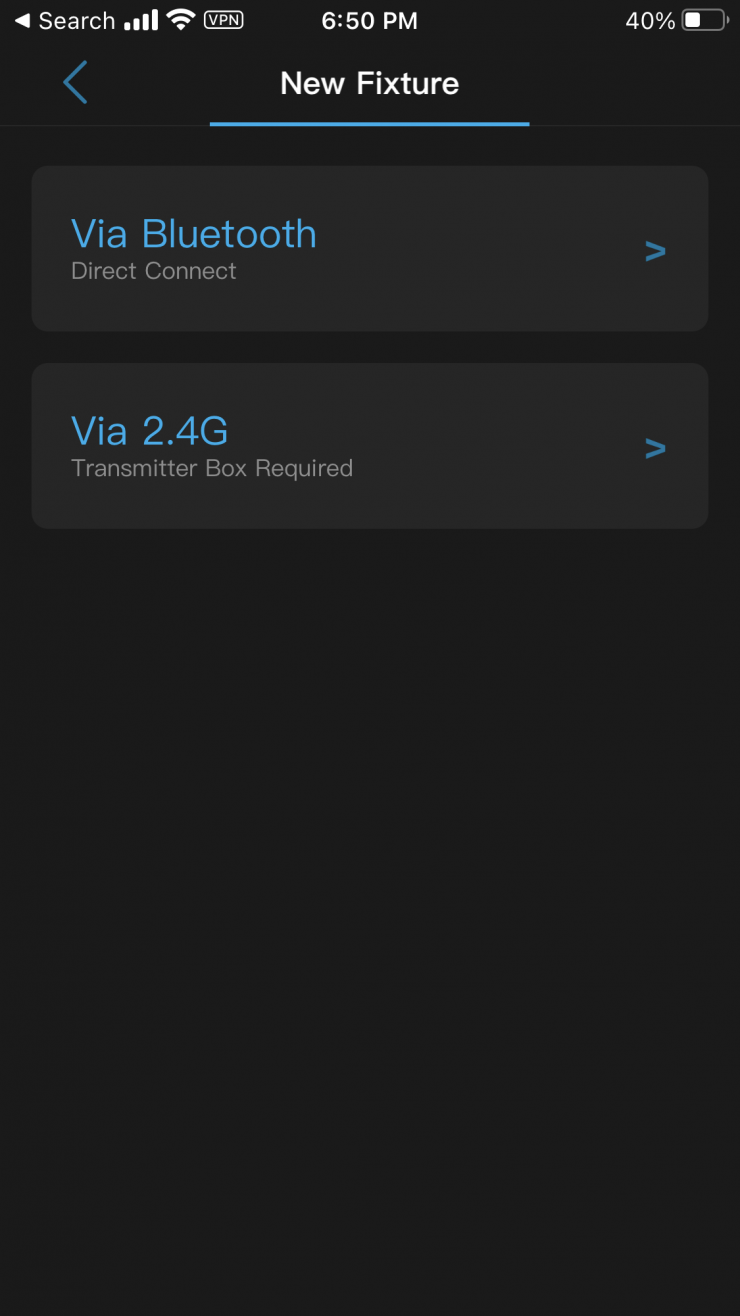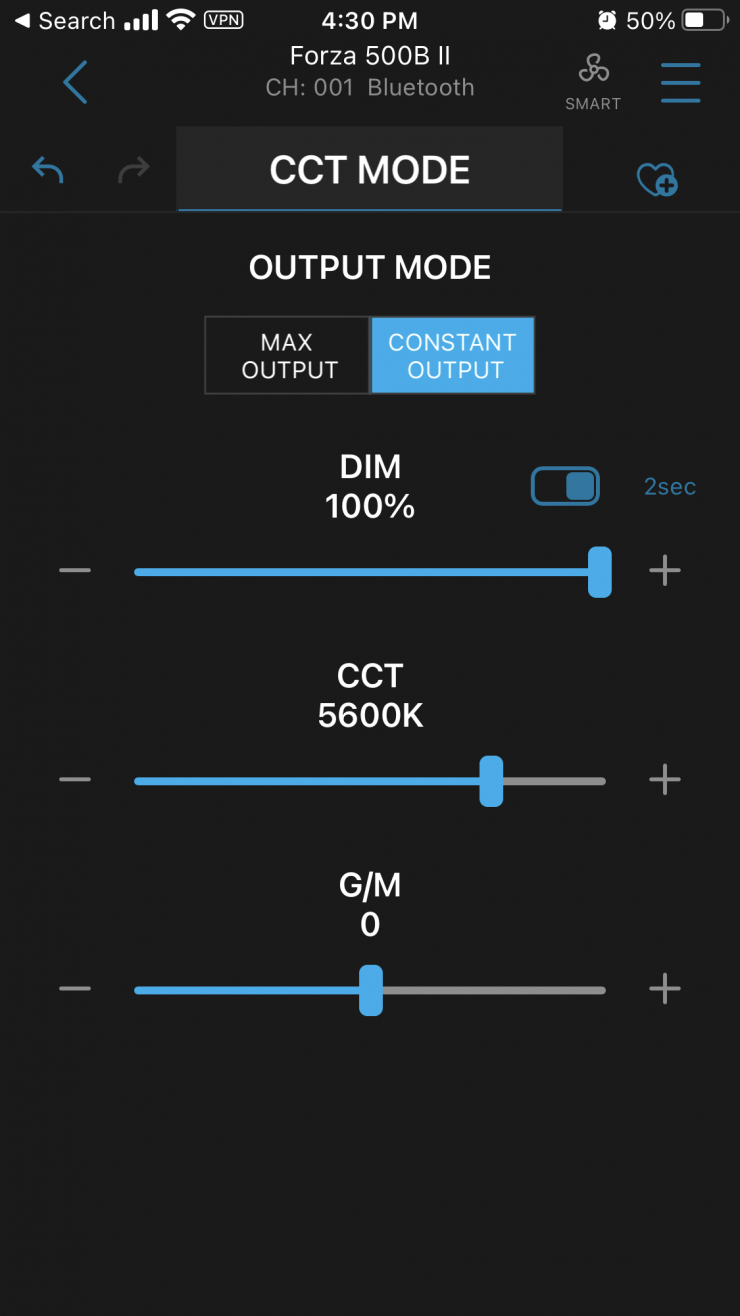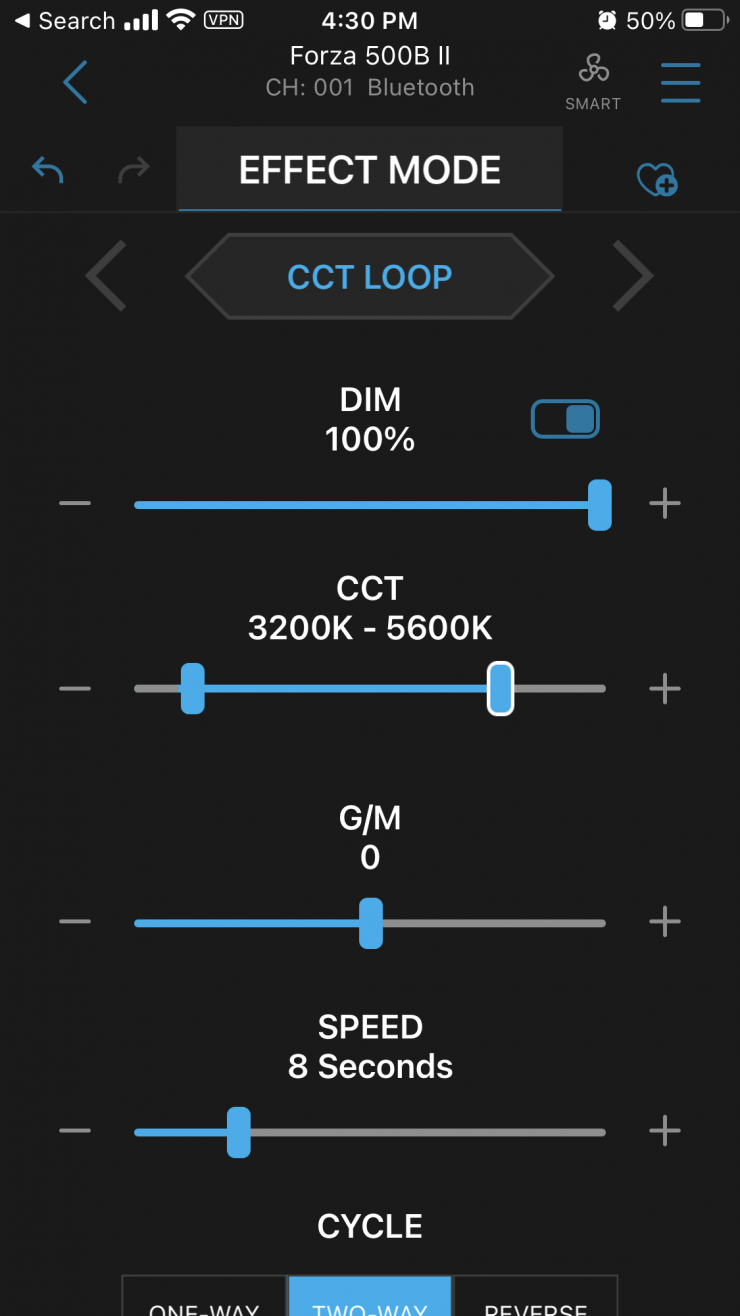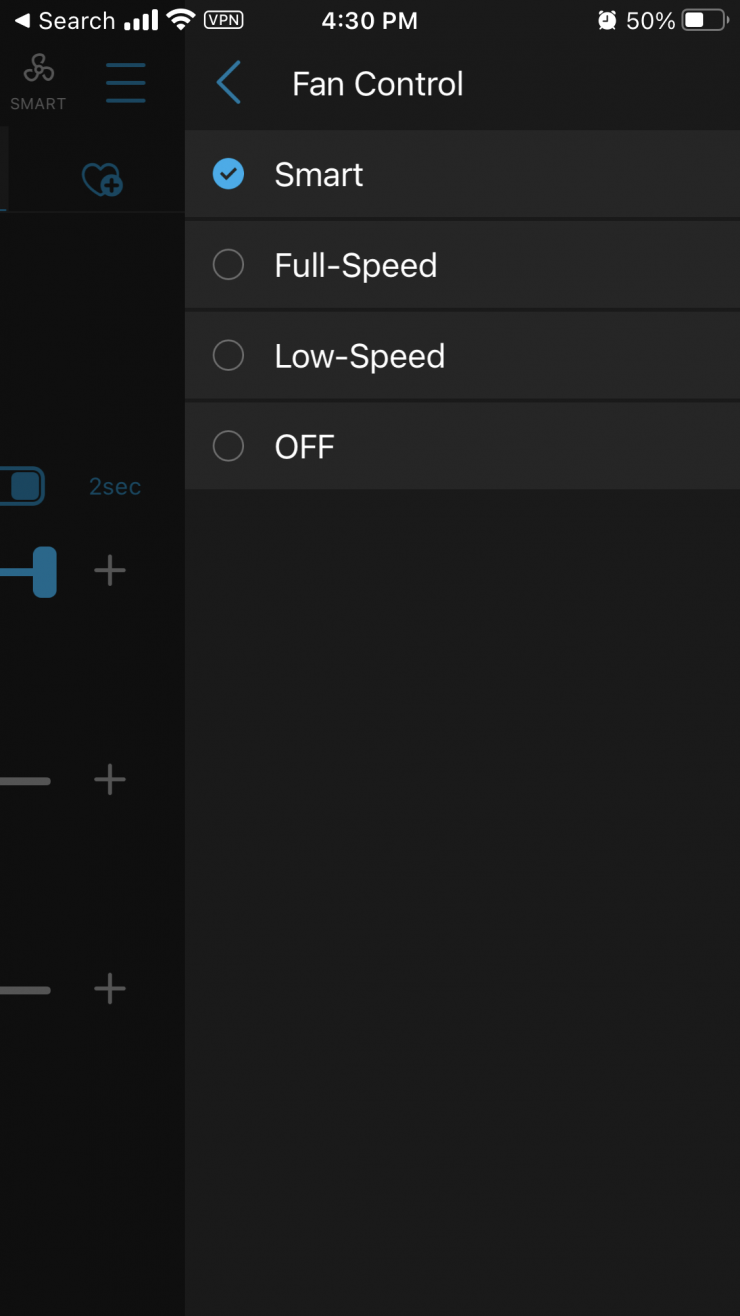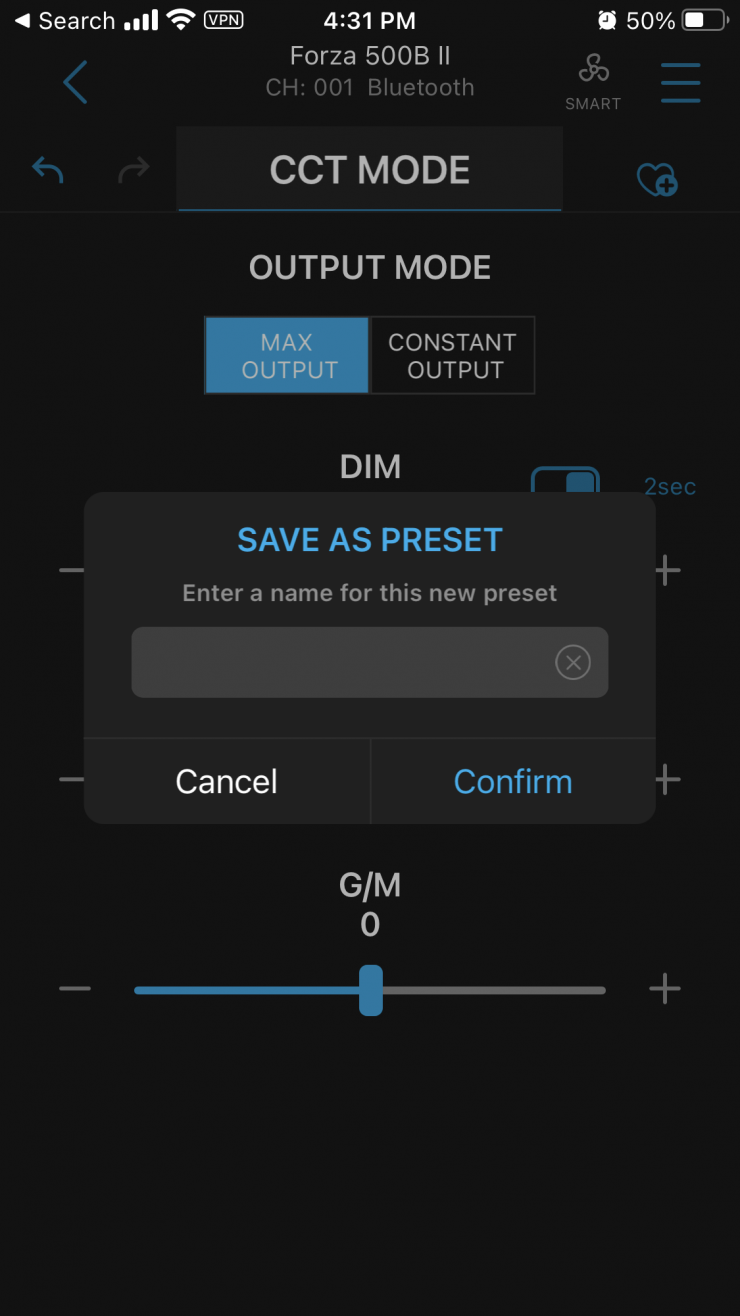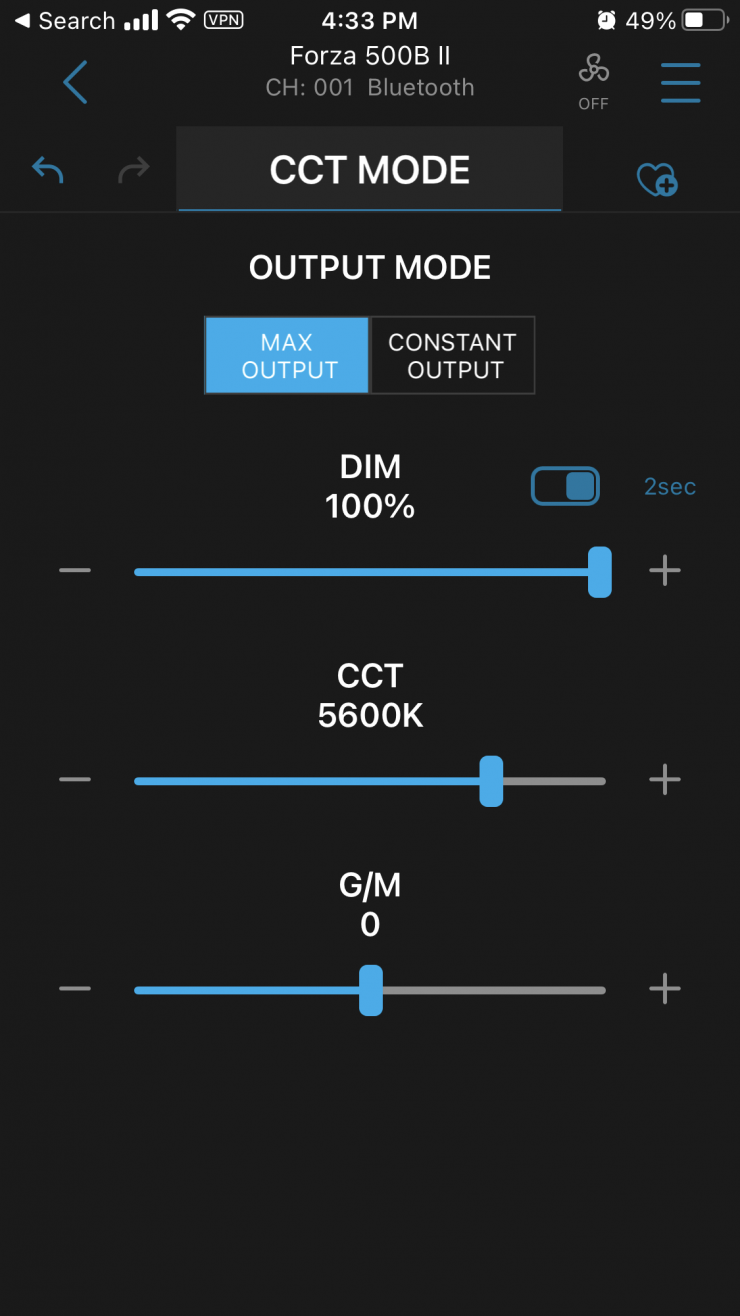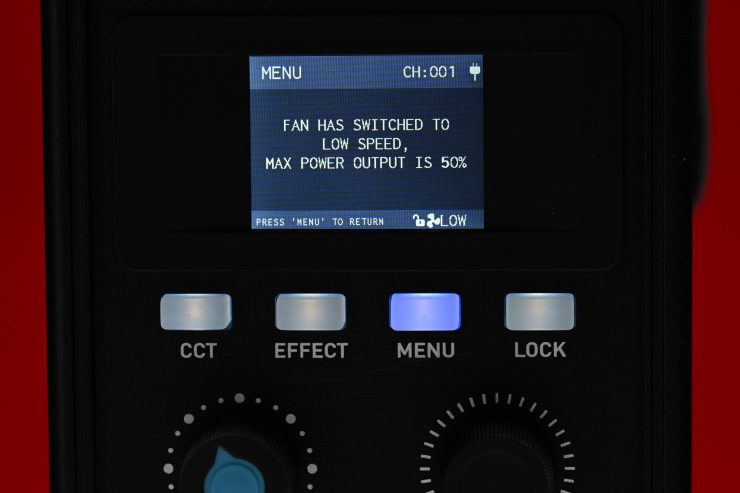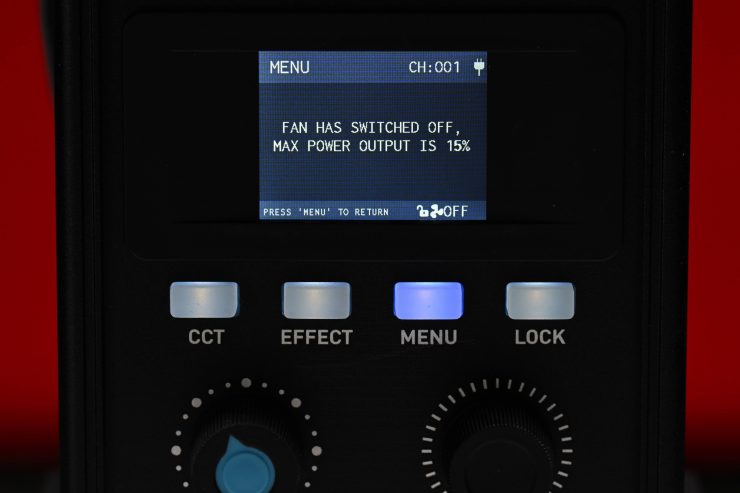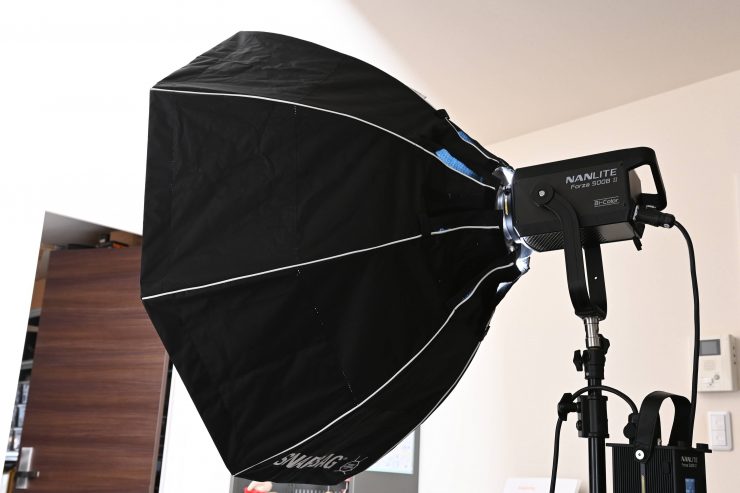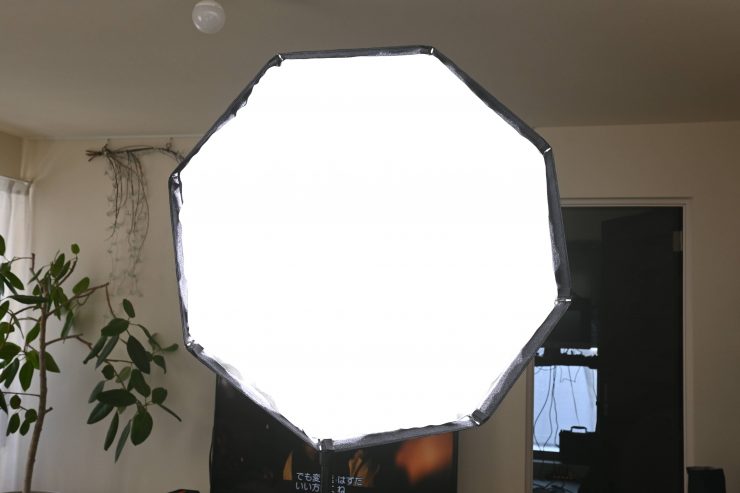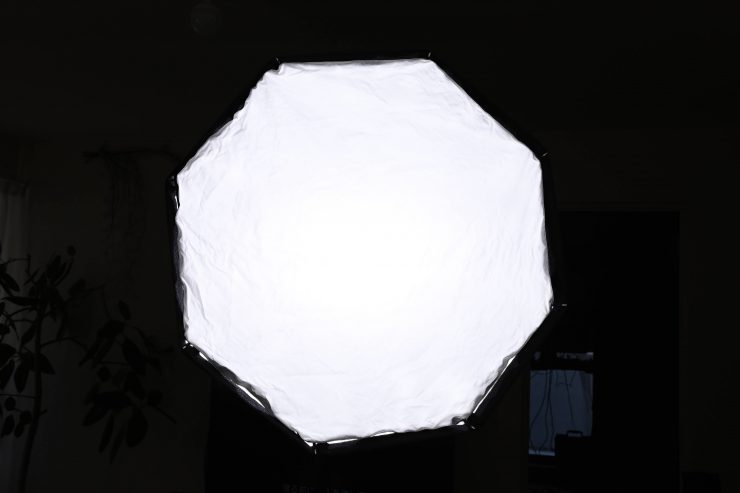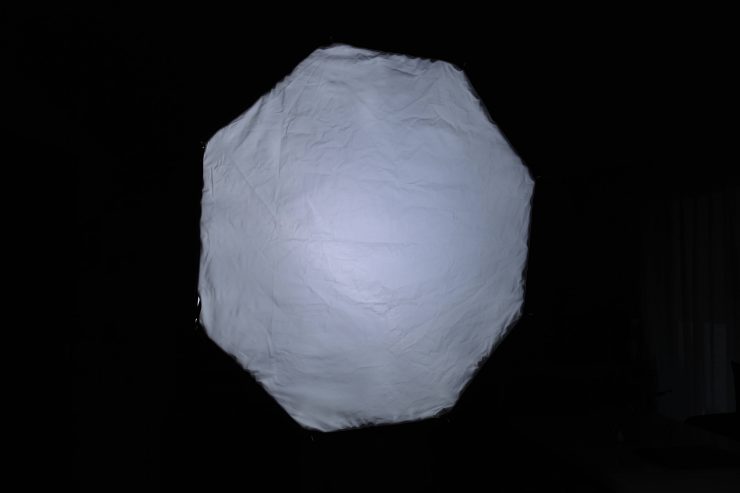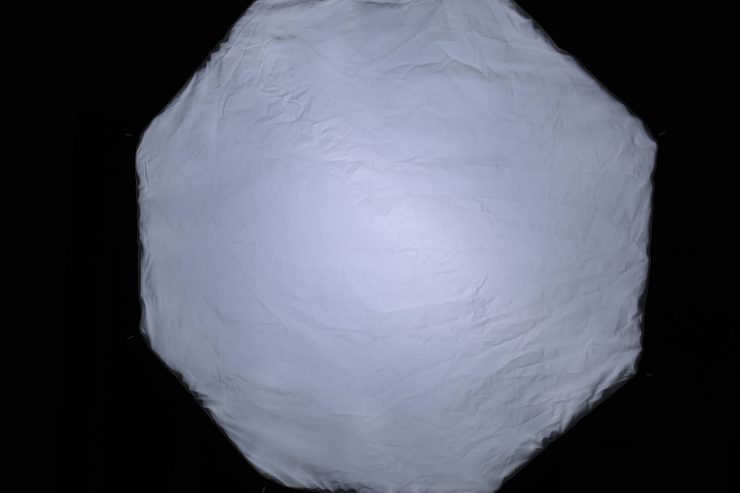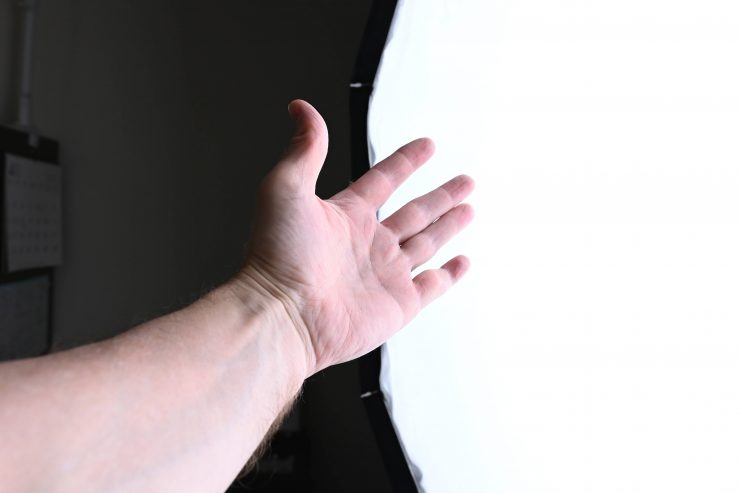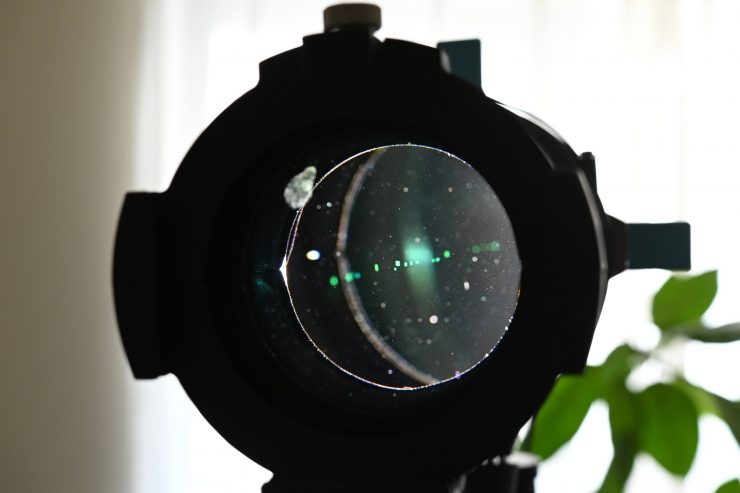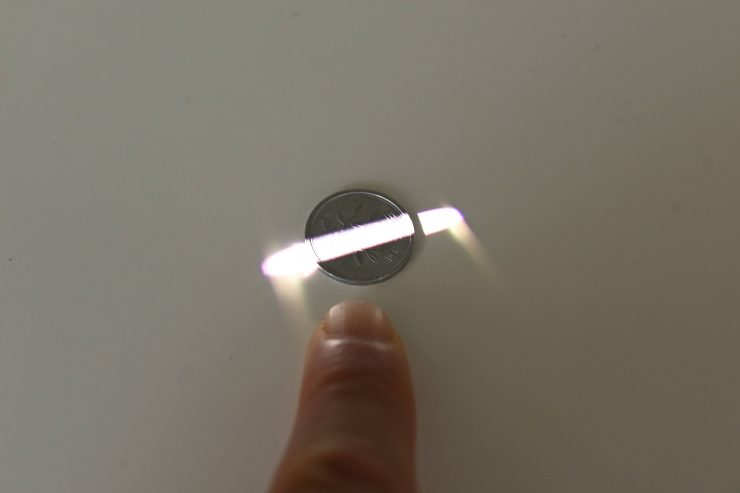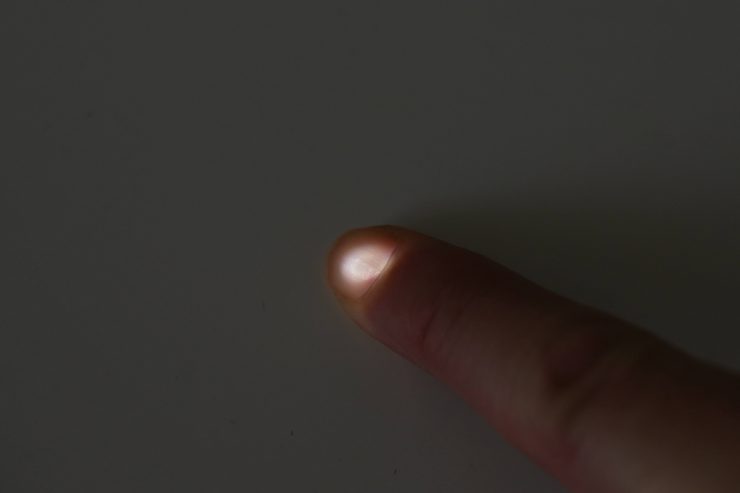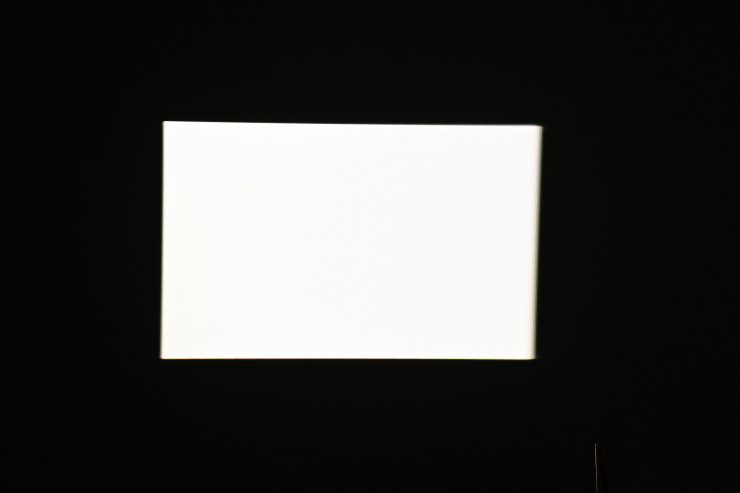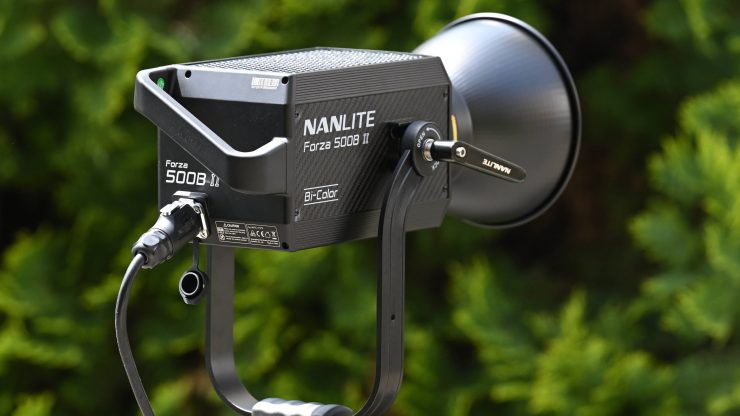
Back in January Nanlite announced its new Forza 500B II, as well as a host of other new fixtures in the range. The Forza 5600B II is a 580W Bi-color LED Spotlight with a CCT range of 2700K-6500K. Essentially it is a direct competitor to lights such as the Aputure LS 600x and the Godox Knowled M600Bi Bi-Color LED Monolight. The Forza 500B II and these other two options share very similar feature sets and specifications.
Key features
- Designed for Studio & Film/TV Productions
- 2700-6500K CCT, Green-Magenta Adjustment
- AC or Optional Battery Power
- CRI 96, TLCI 97
- Onboard, DMX, App Control
- 12 Special Effects & OLED Screen
- Active Cooling, Four Fan Modes
- 5/8″ Receiver & Bowens Mount
- Includes Reflector, Control Unit & Bag
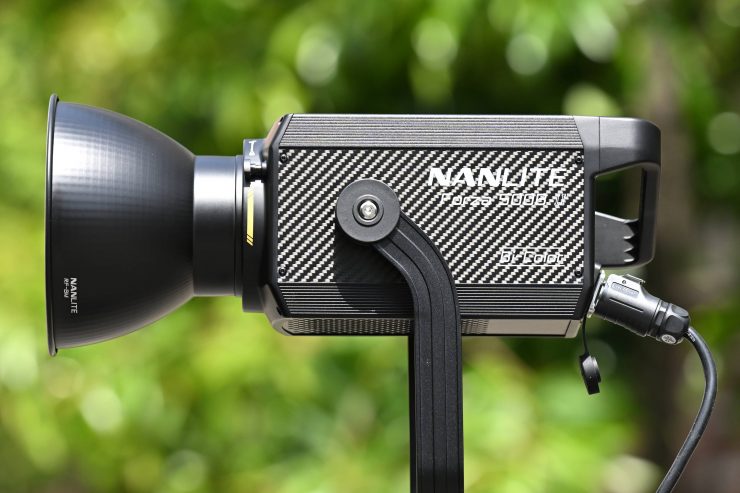
Just like the rest of the Forza II series, the Forza 500B II was designed as a versatile and professional lighting fixture that is color accurate, powerful, and easy to use. COB spotlights that draw around 500/600W have arguably become more popular than 300W versions over the last few years.
As I have mentioned numerous times before, versatile COB lights in this form factor have become increasingly popular due to their swiss army knife style abilities, which enable them to be used for a variety of lighting scenarios. This is why we have seen so many of them being introduced over the last few years and why there are so many options to choose from and why lighting companies continue to make them in large numbers.
The Nanlite Forza 500B II certainly looks to be a worthy competitor to lights from both Aputure and Godox.
Concept
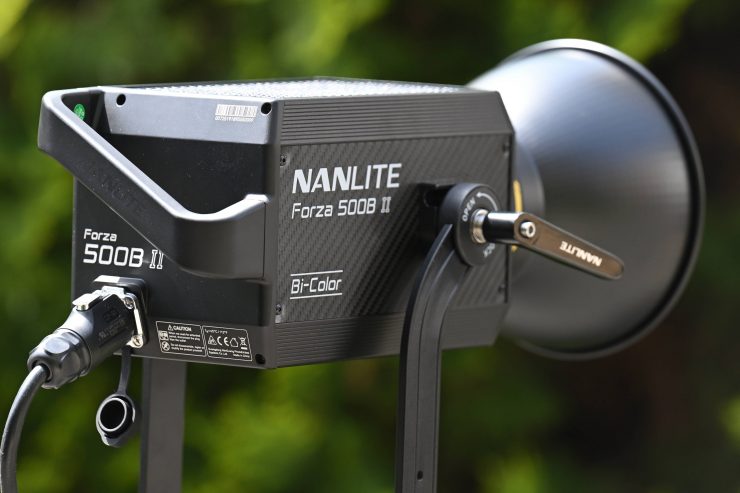
The concept behind all of these LED spotlights, whether they are daylight, bi-color, or full color, is to make a very flexible, fully-featured lighting source that is reasonably priced and offers good bang for your buck. The biggest problem with this concept is that so many lighting companies are doing the exact same thing, that it is hard to make your product stand out. The quality of almost all LED fixtures has gotten to a point where it is very hard to find a bad light.
Bowens Mount fixtures like the Forza 500B II enable you to use a ton of very affordable lighting modifiers. This is another reason why they are so popular. Having the ability to swap around lighting modifiers from one light to another saves a lot of money.
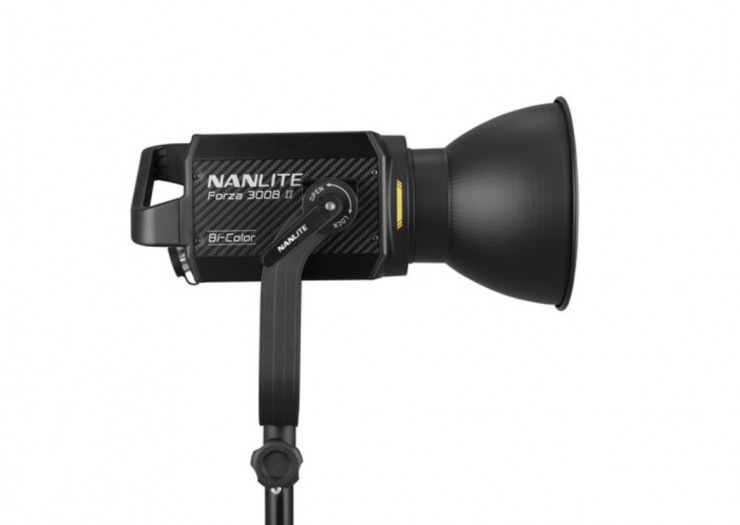
Appearance-wise, the Nanlite Forza 500B II looks very similar to Nanlite’s own Forza 300B II.
Build Quality
The build quality of the Nanlite FORZA 500B II is good and it is in line with other competing products at this price and with a similar feature set. The housing is reasonably robust and everything is solidly made.
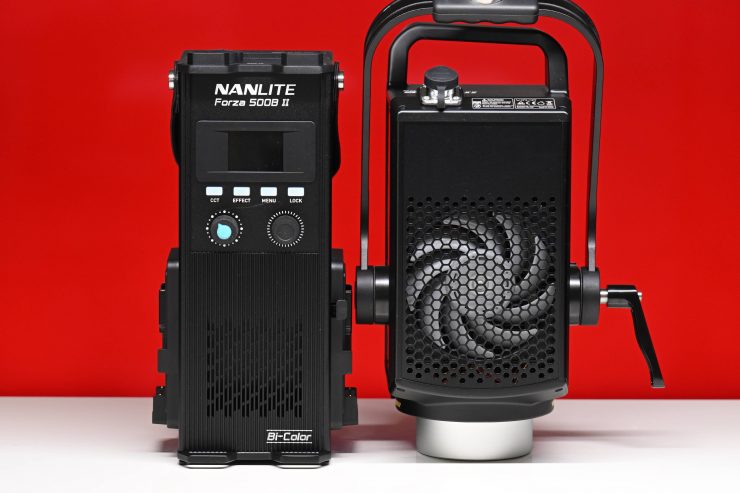
The Forza 500B II features a separate power supply/controller which is fairly common with most lights with his type of power draw.
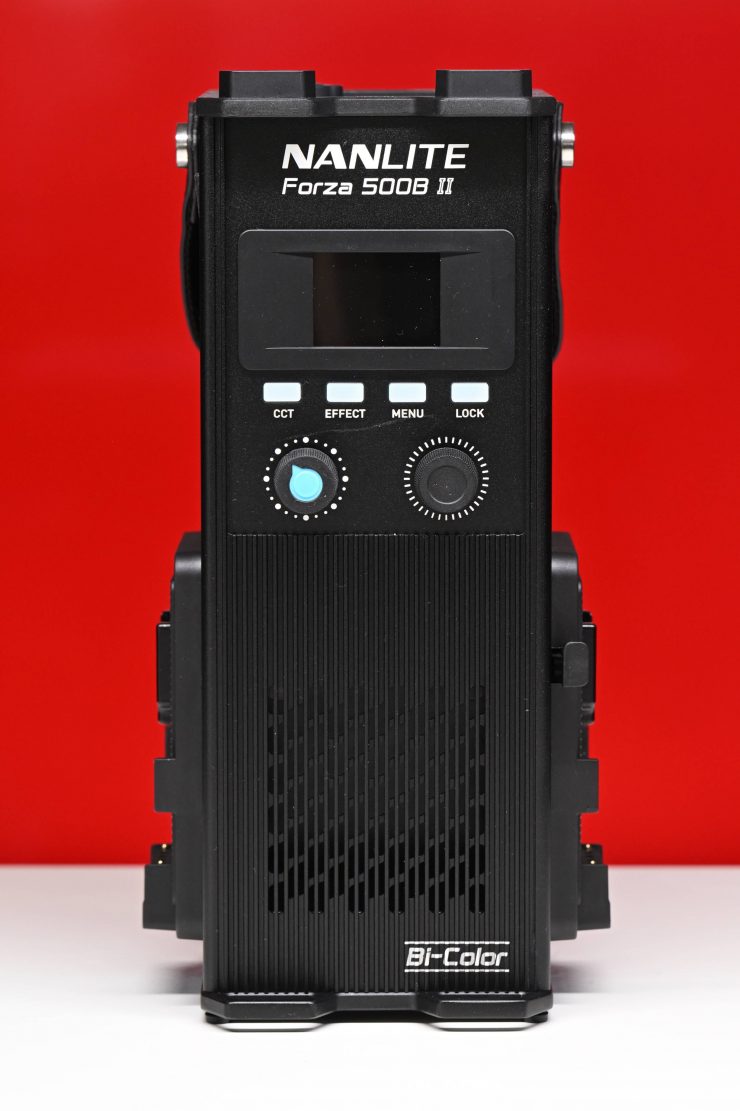
The power supply/controller is also nicely made, and again, I couldn’t find any flaws or problems with it.
The yoke frame locks down securely when tightened and it is nice to see a well-made locking system that is very robust.
The locking mechanism for where you attach the yoke frame to a light stand is nice and solid and there are two mounting holes so you have the flexibility of being able to place the light in various configurations on a lightstand.
The light comes with a limited 2 Year Warranty which can be extended to 3 years by registering online.
COB Design
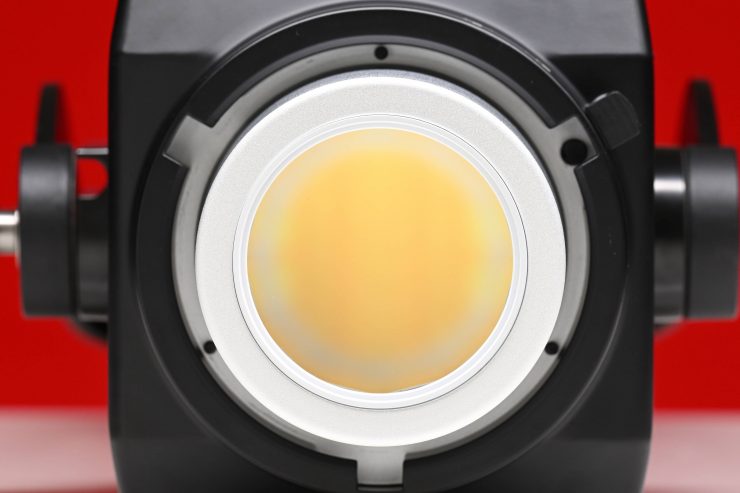
Lots of LED lights on the market are using COB technology. COB stands for “Chip On Board” where multiple LED chips are packaged together as one lighting module. The advantage of COB LEDs being multi-chip packaged is that the light-emitting area of a COB LED can contain many times more light sources in the same area that standard LEDs could occupy. This results in a greatly increased lumen output per square inch. The biggest disadvantage of a COB LED is that it generates a lot of heat.
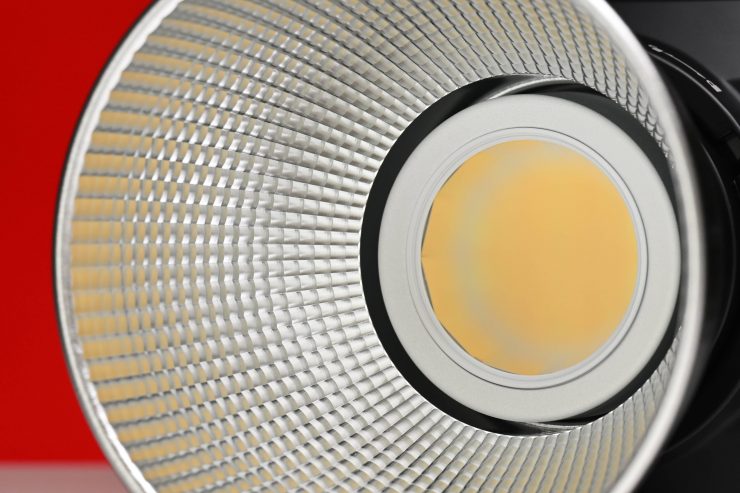
The Nanlite Forza 500B II’s light engine sits right on the heatsink and the LEDs are actually sitting inside a mirrored reflector. This is different from how most COB LED lights are designed. The light actually gets projected through a diffused surface instead of just coming straight out like most COB spotlights. Why would you want to do this? Well, I am glad you asked. The whole idea is to create a single light source and by having the light projected through a diffused surface the Forza 500B II works really well with projection attachments and it is really bright given its size and power draw.
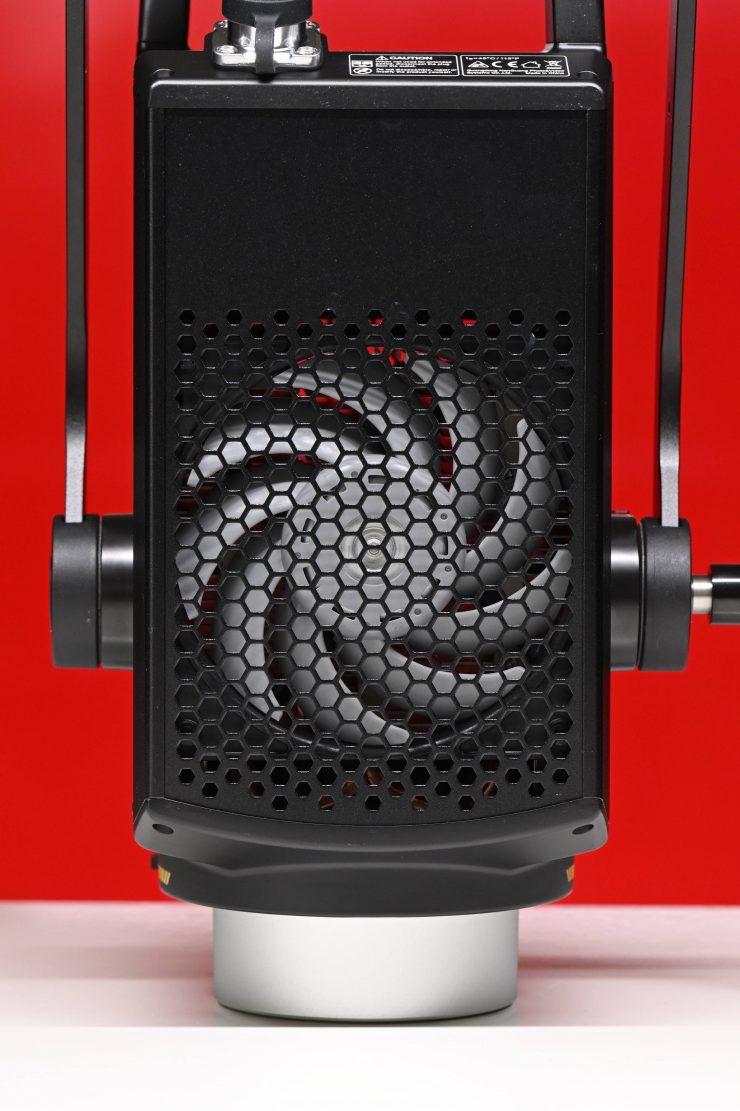
The fixture does feature a decent-sized fan that is on the underside of the light.
The biggest problem with COB LED lights is that unless you diffuse them they are very bright to look at and unsuitable for directly lighting talent.
Weight & Size
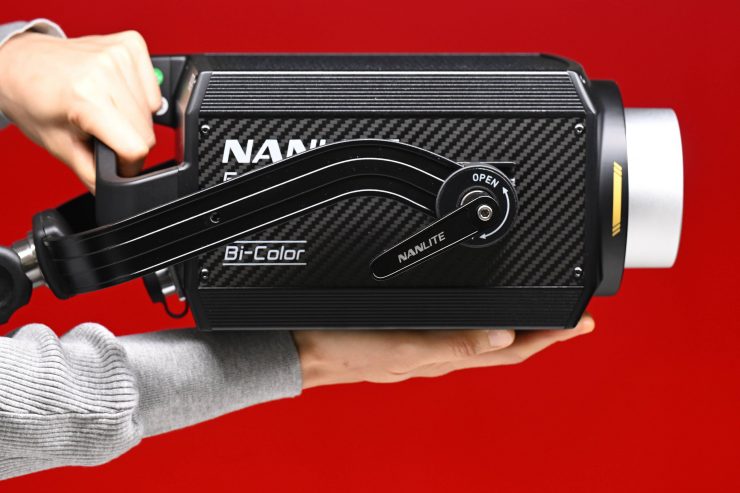
The Nanlite Forza 500B II tips the scales at 17.41 lb / 7.9 kg (including the power supply/controller). This makes it reasonably lightweight for a fixture of this size and power draw that can be run via camera batteries.
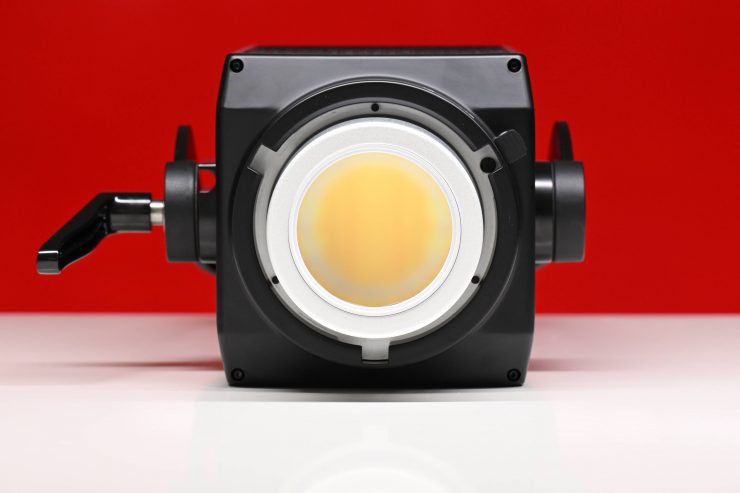
The nice aspect about the fixture only weighing 17.41 lb / 7.9 kg, is that it makes it a good option for anyone who needs to travel with the least amount of weight possible but still requires a light with plenty of punch.
| WEIGHT | |
| Nanlite Forza 500B II | 17.41 lb / 7.9 kg |
| Aputure LS 600x | 22.15 lb / 10.05 kg |
| Godox Knowled M600BI | 19.18 lb / 8.7 kg |
| CAME-TV Tioga Series 660W Bi-Color | 23.12 lb / 10.49 kg |
| SmallRig RC 450B | 18.82lb /8.54 kg |
How does the weight compare to some other competing lights? Above you can see. This is where the Nanlite Forza 500B II has an advantage over other fixtures with a similar power draw as it weighs less.
CCT range
The Forza 500B II has a CCT range of 2700K to 6500K. This is a decent enough range and it will suit most people’s needs.
+/- G/M Correction
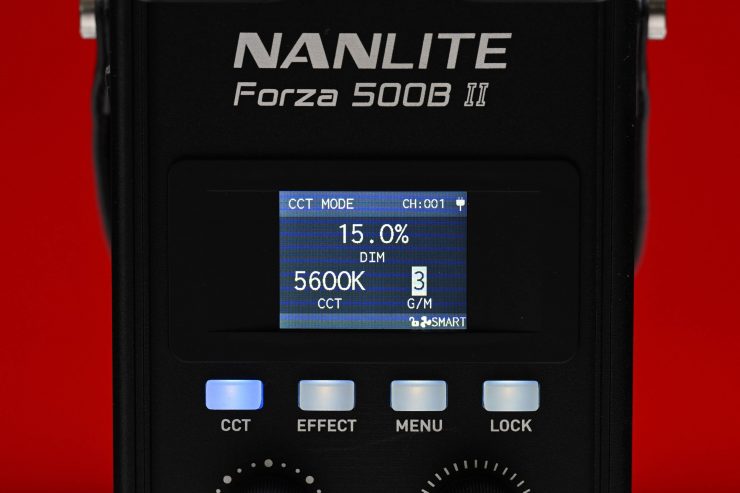
It is nice to see +/- G/M correction on the Forza 500B II. This is always a handy feature to have on a light because it can help you when you are trying to match other fixtures or when working in environments where you need to try and match available light sources.
To my knowledge, this is the only 500-watt bi-color spotlight that has the ability to adjust the green-to-magenta shift by +/- 80. This is only possible because Nanlite is using a WW(RG) LED source and light-mixing chamber.
Beam Angle
The beam angle of the fixture, when used open face, is 120°. If you use it with the included reflector it is 55°.
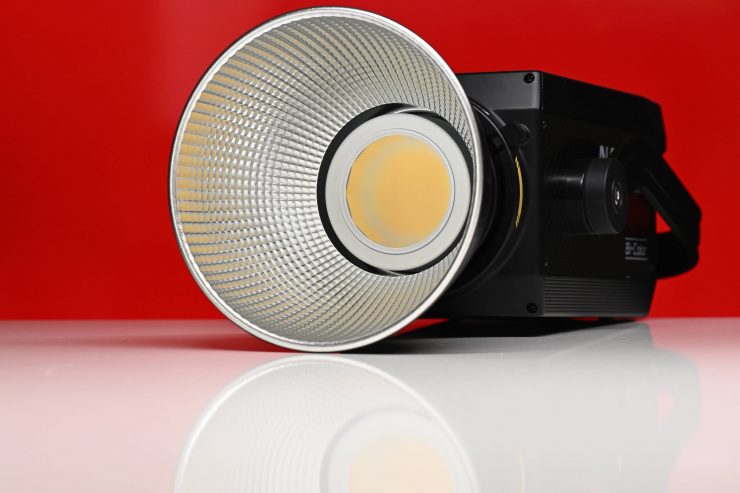
The included reflector is similar to what you would find on a lot of Bowens mount spotlights.
Mounting
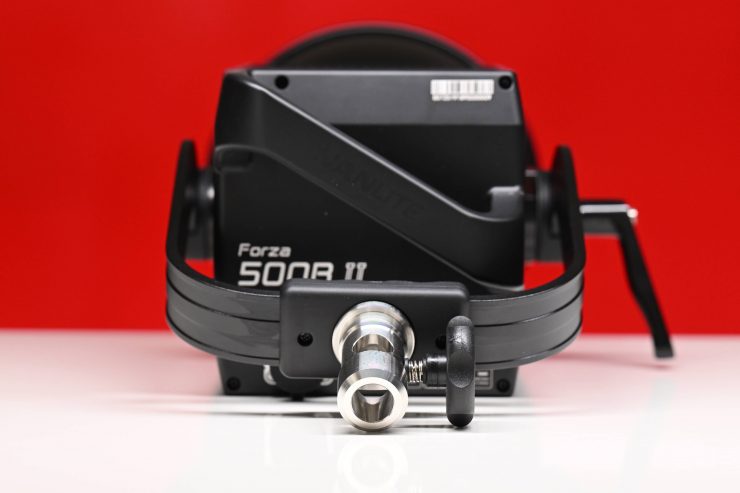
The Nanlite Forza 300B II comes with a traditional two-sided yoke frame, but it only has a locking mechanism on one side.
There isn’t a lot of clearance and the power cable will end up hitting the yoke frame if you try and tilt the light up too much.
You do get a clamp attachment in the kit that allows you to mount the power supply/controller to a light stand, etc.
Power Draw
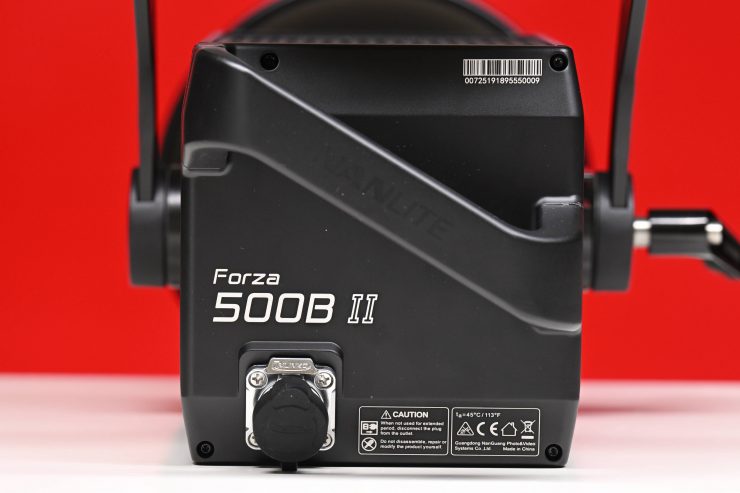
| POWER DRAW | |
| Nanlite Forza 500B II | 580W |
| Aputure LS 600x | 720W |
| Godox Knowled M600BI | 730W |
| CAME-TV Tioga Series 660W Bi-Color | 660W |
| SmallRig RC 450B | 499.8W |
The power draw of the Forza 500B II is 580W. Above you can see how this compares against the competition. 580W is actually lower than a lot of the competition.
The control box has the power adapter incorporated inside, this reduces the overall control unit size of Forza 500B II. There are V-mount battery plates on both sides of the control box. Nanlite doesn’t offer an AB Gold mount version, but you could buy a third-party Gold mount to V-mount conversion plates if required.
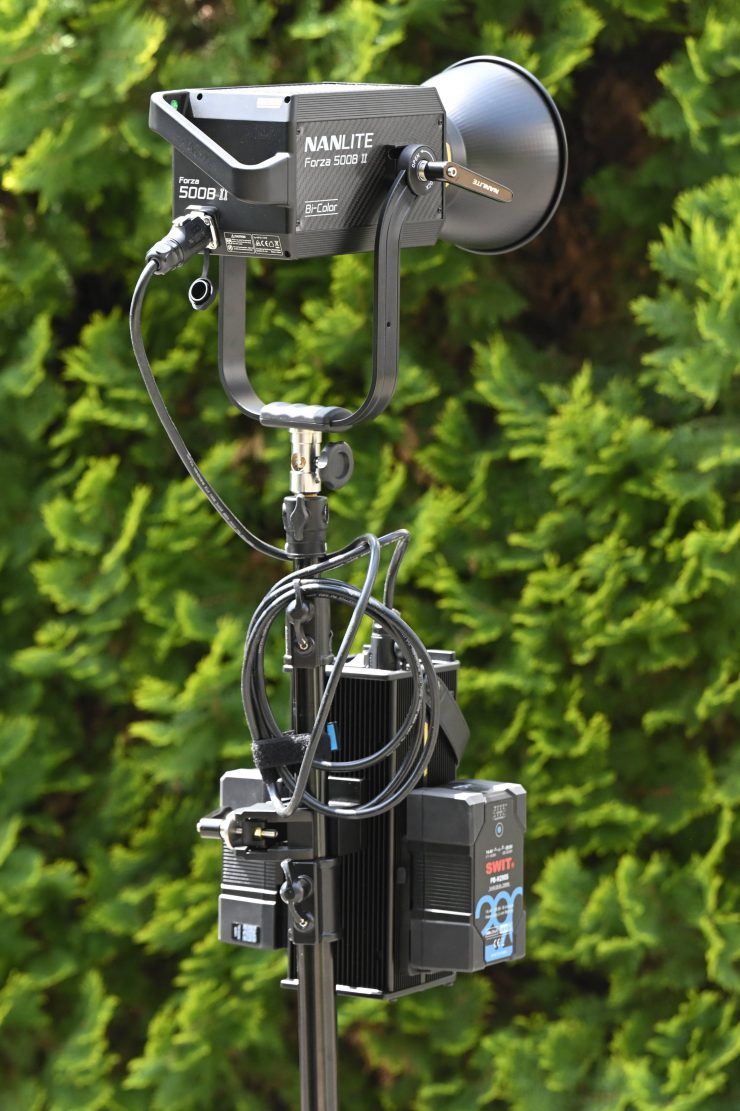
Dual 26V or 14.4V-14.8V batteries can be used. If you don’t use 26V batteries then the maximum output is capped at 60% for 14.4V-14.8V batteries. What you have to be mindful of with high-power draw spotlights is that if you want to run them remotely you are going to need high-capacity, high-draw batteries.
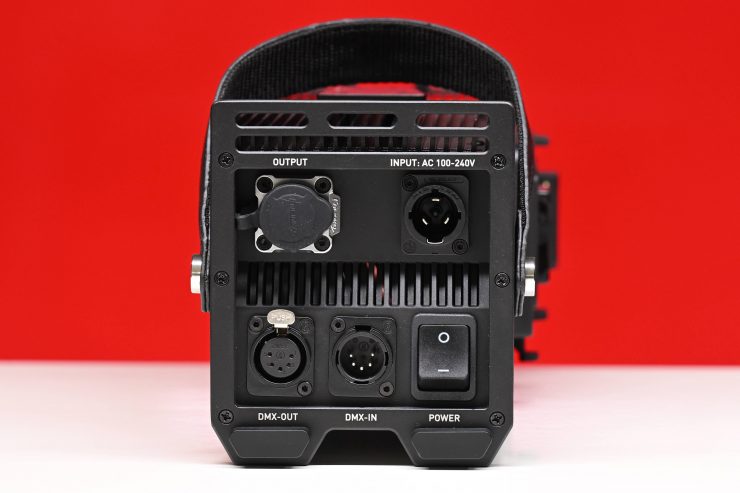
The power supply has both DMX-In and DMX-Out.
Mount
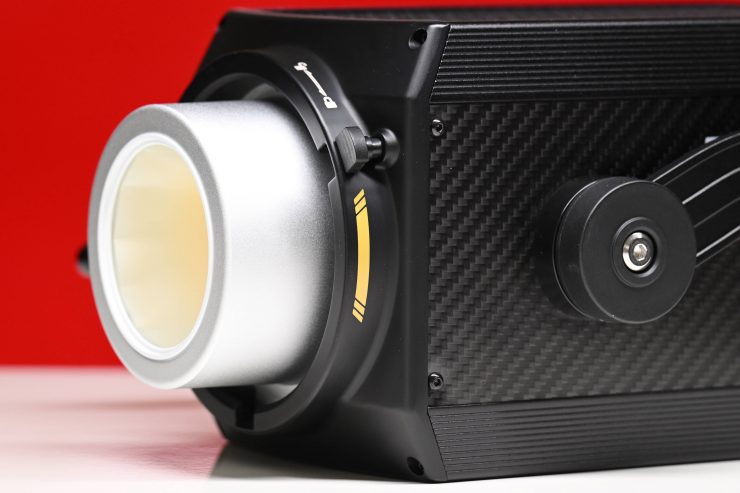
Like most COB spotlights, the Nanlite Forza 500B II utilizes a Bowens mount. This allows you to use readily available lighting modifiers and accessories that you may already own. Nanlite also makes a lot of accessories that you can use.
Controls & Menu System
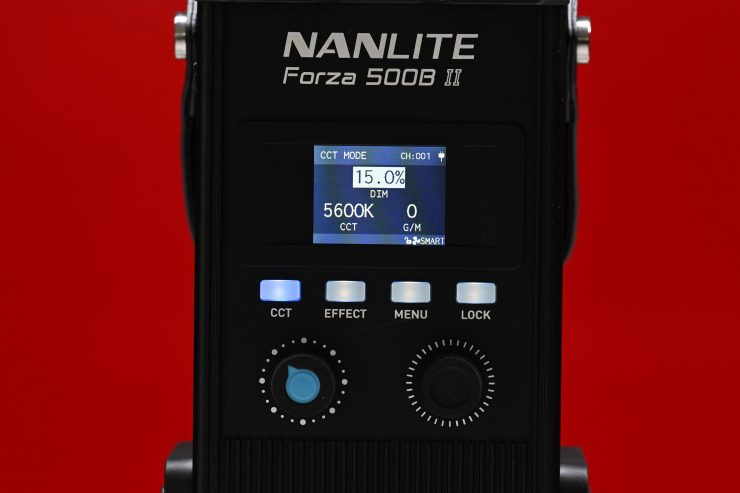
The LCD screen on the power supply/controller looks similar to what you would find on most of the Nanlite products. Although it is fairly basic, it does clearly show you key information about the light’s operating modes, brightness, CCT, etc. This is where I would like to see Nanlite improve. While there is nothing wrong with the display and operation, it does feel a little old school.
With a good light, you shouldn’t have to read a manual to work out how to operate it. You should be able to turn it on and use it straight away.
In the menu, you can adjust quite a few settings, such as the DMX, fan, etc. The menu is reasonably intuitive, and it is easy enough to make changes to items that you need to adjust.
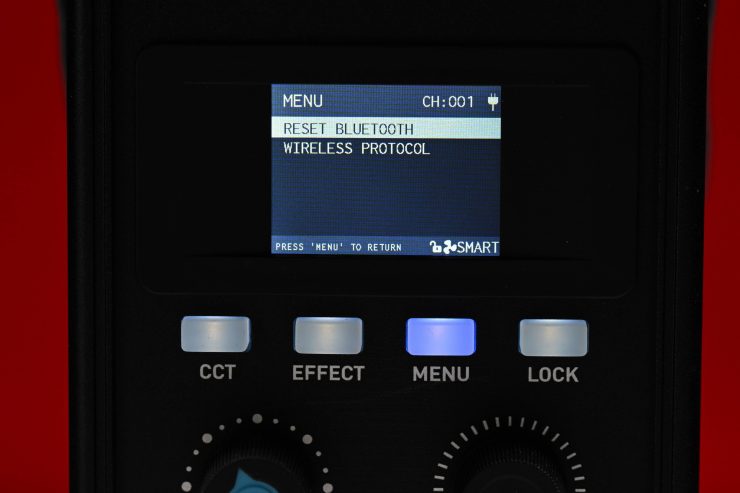
As well as being able to adjust certain parameters and modes on the light itself, you can also use the NANLINK Bluetooth app. Additionally, 2.4GHz provides control through the separately-available WS-TB-1 transmitter box for more elaborate setups, or with hardware remotes like the NANLINK WS-RC-C2. DMX/RDM control is also supported for advanced users.
Operating Modes
The light has the following lighting modes that you can access from the fixture:
- CCT
- EFFECT
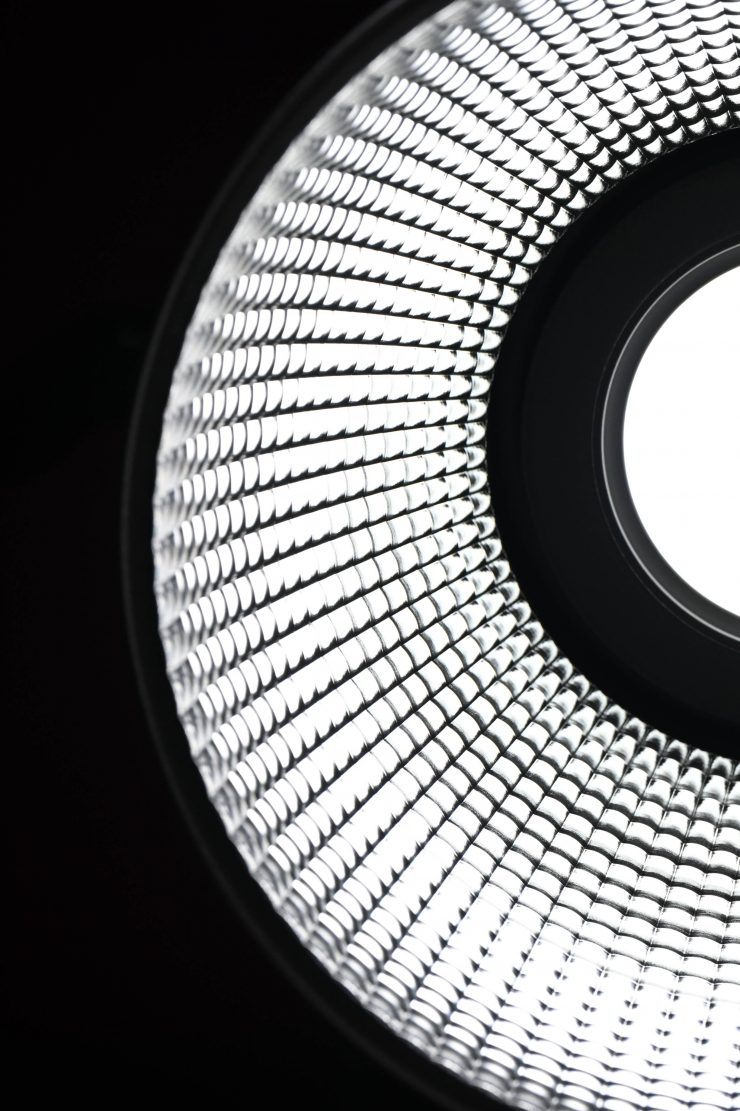
The light features a Maximum Output Mode and a Constant Output Mode
and Nanlite claims that there isn’t any CCT shift from 2700K-6500K in either mode. I will test that claim later in the review.
Effects
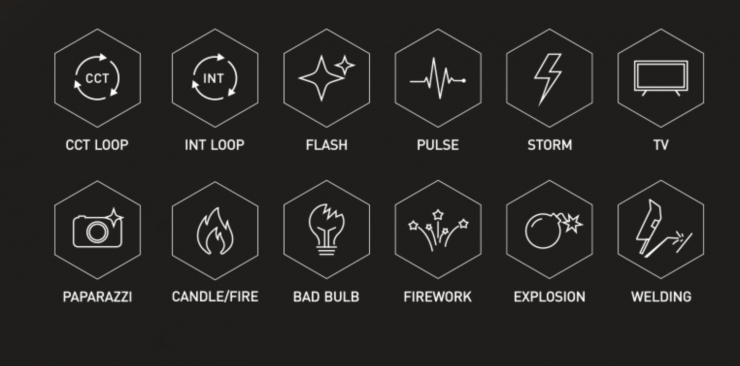
The Effects mode lets you recreate a wide range of lighting effects that can be handy for certain scenarios. You can see what effects are available above.
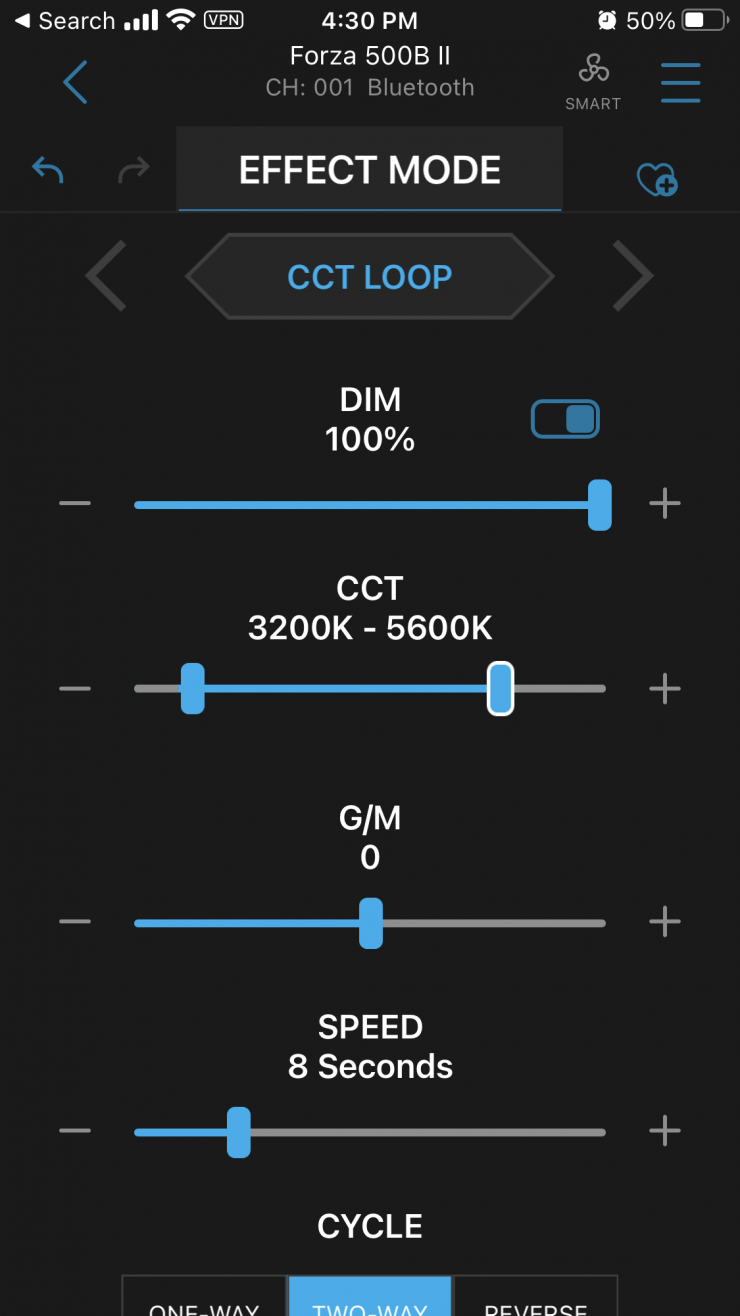
All the effects modes can be individually adjusted, and you change the Speed and Cycle.
Bluetooth App
The light can be controlled via Bluetooth using the NANLINK App. It is relatively easy to connect up a light and get started. All you need to do is tap on add a fixture and then choose how you want to connect.
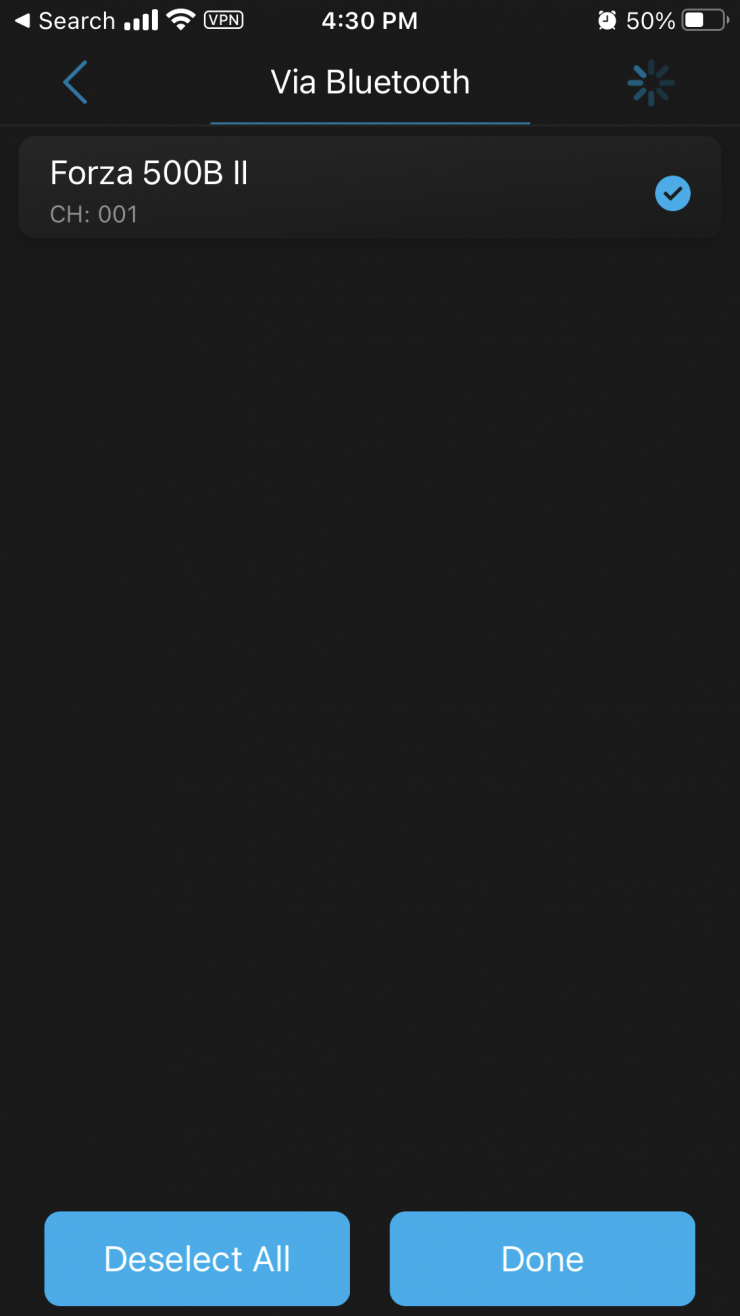
For this example I chose Bluetooth and the app will search for available Nanlite fixtures.
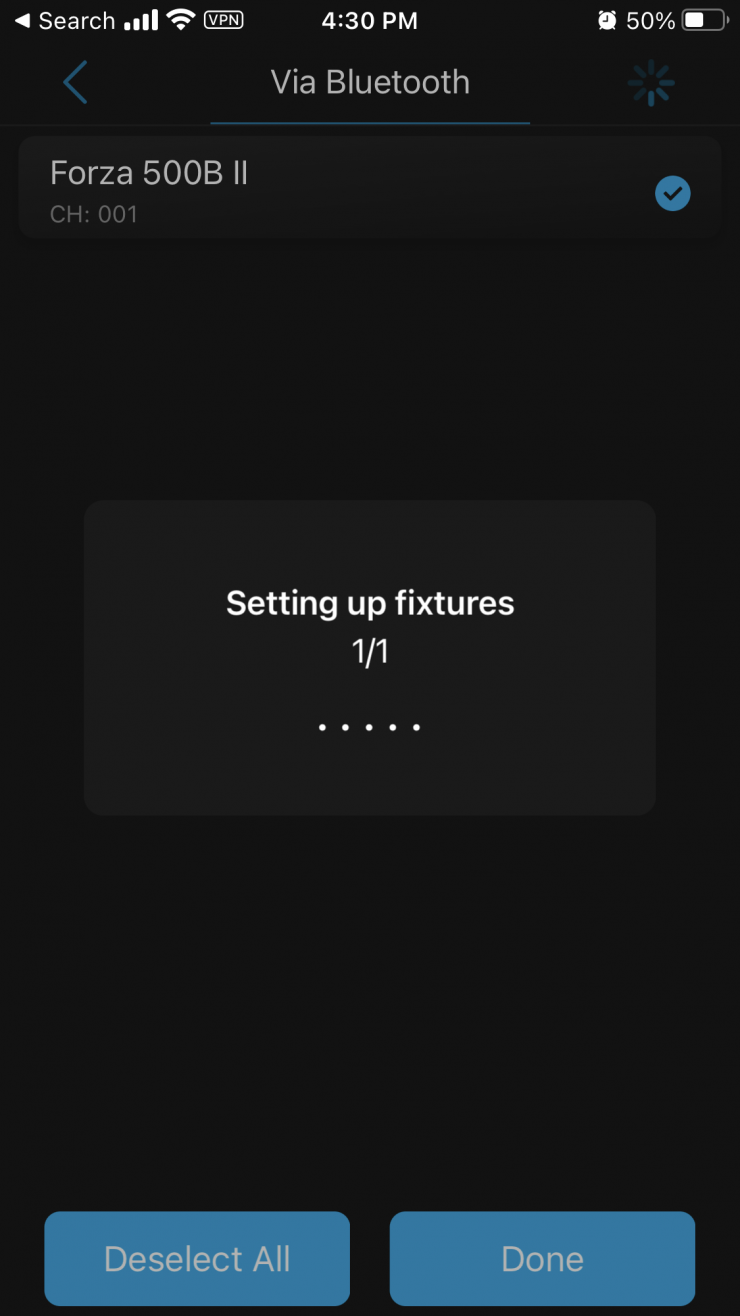
Once you select the fixture you want to add, it takes about 5-10 seconds for the app to configure everything.
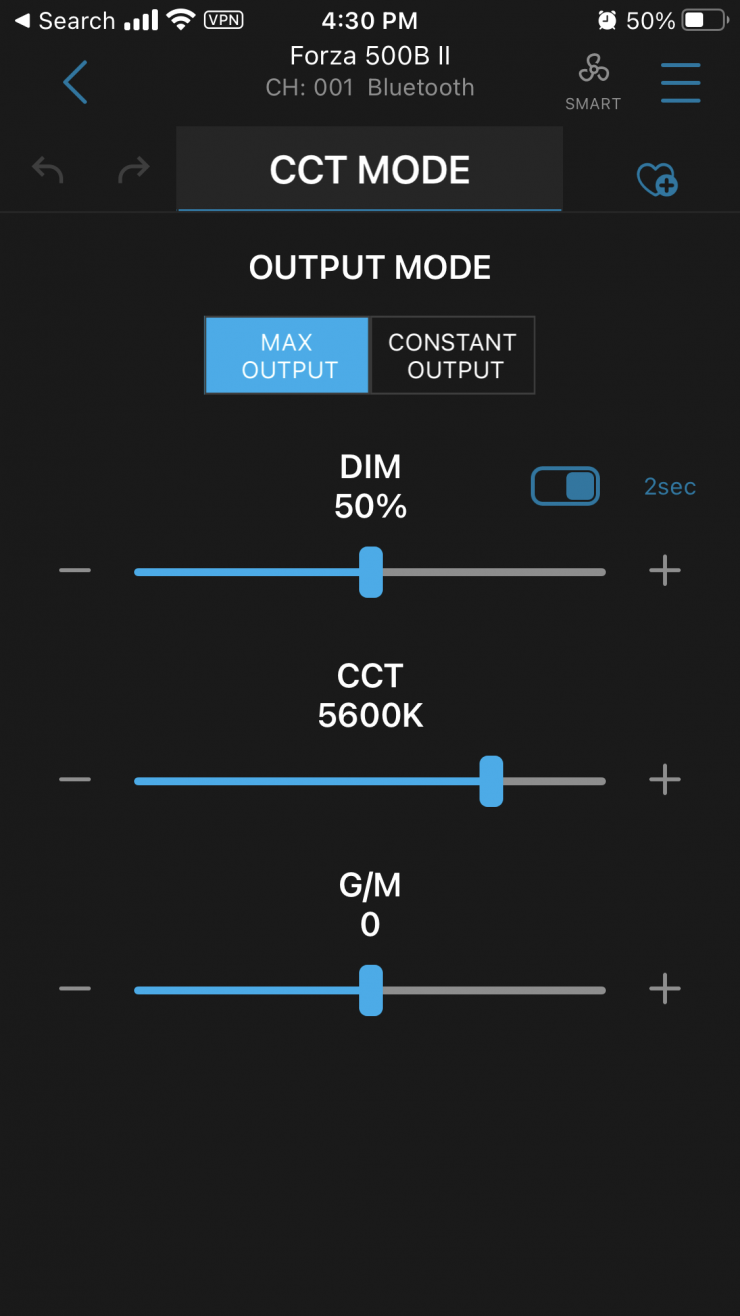
Once the fixture is set up you can see that it has been added to the scene page.
There is a range of parameters that you can adjust using the app, including changing the output, CCT, setting the fan mode, saving presets, and switching between constant and maximum output modes.
The app is straightforward and reasonably easy to use, however, they haven’t made it as intuitive or visually appealing as some other companies lighting control apps. This is something I would like to see Nanlite work on.
The only other downside when using the app is that when you make changes they don’t happen instantaneously, there is a very slight delay.
How does it stay cool?
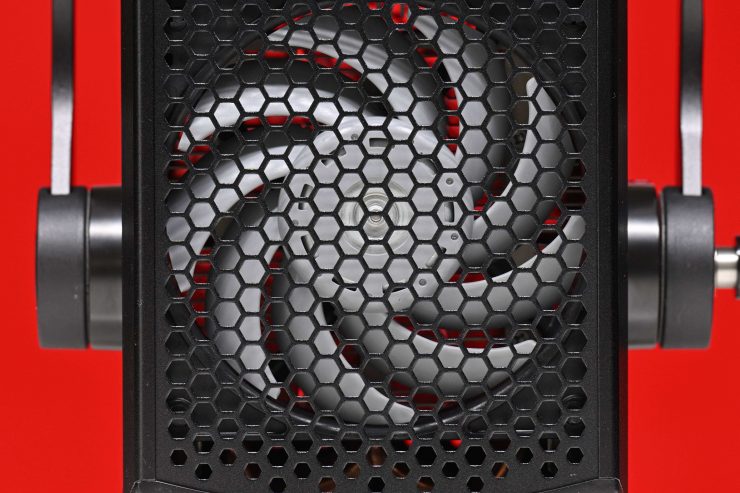
COB lights get very hot, and keeping them cool is not an easy task. The Forza 500B II, as I mentioned earlier in the review, does feature a large fan. To keep things cool you need to utilize a fan, but as we all know, the caveat with most fans comes in the form of unwanted noise.
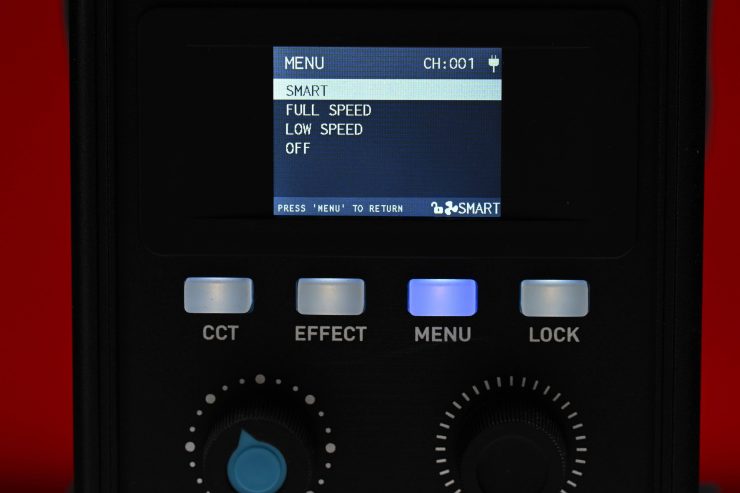
In the menu settings on the light, you have the choice of setting the fan in the following modes:
- Smart
- Full Speed
- Low Speed
- Off
If you set the fan to Low Speed the maximum output is capped at 50%. If you set it to Off it is capped at 15%. In Smart and Full Speed it can be used at 100% output.
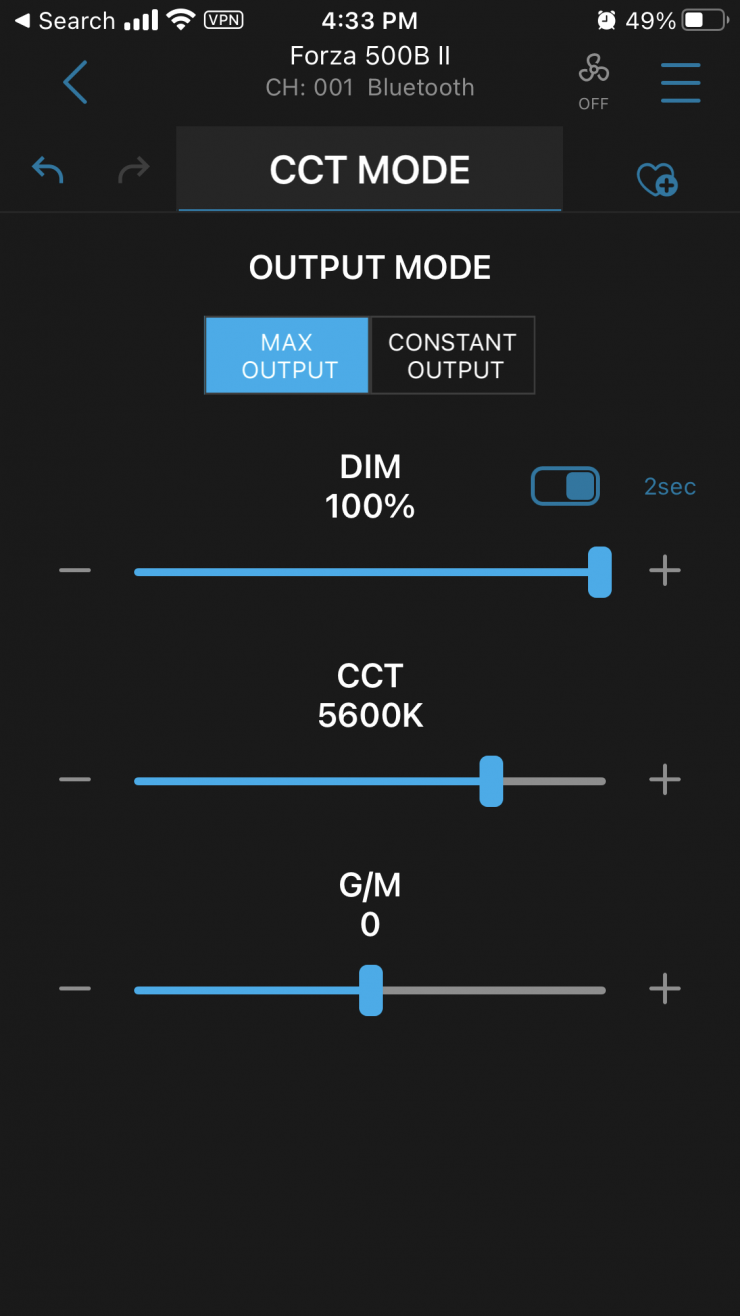
You can also control the fan settings using the NANLINK app. The trouble when doing this with the app, is that the intensity slider won’t show you the correct values. For example, if I turn the fan Off, the intensity slider still shows you values up to 100% even though the light is only at 15% output. This is where I think NANLITE needs to pay more attention to small details. Little quirks like this could easily be addressed by updating the app, but unfortunately, a lot of lighting companies release apps, and then very rarely ever update them. I keep mentioning these issues in every Nanlite review, but still nothing has been done about it.
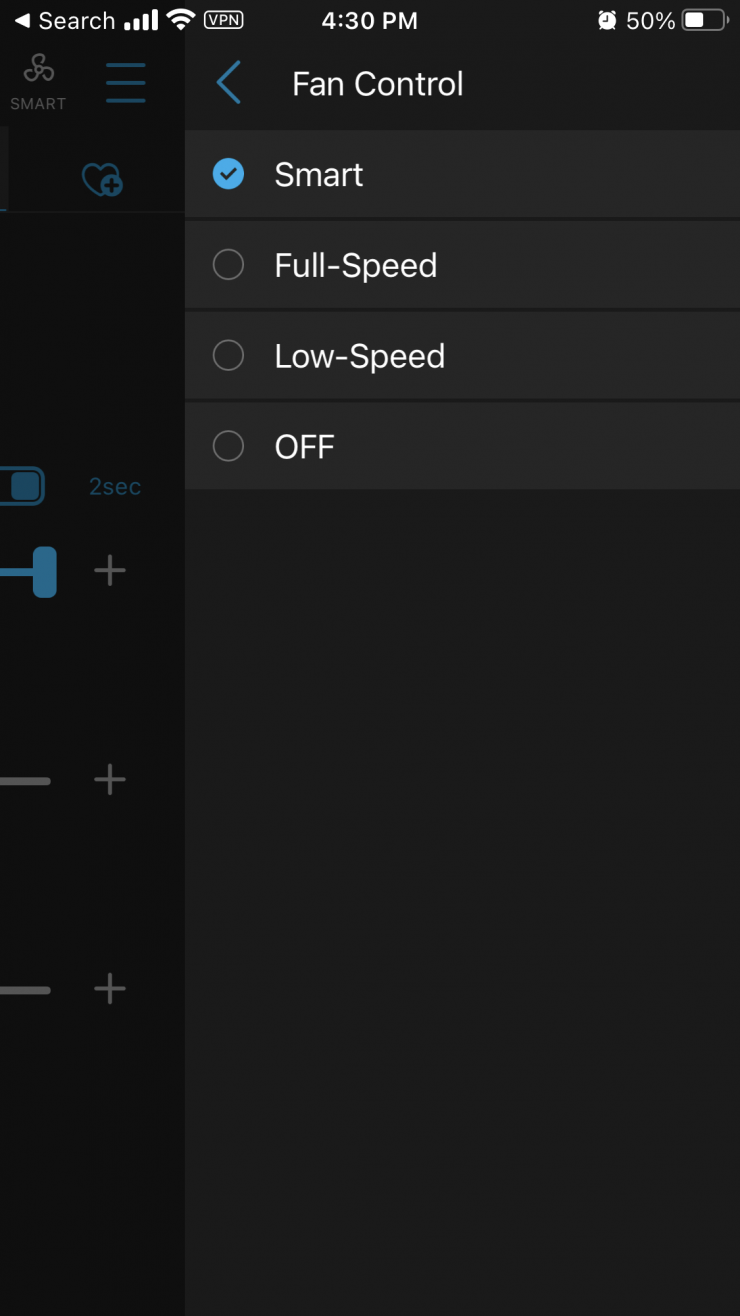
The fan in the light is relatively quiet when it is used in the Smart setting. I kept the light on for a considerable amount of time at 100% output and I could barely hear the fan. Nanlite appears to have done a really good job of limiting the fan noise with this fixture.
The fan does make some noise when it is used at its Full Speed setting. This may be a concern for anyone wanting to run the light at full output in a quiet room where audio is being recorded. If the light is around 3-4 meters from where audio is being recorded it shouldn’t be a problem, but if it is closer you may be able to pick up the fan noise.
Lighting companies really do need to work on cooling their lights and if they are going to include a fan, that fan can’t be too loud.
Photometrics
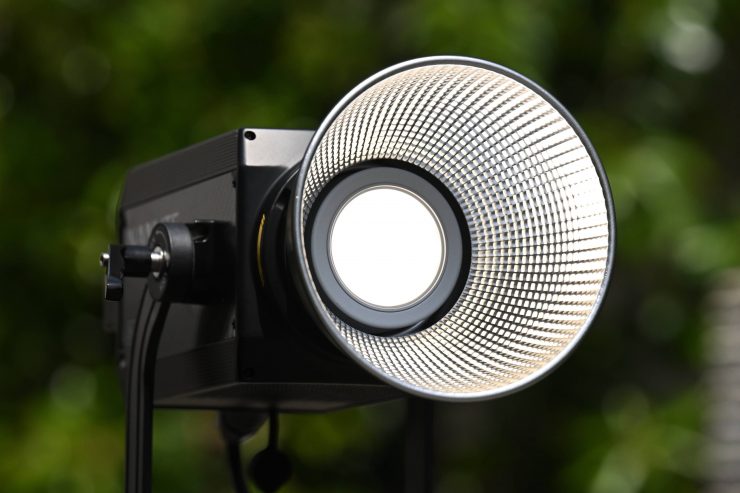
So now let’s get to the photometric results. I always test lights in this way so that I get a reference to how they compare to other fixtures. Results only tell part of the story and should never be used alone to judge a light. I have found from extensive testing over the years that certain lights that have good photometric results don’t always look good, and lights that have worse photometric scores can sometimes look better than their results indicate.
You can’t judge a light from one set of photometric results. You have to look at all of the different results to be able to come to a conclusion. Looking at one set of results is like reading one chapter in a book and then thinking you know what the whole story is. Everything needs to be considered to come up with an accurate conclusion. Don’t let anyone tell you that SSI scores are the only thing that matters these days.
Different lights can also look different depending on what camera you happen to be using.
Output & Color Temperature Accuracy
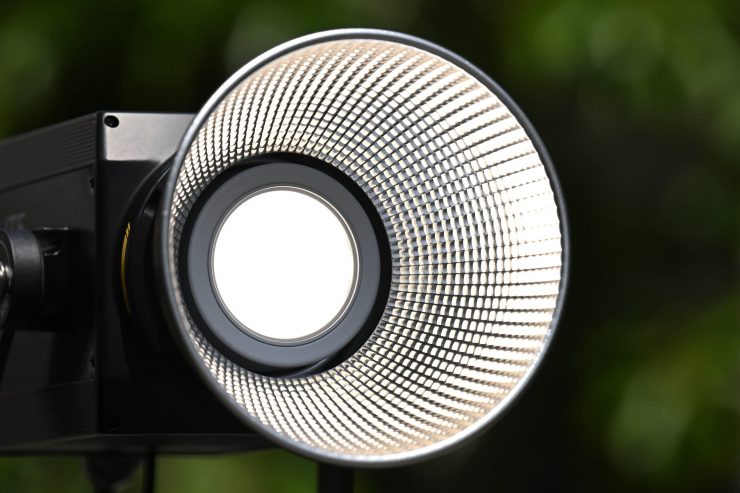
I tested the Nanlite Forza 500B II at a variety of CCT settings with a Sekonic C-800 Spectrometer to find out how much output the light had and how accurate the CCT reproduction was. All readings are taken at a distance of 1m (3.28ft) in a controlled environment. The readings were also taken directly from the lighting source. In the case of using the light with the Reflector, they were taken from the end of that attachment, and not from the COB. When I refer to the edge of the attachment, readings are taken in the middle of the attachment from where they actually end. So for example, If I am taking measurements with a reflector being used, I measure from where the reflector ends and not from the COB.
5600K (open face)
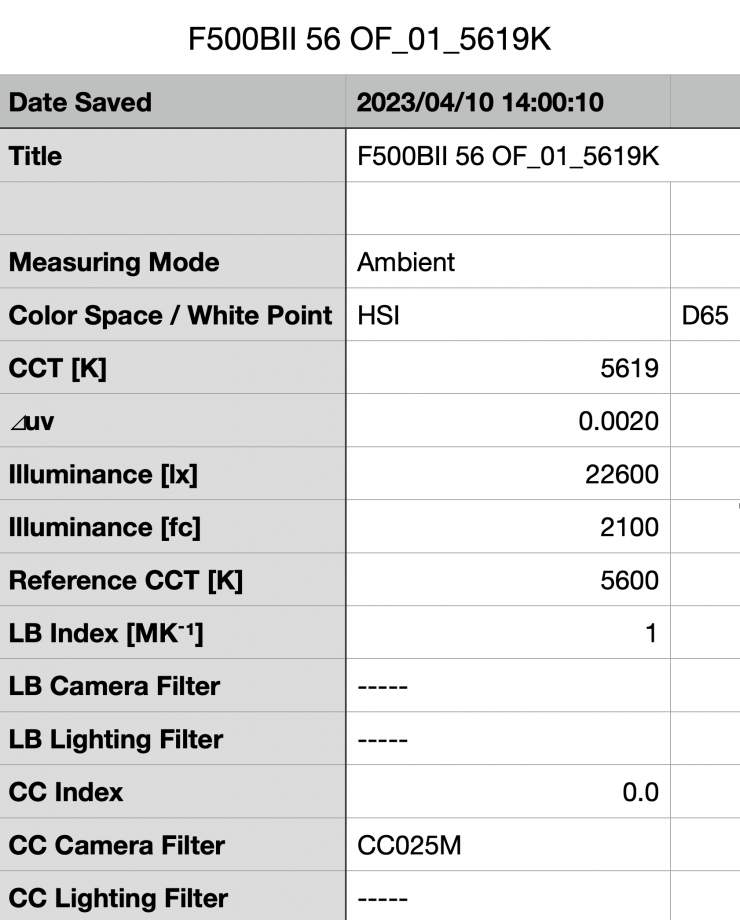
Above you can see the Forza 500B II recorded an output of 22,600 lx (2100 fc) when set at 5600K and used open face.
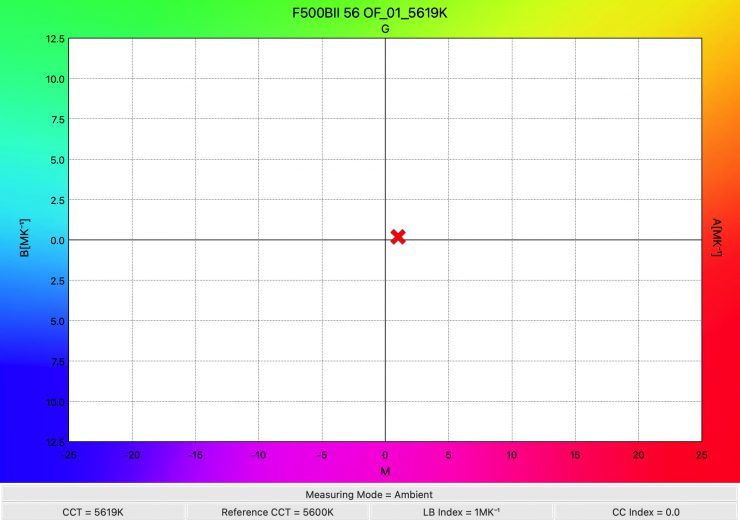
The light recorded a CCT reading of 5619K which was an excellent result.
3200K (open face)
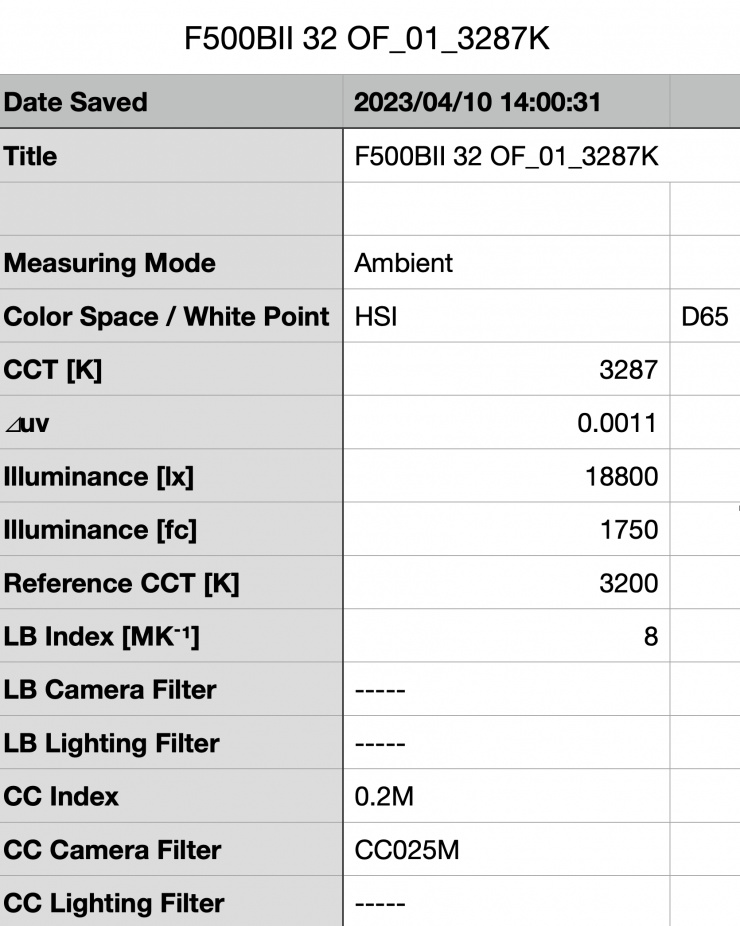
Above you can see the output when it was set at 3200K in the open face configuration was 18,800 lx (1750 fc), which was 16.8% less than the 22,600 lx it produced at 5600K.
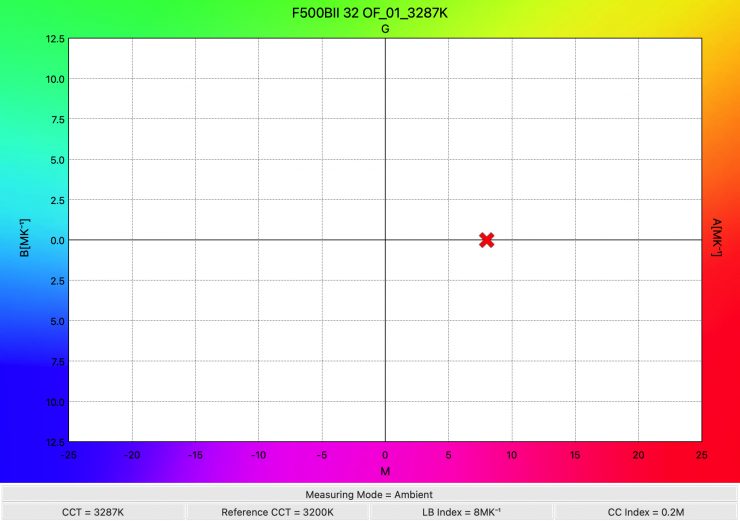
As far as CCT accuracy goes, it recorded a decent reading of 3287K.
Reflector
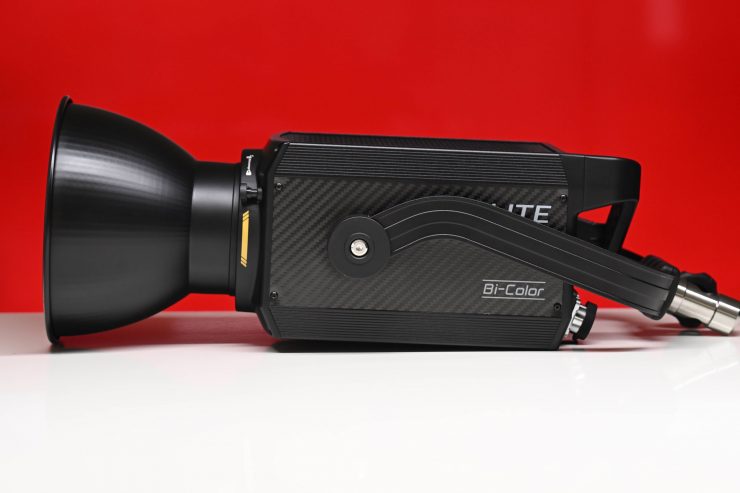
So, now let’s see how much output the light has when used with its 55° reflector.
5600K (Reflector 55°)
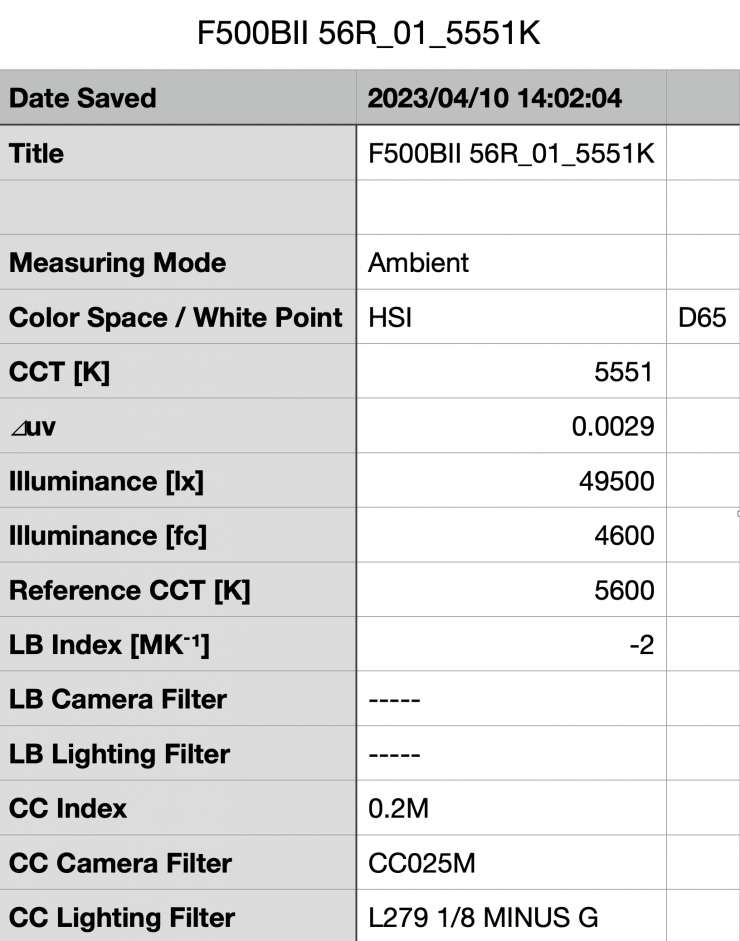
Above you can see the light’s output when it was set at 5600K with the reflector was 49,500 lx (2920 fc). This was 138.9% more than the 13,100 lx it produced at 5600K when used open face. It is important to note that this measurement was made from where the reflector ends. This is a decent amount of output from a fixture that draws 560W.
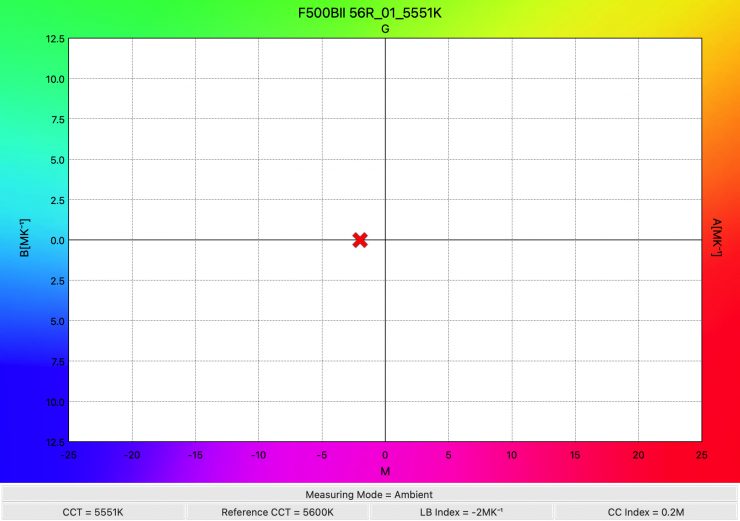
As far as CCT accuracy goes, it recorded a very good reading of 5551K. This result wasn’t as good as when the light was used open face. This shows me that the reflector is slightly altering the CCT, but not enough to warrant any concern.
3200K (Reflector 55°)
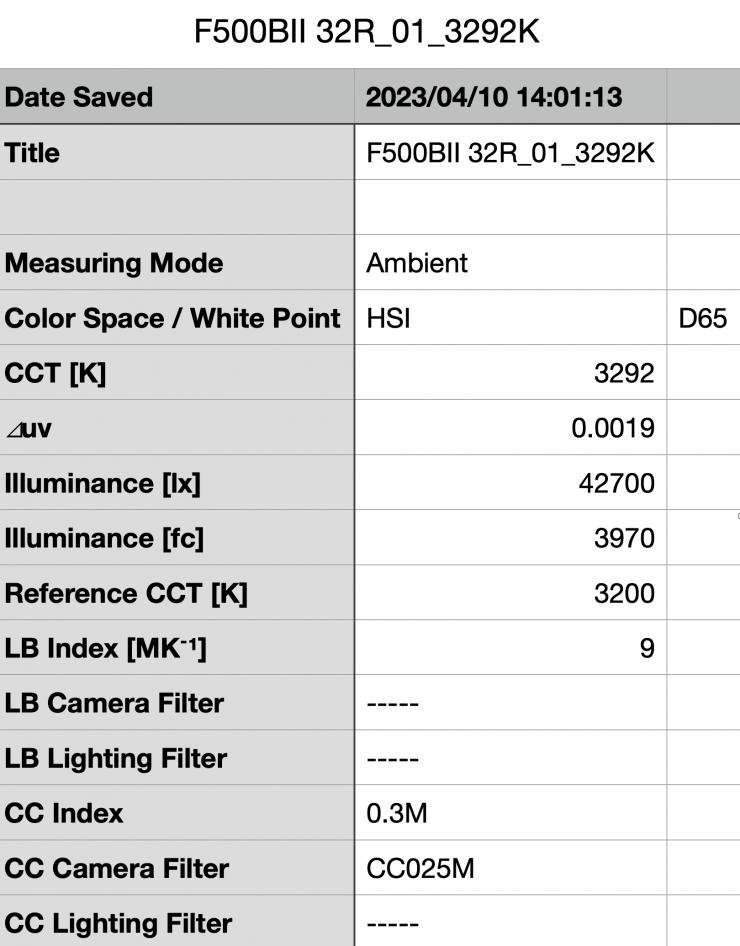
Above you can see the output when it was set at 3200K with the standard reflector was 42,700 lx (3970 fc), which was 13.73% less than what it output at 5600K using the reflector.
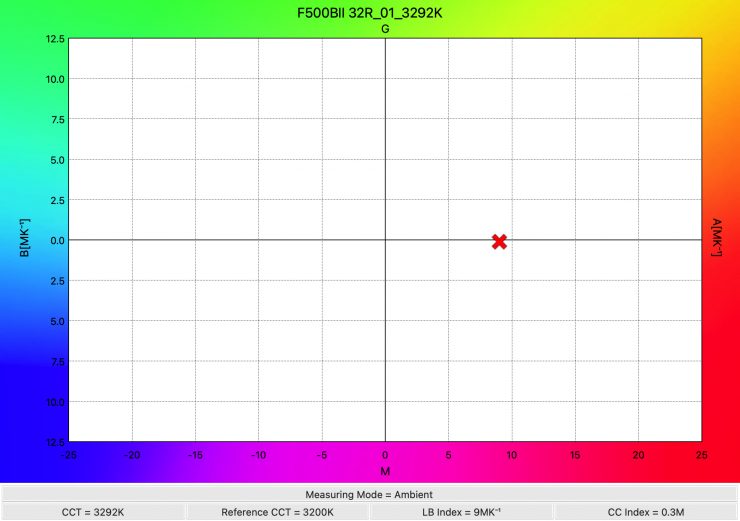
As far as CCT accuracy goes, it recorded a decent reading of 3292K. The CCT accuracy when using the reflector was fairly similar to when the light is used open face. It is nice to know that when using the reflector the light’s CCT won’t change by any huge noticeable difference.
Maximum Output when using 14.4V-14.8V Batteries
I also tested the output when running the light remotely off two 14.8V batteries. Nanlite states that the max output is capped at 60% when running 14.4V-14.8V batteries.
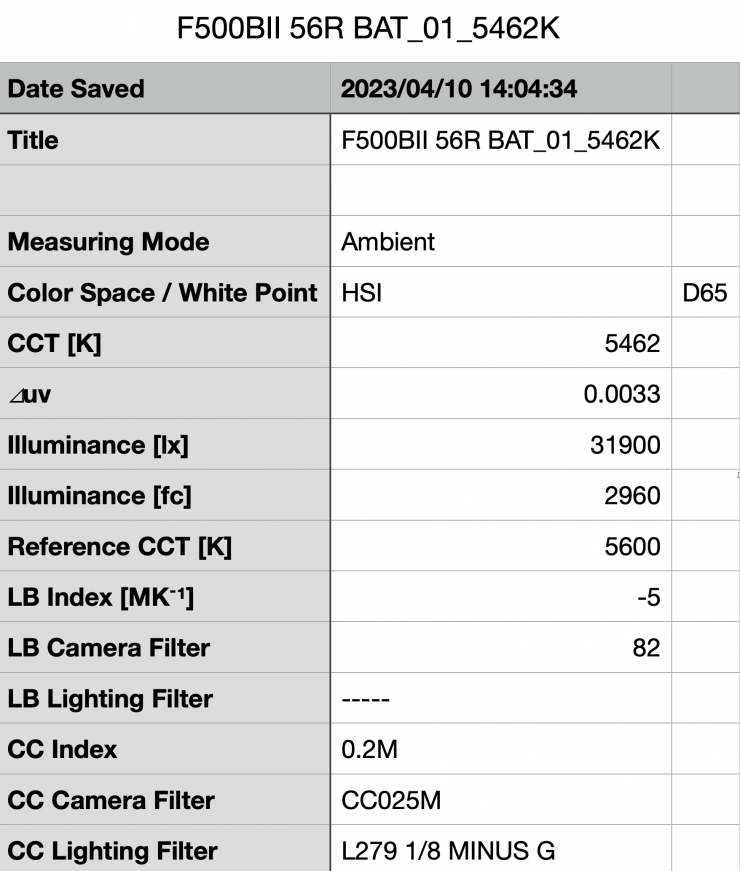
Above you can see that the output when it was set at 5600K with the standard reflector running off two 14.8V batteries was 31,9000 lx (2960 fc), which was 55.17% of the output it had at 5600K using the reflector via mains power.
Output & CCT comparison against the competition
5600K
| OUTPUT | CCT READING | |
| Forza 500B II | 49,500 lx* | 5551K |
| Aputure LS 600x | 68,400 lx* | 5397K |
| Godox Knowled M600Bi | 198,000 lx** | NA |
| CAME-TV TIOGA Series 660 | 152,703 lx** | NA |
| SmallRig RC 450B | 121,000 lx** | NA |
*Independently tested
**Claimed output (not tested)
3200K
| OUTPUT | CCT READING | |
| Forza 500B II | 42,700 lx* | 3292K |
| Aputure LS 600x | 49,600 lx* | 3046K |
| Godox Knowled M600Bi | 164,000 lx** | NA |
| CAME-TV TIOGA Series 660 | 105,296 lx** | NA |
| SmallRig RC 450B | 107,000 lx** | NA |
*Independently tested
**Claimed output (not tested)
So as a comparison, how does this output compare to the competition when using their included reflectors? Well, above you can see. Please note that these lights all have different power draws and that some of these figures are manufacturers’ claims and have not been independently verified. The Aputure LS 600x has more output than the Nanlite Forza 500B II but it also draws 140W more. What you also need to consider is that the Forza 500B II’s reflector doesn’t cause any hotspots, so the output you are getting is consistent across its 55-degree beam.
Some of these claimed figures for the Godox, CAME-TV, and SmallRig look very dubious to me. I find it very hard to believe that the Godox Knowled M600Bi has an output of 198,000 lx @1m when used with its reflector at 5600K. I take output figures that haven’t been independently tested with a grain of salt.
Ok, just as another comparison, let’s see how the output and CCT figures compare against an RGBACL light like the Prolycht Orion 675 FS when their standard reflectors are used.
5600K
| OUTPUT | CCT | |
| Nanlite Forza 500B II | 49,500 lx | 5551K |
| Prolycht Orion 675 FS | 55,700 lx | 5515K |
3200K
| OUTPUT | CCT | |
| Nanlite Forza 500B II | 42,700 lx | 3292K |
| Prolycht Orion 675 FS | 47,700 lx | 3230K |
How does it perform at various CCT settings?
Summary of results (Reflector Max Output Mode)
| SETTING | OUTPUT | CCT READING |
| 2700K | 38,100 lx | 2724K |
| 3200K | 42,700 lx | 3292K |
| 4500K | 47,900 lx | 4564K |
| 5600K | 49,500 lx | 5551K |
| 6500K | 49,900 lx | 6353K |
These results show me that the light’s output varies by just 23.6% across the CCT range. The consistency of the output across the CCT range could be better, but there is a Constant Output mode you can use if you want similar output across all CCT settings. Please note that you won’t get nearly as much output in this mode. As a test, I measured the light in the Constant Output mode at both 2700K and 5600K and I found that there was only a 7.29% difference in output. Now, the output for the light when used at 5600K in the Max. Output mode was 49,500 lx, while in the Constant Output mode it was just 38,400 lx.
CCT consistency & linear output when dimming the light
Now, what you should always do when testing lights is to see if the CCT remains consistent when dimming the light. Just because you set a light at say 5600K, that doesn’t mean that the CCT will remain stable as you start dimming the fixture down. I also wanted to see how linear the dimming curve was.
I decided to do a series of tests at 100%/75%/50%/25%10% to see if the CCT reading being recorded changed. This was done at a distance of 1m using a Sekonic C-800. These tests were done at 5600K with the reflector and the light in its Maximum Output mode.
| CCT READING | OUTPUT | INTENSITY % |
| 5551K | 49,500 lx | 100 |
| 5551K | 37,5000 lx | 75 |
| 5560K | 26,100 lx | 50 |
| 5424K | 14,600 lx | 25 |
| 5239K | 7,180 lx | 10 |
The Nanlite Forza 500B II maintains very good CCT consistency as you start dimming the fixture down to 50%. Once you get below 50% it starts to change quite dramatically. My testing showed that the CCT varied by 321K. On the more affordable FS-300B, it only varied by 27K. I honestly expected to see better results than this.
As far as how linear the output is when you start dimming the light, at 50% output it had 47.27% less output than when used at 100%. At 25% it had 70.5% less output than when used at 100%. At 10% output, it had 85.49% less output than when used at 100%. This shows me that the light’s dimming curve is reasonably linear, but the results could have been better. Again, as a comparison, the much more affordable Nanlite FS-300B had better results in this category, and in fact, those results were the best I had ever seen from a light for this test.
Color Rendering
5600K (Reflector)
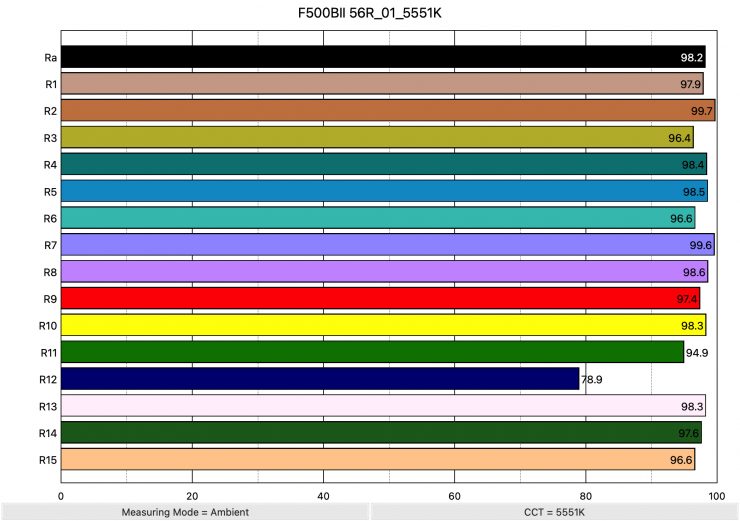
So now that we have seen how much output the Nanlite Forza 500B II produces, how does it perform when it comes to replicating accurate colors? Above you can see that when the light was set at 5600K using the standard reflector it recorded an average CRI (R1-R8) of 98.2 and an extended CRI (R1-R15) of 95.39. For replicating accurate skin tones it recorded for R9 97.4 (red), 98.3 for R13 (closest to caucasian skin tones), and 96.6 for R15 (closest to Asian skin tones). These are generally excellent results. The light struggles to produce R12 (Blue) with a score of just 78.9.
| CRI | EXTENDED CRI | R9 | R13 | R15 | |
| Forza 500B II | 98.2 | 96.51 | 97.4 | 98.3 | 96.6 |
| Aputure LS 600x | 96.8 | 95.34 | 95.6 | 97.0 | 95.2 |
As a color rendering accuracy comparison, the Aputure LS 600x recorded an average CRI (R1-R8) of 98.6 and an extended CRI (R1-R15) of 97.04. The FS-300B, which is a budget fixture, had better color rendering scores than the Forza 300B II.
| CRI | EXTENDED CRI | R9 | R13 | R15 | |
| Forza 500B II | 98.2 | 96.51 | 97.4 | 98.3 | 96.6 |
| Prolycht Orion 675 FS | 98.0 | 96.73 | 96.8 | 97.7 | 96.0 |
As another comparison above you can see how it performs against something like the Prolycht Orion 675 FS.
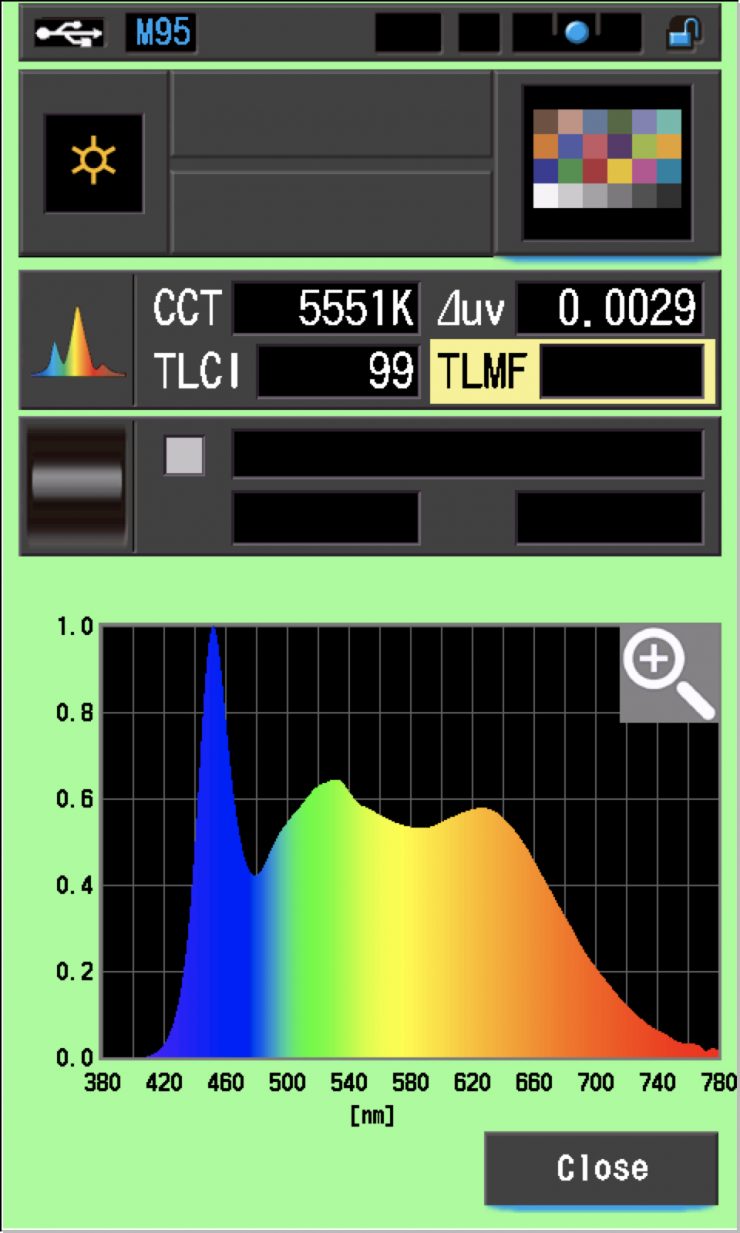
The Forza 500B II, when set at 5600K, recorded a TLCI score of 99.
3200K (Reflector)
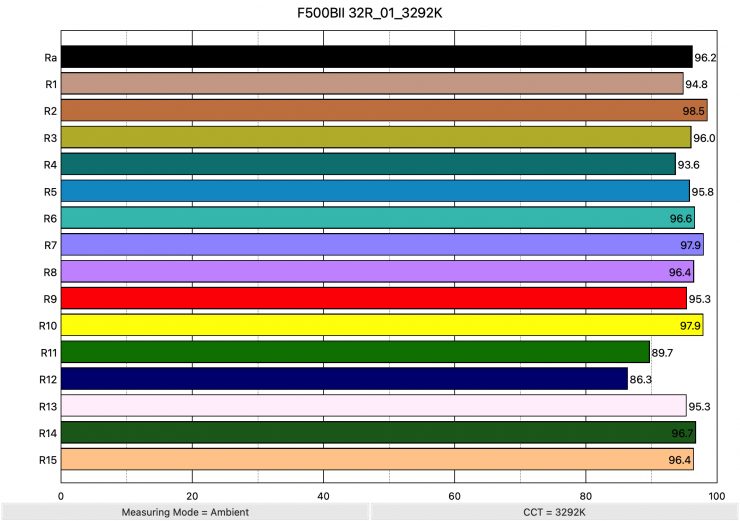
Above you can see the scores for when the light was used at 3200K. It recorded an average CRI (R1-R8) of 96.2 and an extended CRI (R1-R15) of 95.14. For replicating accurate skin tones it recorded 95.3 for R9 (red), 95.3 for R13 (closest to caucasian skin tones), and 96.4 for R15 (closest to Asian skin tones). These were good results, but not as good as when the light is used at 5600K. Only R11 (green) and R12 (Blue) were under 90.
| CRI | EXTENDED CRI | R9 | R13 | R15 | |
| Forza 500B II | 96.2 | 95.14 | 95.3 | 95.3 | 96.4 |
| Aputure LS 600x | 97.8 | 96.71 | 89.9 | 99.1 | 99.3 |
As a color rendering accuracy comparison, the Aputure LS 600x recorded an average CRI (R1-R8) of 97.8 and an extended CRI (R1-R15) of 96.71.
| CRI | EXTENDED CRI | R9 | R13 | R15 | |
| Forza 500B II | 96.2 | 95.14 | 95.3 | 95.3 | 96.4 |
| Prolycht Orion 675 FS | 96.1 | 94.19 | 79.0 | 96.5 | 93.2 |
As another comparison above you can see how it performs against the Prolycht Orion 675 FS.
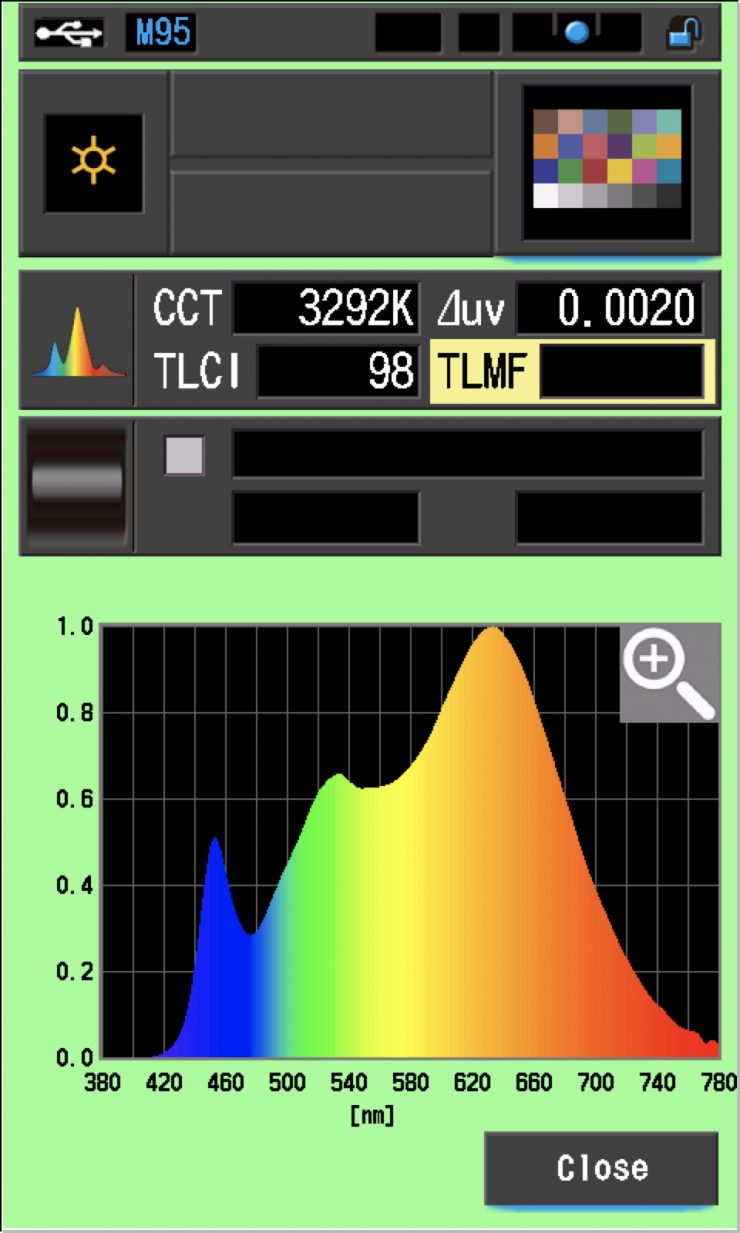
The light, when set at 3200K, recorded a TLCI score of 98.
CC Index & ⊿uv
The CC Index displays the CC correction value and whether any magenta or green need to be added or subtracted. 1 CC corresponds to 035 Kodak CC values or 1/8 Rosco filter values. Any reading less than +1.00 or -1.00 and you’re probably not going to need to make any kind of adjustment. The ⊿uv is the value to show how much this light is away from being an ideal light source (black body radiation = incandescent lamp). As with the CC Index you want this number to theoretically be zero. Kelvin is not a linear value, so we need to convert from Kelvin to MK-1 to compare the values of color temperature. To calculate from Kelvin to Mired is MK-1= 1*1000000/Kelvin. While this may sound confusing, it is the only way of measuring if the Kelvin shift is significant enough to warrant having to use a filter for correction. Below are the results for the Nanlite Forza 500B II when used open face:
Kelvin Vs MK-1
| Kelvin | Difference in K | MK-1 | Difference in MK-1 | |
| SET VALUE | 2700K | 0 | 370.37 | 0 |
| ACTUAL READING | 2724K | 24 | 367.10 | 3.27 MK-1 |
| SET VALUE | 3200K | 0 | 312.5 | 0 |
| ACTUAL READING | 3292K | 92 | 303.76 | 8.74 MK-1 |
| SET VALUE | 4500K | 0 | 222.22 | 0 |
| ACTUAL READING | 4564K | 64 | 219.10 | 3.12 MK-1 |
| SET VALUE | 5600K | 0 | 178.57 | 0 |
| ACTUAL READING | 5551K | 49 | 180.14 | -1.57 MK-1 |
| SET VALUE | 6500K | 0 | 153.84 | 0 |
| ACTUAL READING | 6353K | 147 | 157.40 | -3.56 MK-1 |
These figures might look confusing, but what it tells me is that the light is very CCT-accurate at all settings, except for 3200K. Any MK-1 score that is under -9/9 means you wouldn’t have to use any color correction gels. The MK-1 scores for this light were generally pretty good. Any MK-1 score that is under -6/6 is a very good result.
| Kelvin | Difference in K | MK-1 | Difference in MK-1 | |
| SET VALUE | 2700K | 0 | 370.37 | 0 |
| ACTUAL READING | 2698K | 2 | 370.64 | -0.27 MK-1 |
| SET VALUE | 3200K | 0 | 312.5 | 0 |
| ACTUAL READING | 3204K | 4 | 312.10 | 0.4 MK-1 |
| SET VALUE | 4500K | 0 | 222.22 | 0 |
| ACTUAL READING | 4516K | 16 | 221.43 | 0.79 MK-1 |
| SET VALUE | 5600K | 0 | 178.57 | 0 |
| ACTUAL READING | 5656K | 56 | 177.80 | 0.77 MK-1 |
| SET VALUE | 6500K | 0 | 153.84 | 0 |
| ACTUAL READING | 6549K | 49 | 152.69 | 1.15 MK-1 |
Again, as a comparison, above are the same results for the Nanlite Forza 300B II. As you can see, the Forza 300B II has absolutely outstanding Kelvin Vs MK-1 scores and some of the best I have ever seen from any light. The Forza 300B II’s scores were more consistent and better than those of the Forza 500B II.
CC INDEX & ⊿uv
| CC INDEX | ⊿uv | |
| 2700K | 0.2M | 0.0021 |
| 3200K | 0.3M | 0.0019 |
| 4500K | 0.4M | 0.0036 |
| 5600K | 0.2M | 0.0029 |
| 6500K | 0.0 | 0.0033 |
These scores for the Forza 500B II were ok, but nothing great. The light does lean slightly green at 2700K to 5600K, but not enough to be of any real concern.
| CC INDEX | ⊿uv | |
| 2700K | 0 | 0.0007 |
| 3200K | 0 | 0.0001 |
| 4500K | 0.1M | 0.0003 |
| 5600K | 0.1G | 0.0001 |
| 6500K | 0.3 | -0.0002 |
As a comparison, above you can see the same scores for the Nanlite Forza 300B II. The consistency of the ⊿uv scores was the best I have seen from any LED light I have tested, period. This is what you also need to look at carefully. Even though the Forza 300B II and the Forza 500B II are in the exact same series and use the same light engine, the results were different. This is exactly why I do so many tests with lights.
TM-30
TM-30 is a relatively new color rendering standard that was developed to deal with the limitations of CRI. TM-30 looks at 99 individual colors. These 99 colors are categorized into seven groups: nature, skin color, textiles, paints, plastics, printed material, and color systems.
TM-30 scores go from 0 – 100. The higher the score, the more accurate a light is at producing colors. Any TM-30 Rf score in the ’90s is considered to be good. What is interesting and something that you need to be very aware of is that two separate light sources with the exact same CRI scores can render colors very differently. A light with a high CRI rating could have a low TM-30 score. Conversely, a light with a good TM-30 score could have a bad CRI score.
Now, there are two measurements associated with TM-30, Rf and Rg.
Rf (Color Fidelity)
Rg (Color Gamut)
With Rf value, ideally, you want a score in the 90’s.
With Rg value, a score below 100 indicates that the light source renders colors with less saturation than the reference source. So ideally you want this score to be above 100.
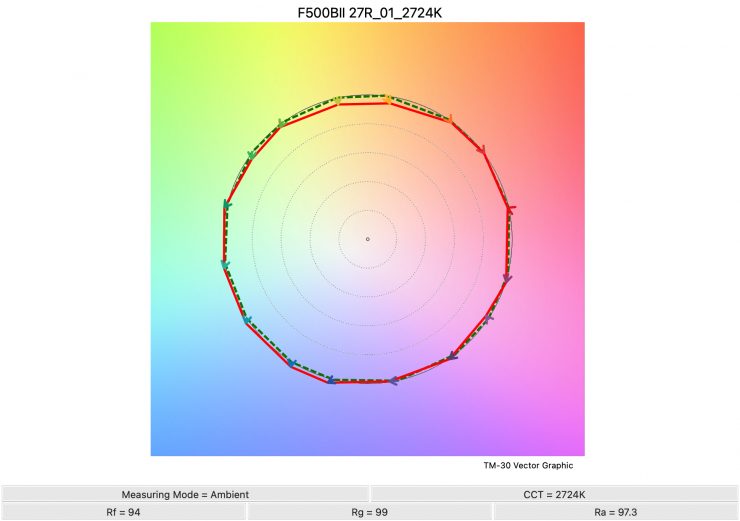
2700K 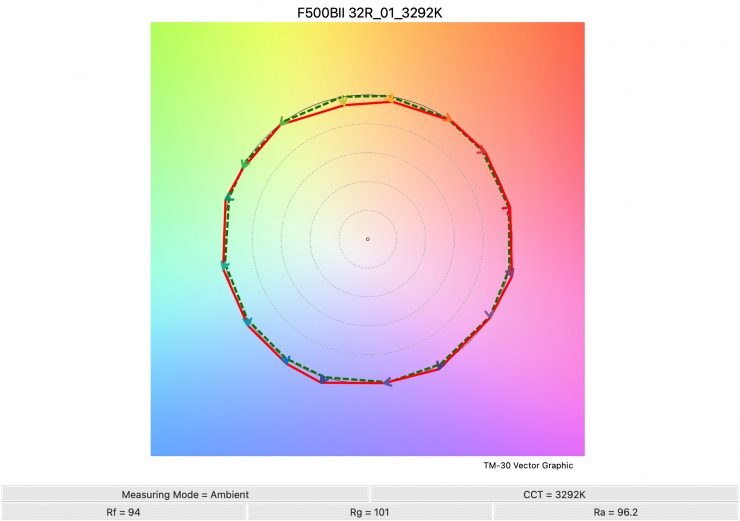
3200K 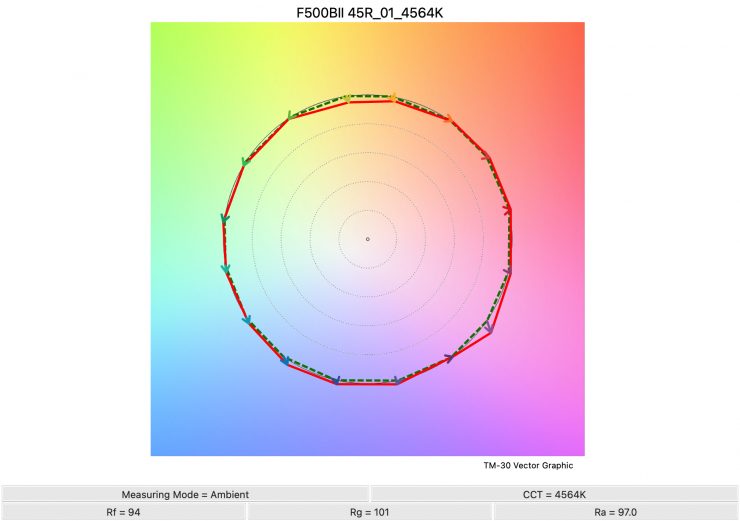
4500K 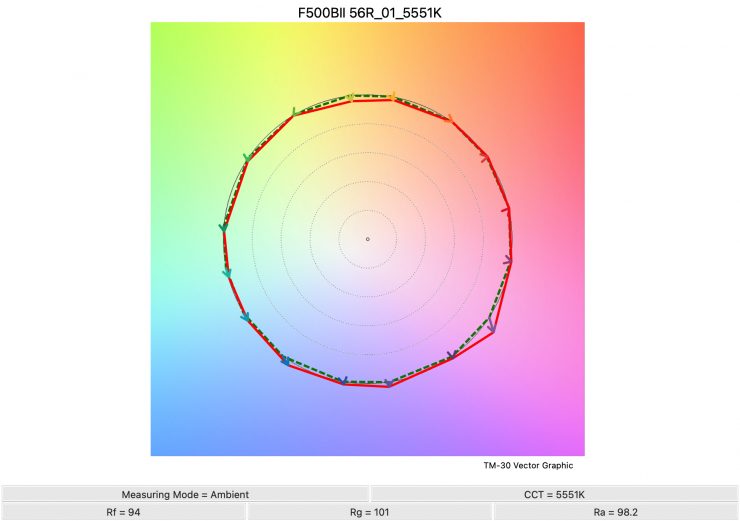
5600K 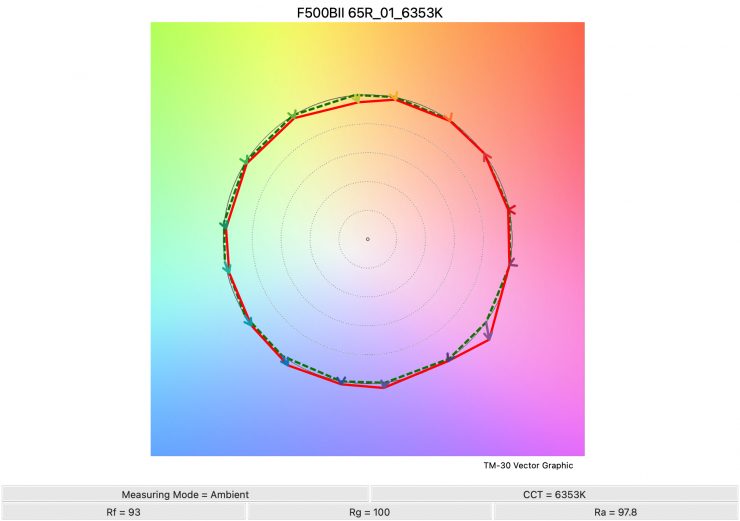
Above you can see the scores for the Forza 500B II at various CCT settings. Below I have listed the figures as well.
Here are the results:
| Rf | Rg | |
| 2700K | 94 | 99 |
| 3200K | 94 | 101 |
| 4500K | 94 | 101 |
| 5600K | 94 | 101 |
| 6500K | 93 | 100 |
The TM-30 scores are all excellent and it shows me that the light is pretty consistent at replicating accurate colors with full saturation. The consistency of the scores was very impressive.
SSI
SSI (Spectral Similarity Index) was developed by the Sci-Tech Council of the Academy. SSI gives me the ability to set any light as a standard, or use predefined standards (such as CIE D55), and then give other lights an SSI score based upon how well they will match standards such as CIE D55. This way I can measure spectral response and compare it directly against an ideal light source. This is actually a much better test than recording CRI scores. Again, this is just one test, and it doesn’t tell us everything we need to know.
3200K
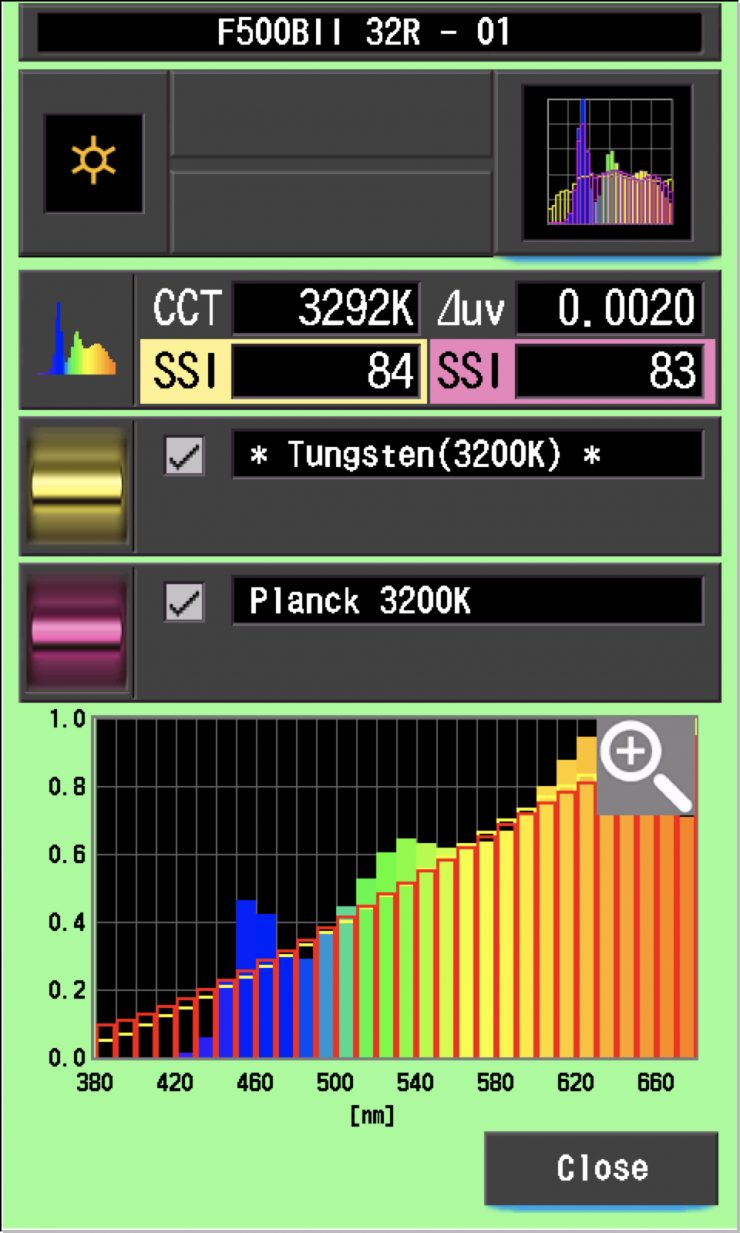
In this graph, the red bars indicate a perfect Planck 3200K source. The gold bars indicate a perfect 3200K Tungsten source. This lets us compare how close to a perfect 3200K lighting source the Forza 300B II is. Any SSI score in the high 70’s, low ’80s is very good for a 3200K LED light. The results for the Forza 500B II were very good when used at 3200K. As you can see, LED lights have a hard time replicating colors below about 450nm.
5600K
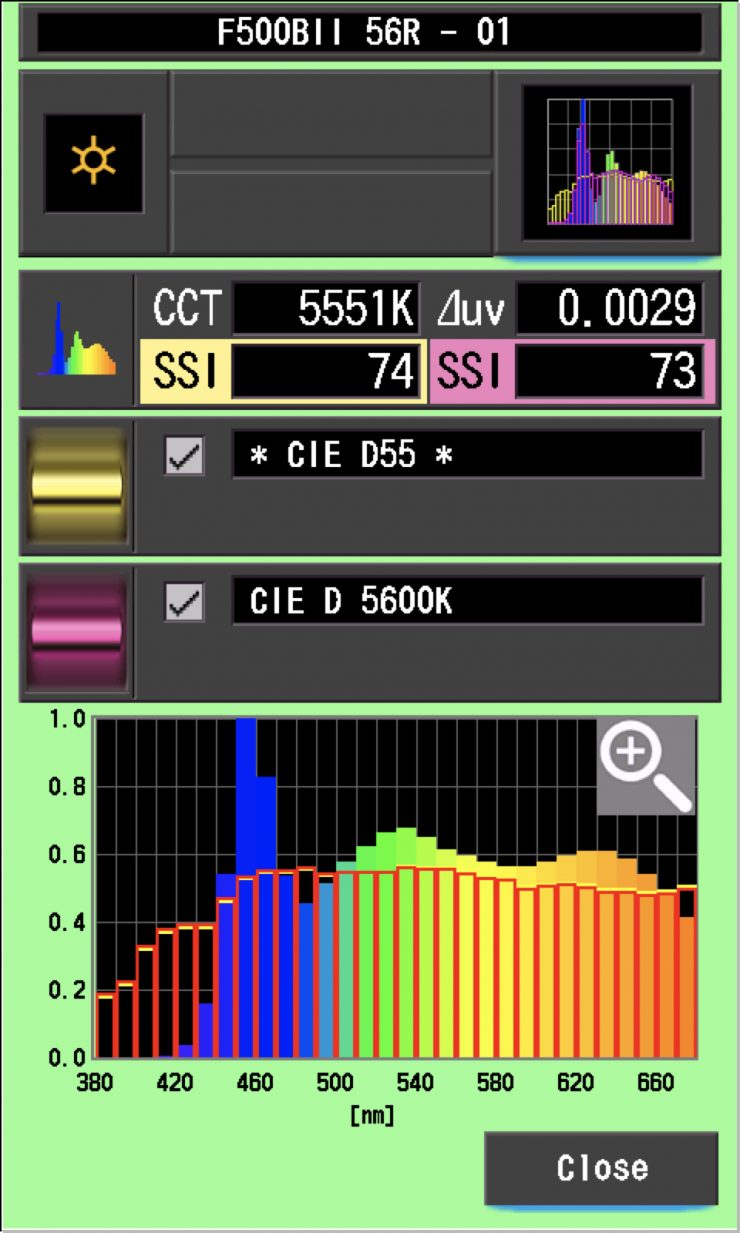
In the graph above the gold bars indicate a perfect CIE D55 source. The red bars indicate a perfect CIE D 5600K source. This lets us compare how close to a perfect 5600K lighting source the Forza 500B II is. A score in the low 70’s is typical for a 5600K LED source.
The main reason we want to record SSI scores is so we can see how well they match with other lights. As an example, I wanted to see how well the Forza 500B II matched the ARRI Orbiter and the Prolycht Orion 675 FS. Below you can see the results.
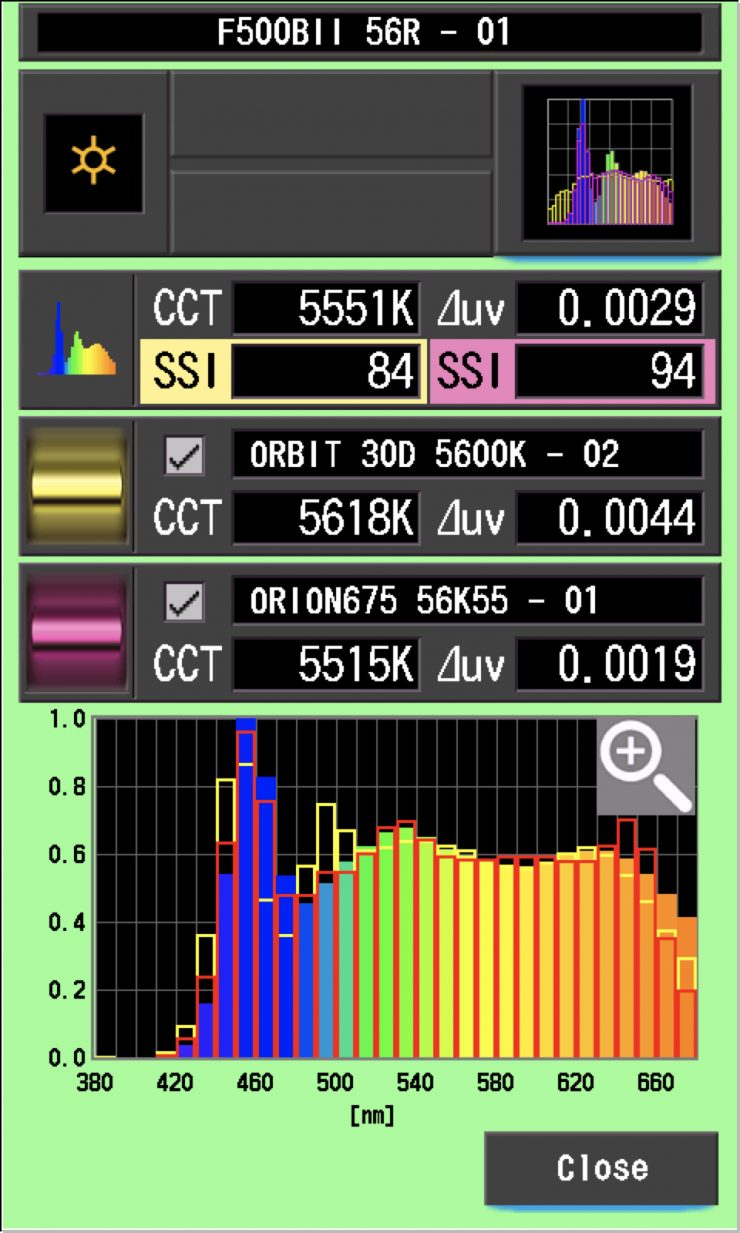
As you can see neither lights are not a perfect match to the Nanlite Forza 500B II, but the Prolycht Orion 675 FS is pretty close. The ARRI Obrbiter would have to be fine-tuned to try and get a closer match. In saying that, a score in the high ’80s and low 90s is still reasonably good and the Forza 500B II would work well reasonably well with both of these lights.
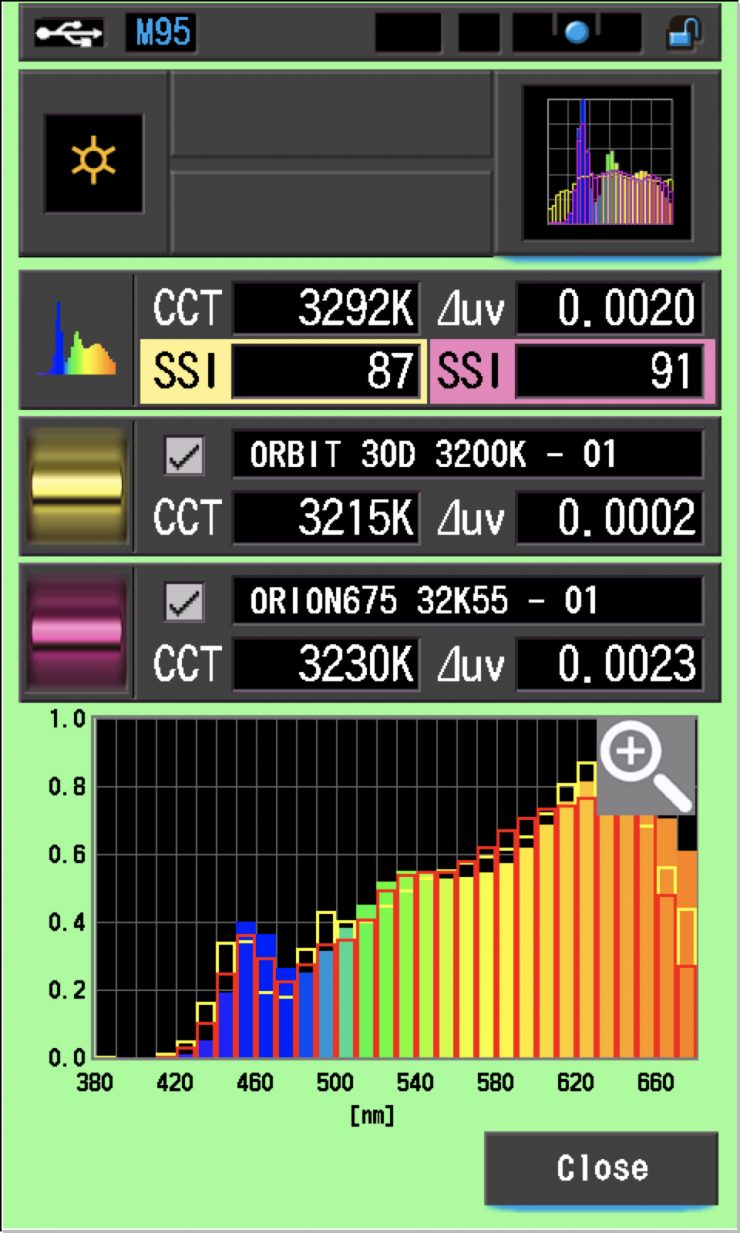
Above you can see the exact same comparison, but this time when all of the lights are set at 3200K. Strangely its match score with the ARRI Orbiter improved, yet its score with the Prolycht declined slightly. This just goes to show how the characteristics of lights change depending on the CCT that is being used.
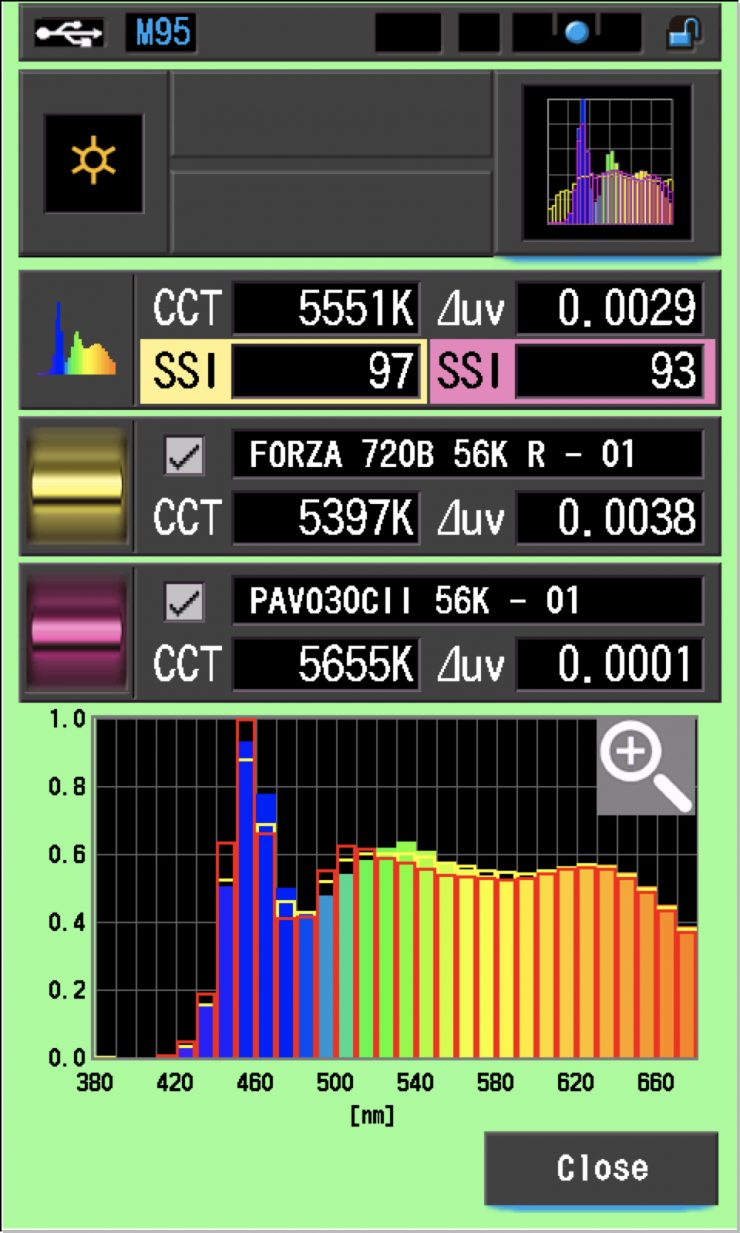
Above you can see another test at 5600K between three lights that are all made by Nanlite. The Forza 500B II is a very close match to the Forza 720B, but the PavoTube 30C II wasn’t as close.
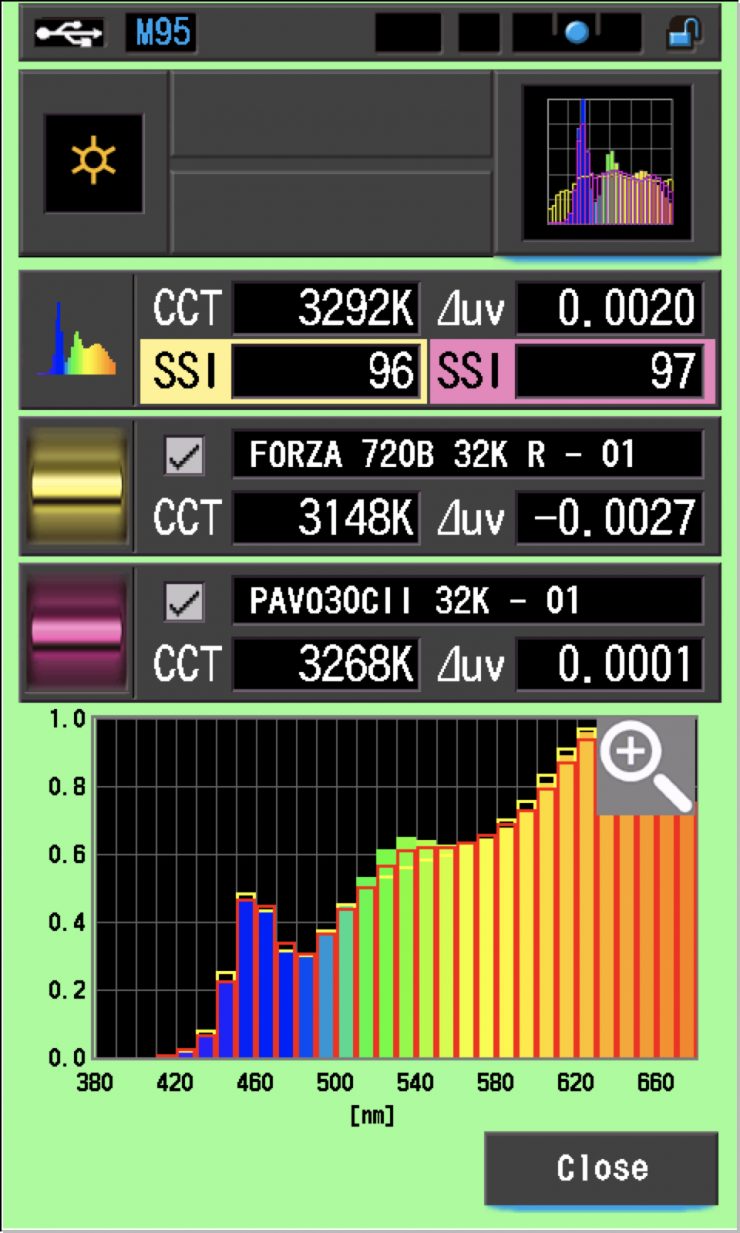
Above you can see the same test at 3200K. The Forza 500B II is a pretty close match to the Nanlite Forza 720B and the Nanlite PavoTube 30C II. In a lot of scenarios, you want to use lights that match as closely as possible and that is usually the case if they are made by the same manufacturer.
SSI tests are a great way of telling you what lights you own or use will work well together.
Spectral Distribution
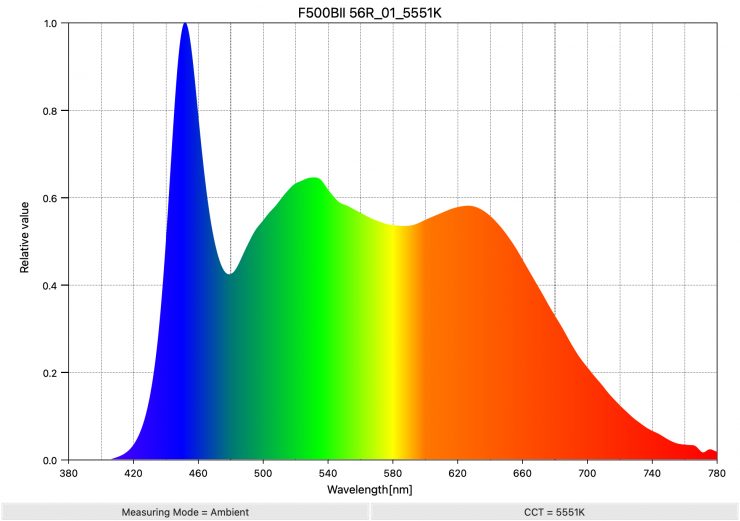
Above you can see the spectral distribution of the Forza 500B II when it is set at 5600K. The spectral distribution is reasonably good.
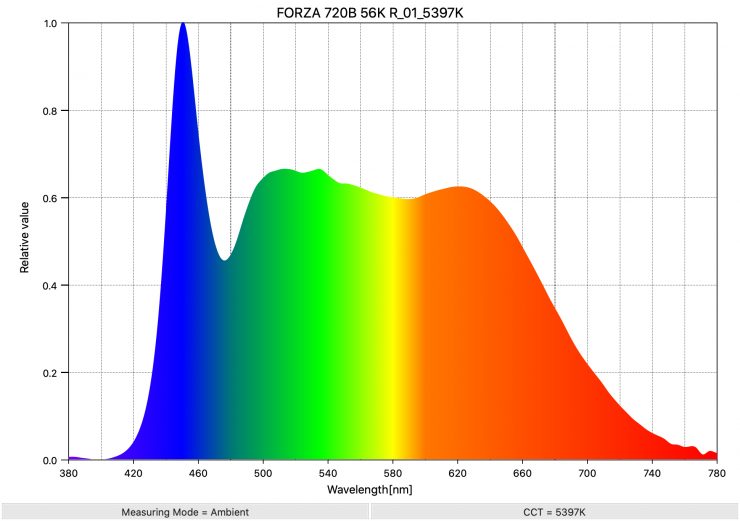
As a comparison, above you can see the spectral distribution of the Nanlite Forza 720B. It is a little fuller and it doesn’t have as many troughs.
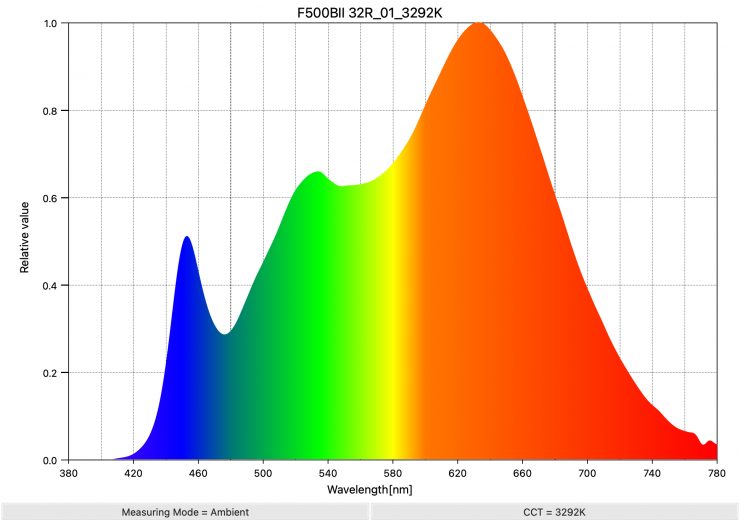
Above you can see the spectral distribution of the Forza 500B II when it is set at 3200K. The spectral distribution of the light is pretty decent for a 3200K source
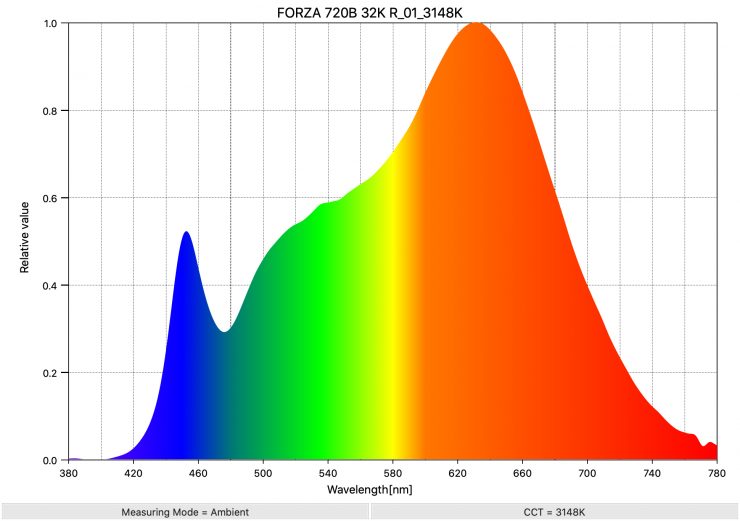
As a comparison, above you can see the spectral distribution of the Nanlite Forza 720B.
Real-World Performance & Quality of Light
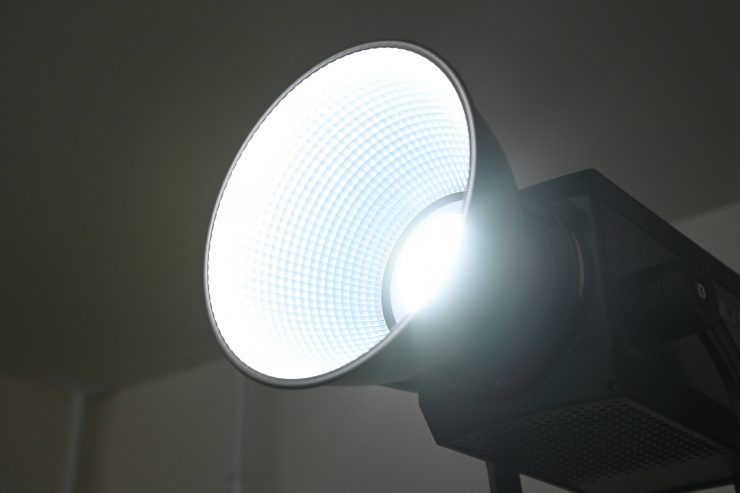
As I always say, photometric scores only tell you part of the story. So let’s how the Forza 500B II performs in the real world.
The photometric results can only give me scientific data and it is much more important for me to see how the light looks and performs.
The Forza 500B II has a decent amount of output and it is capable of producing nice results. Like any light it is up to the person using it to get the most out of it. The fixture is easy to use and quick to set up.
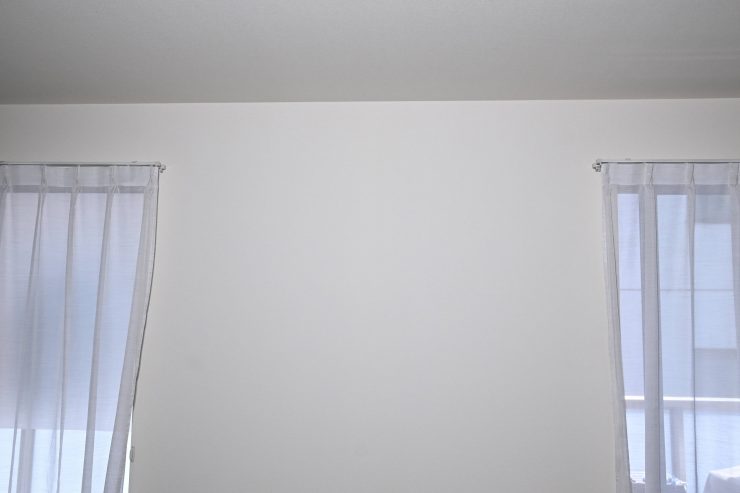
Above you can see what the light looks like at a distance of 3m / 9.9′ when using its reflector. The nice aspect of the reflector is that it doesn’t have a hot spot. This is what makes the output figures accurate because there isn’t any hot spot. On some competing fixtures the reflectors produce hotspots and the claimed output can be very misleading.
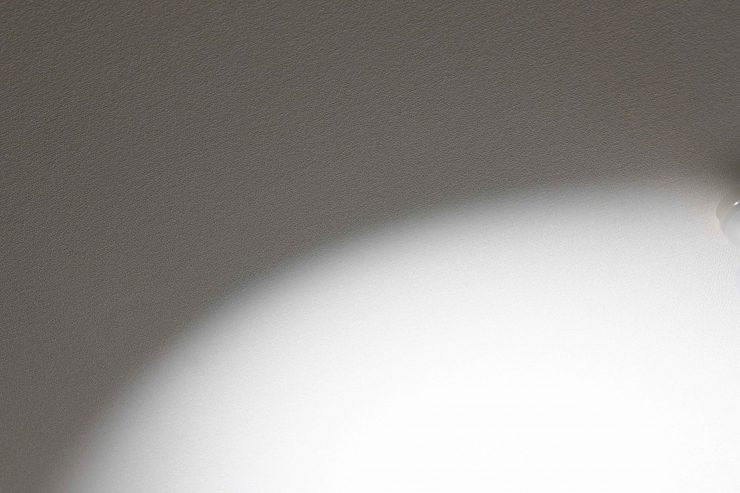
The reflector only has a tiny amount of color fringing on the edges of its beam.
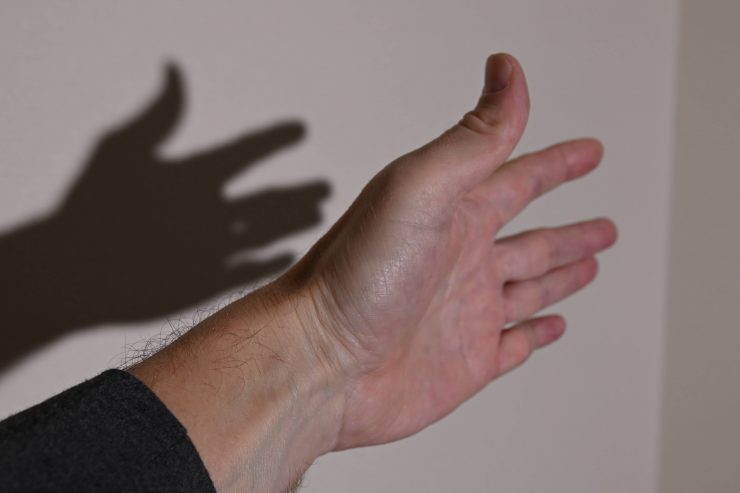
Open Face 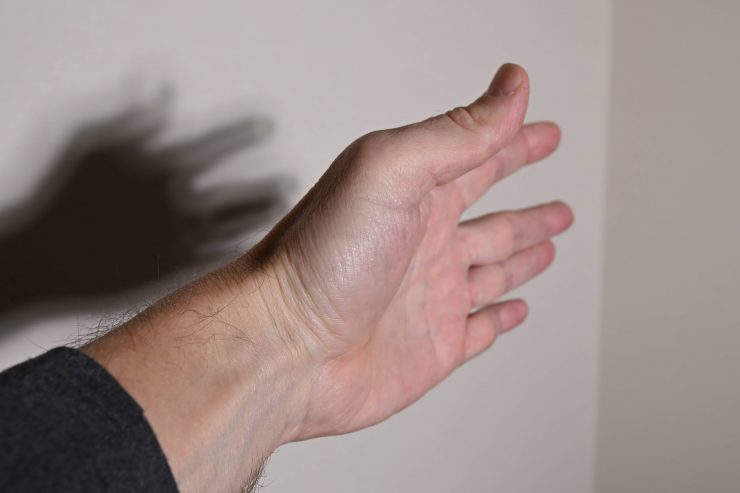
Reflector 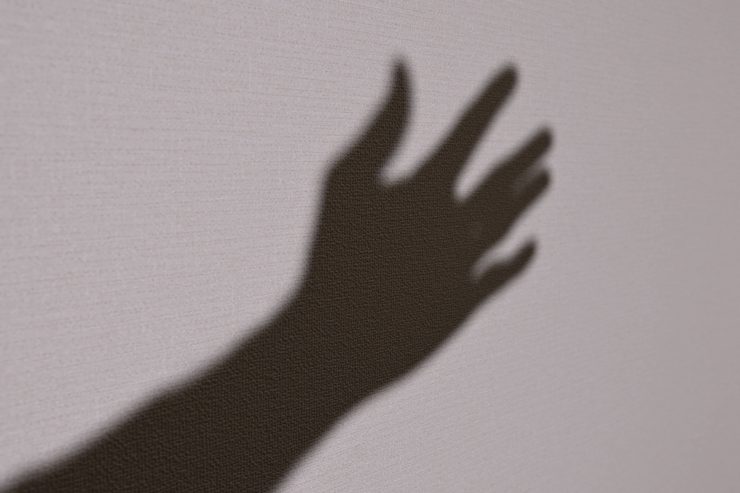
Open Face 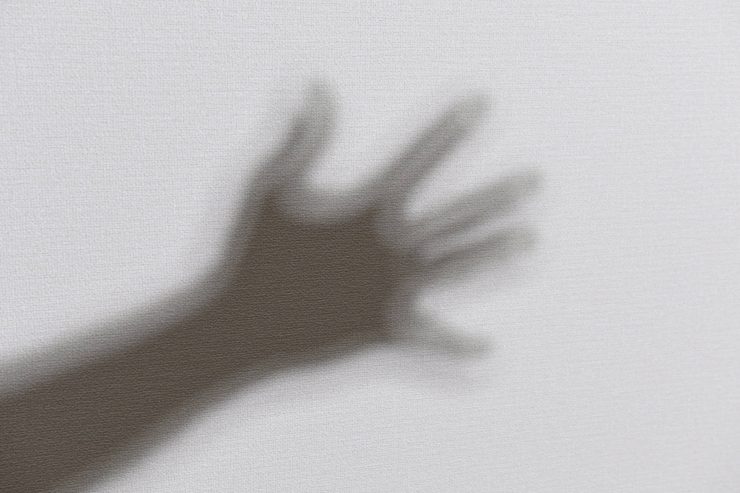
Reflector 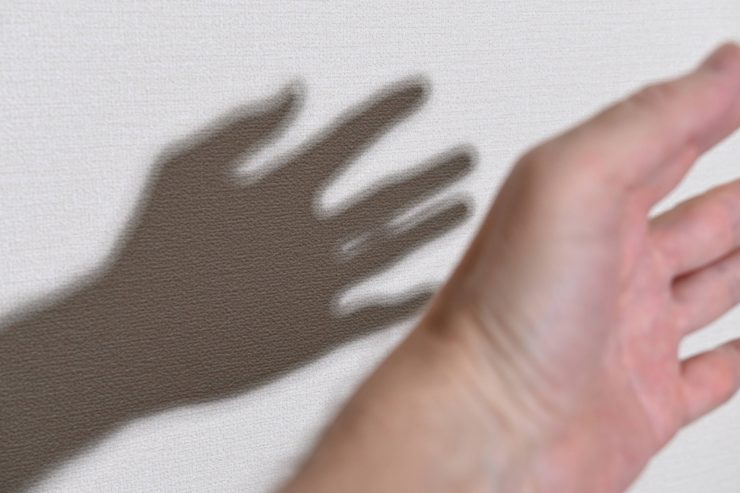
Reflector
Above you can see the type of shadows the light creates when used with its reflector and open face. When used open face you will get clean shadows. If you use the reflector then the shadows won’t have defined outlines.
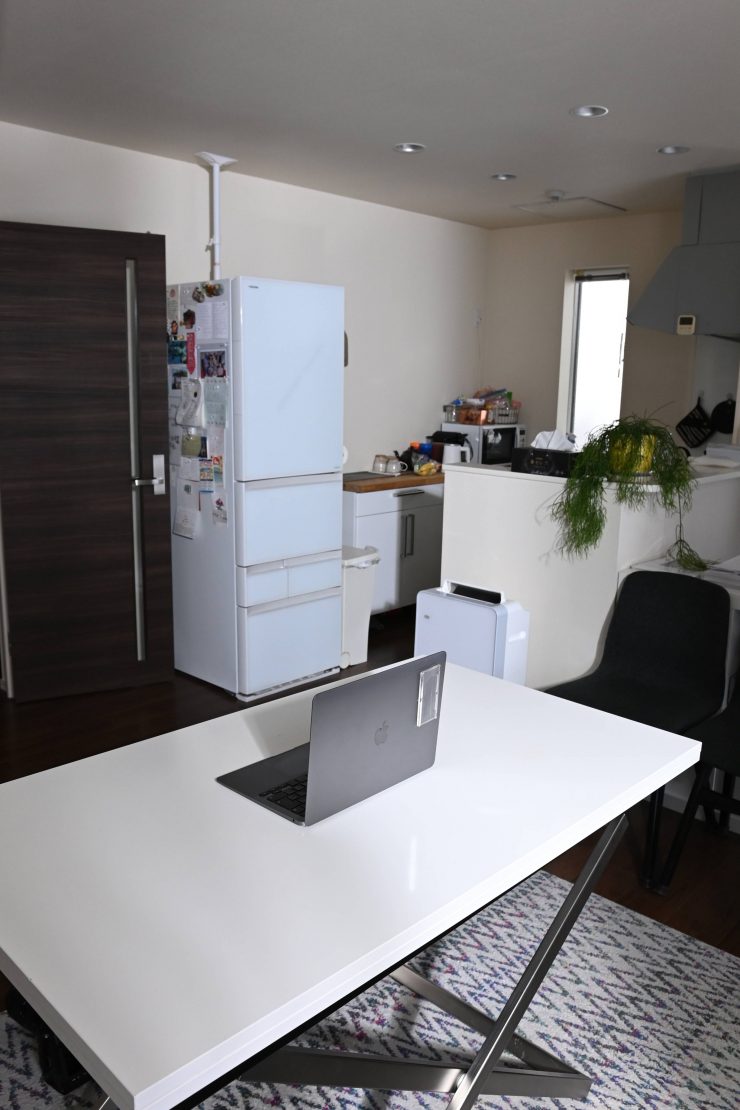
Reflector 5600K 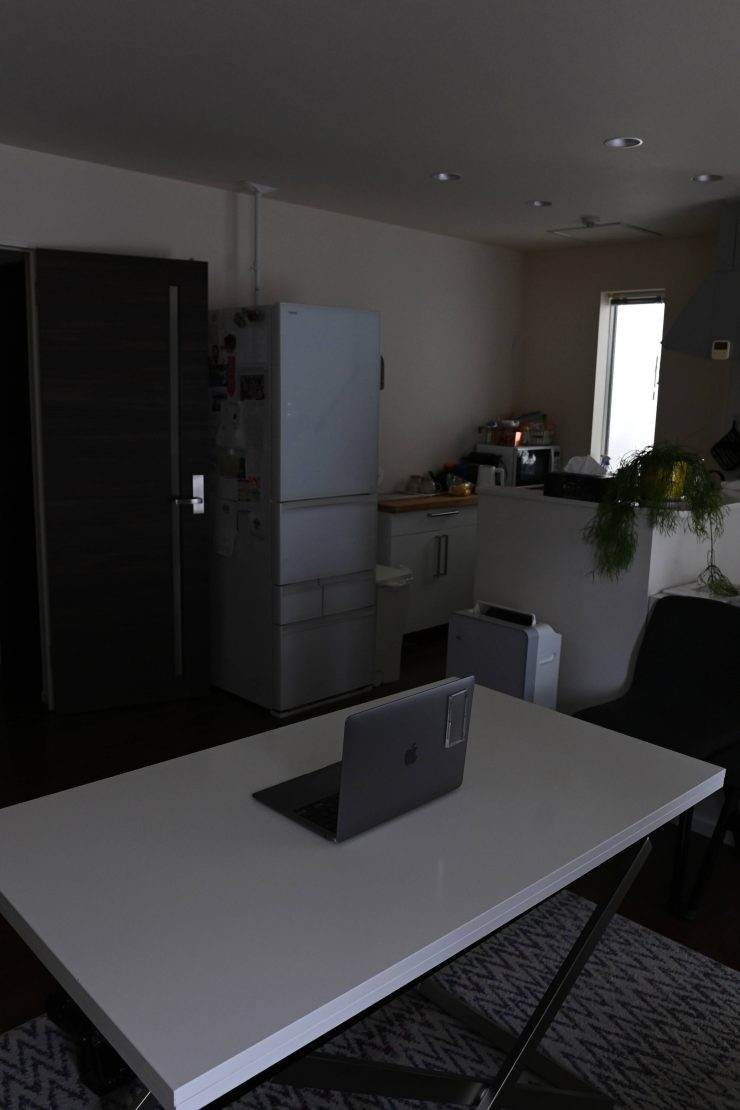
Light off 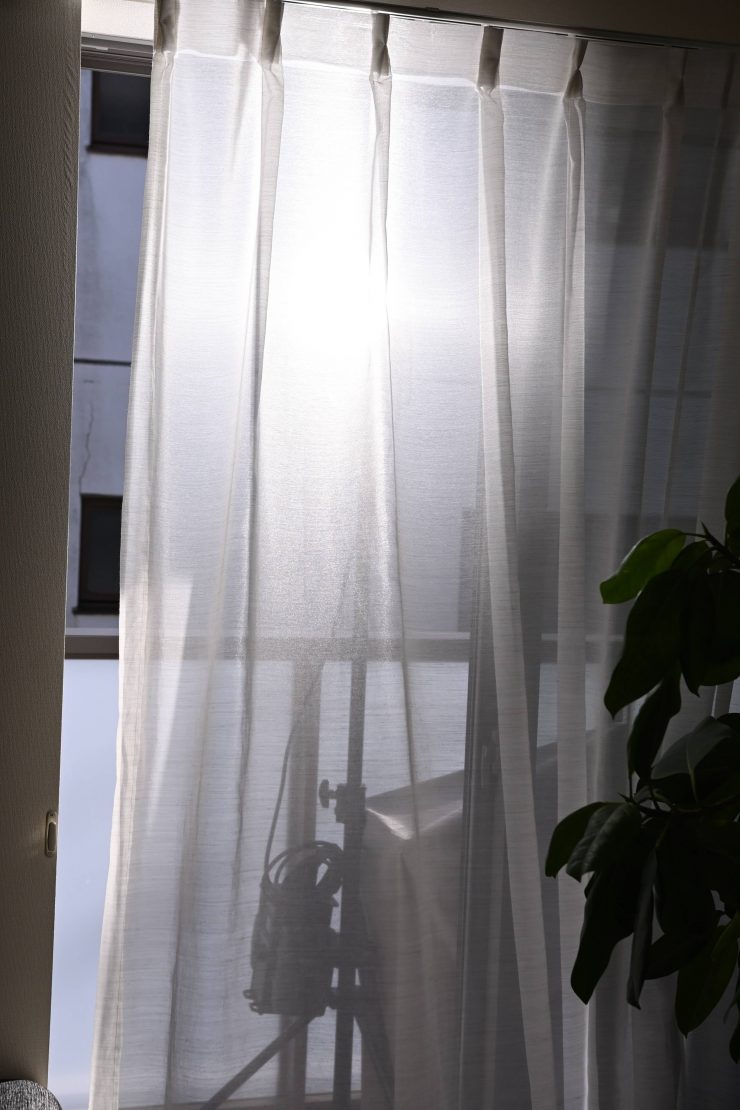
Position of the light 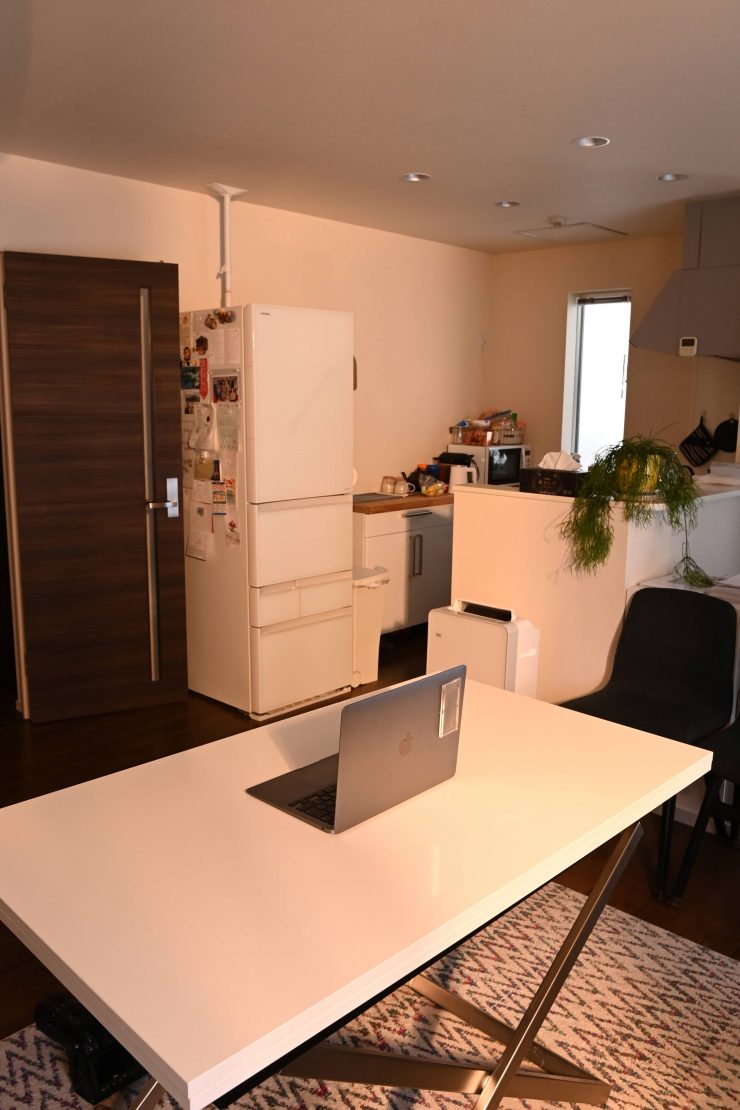
Reflector 2700K 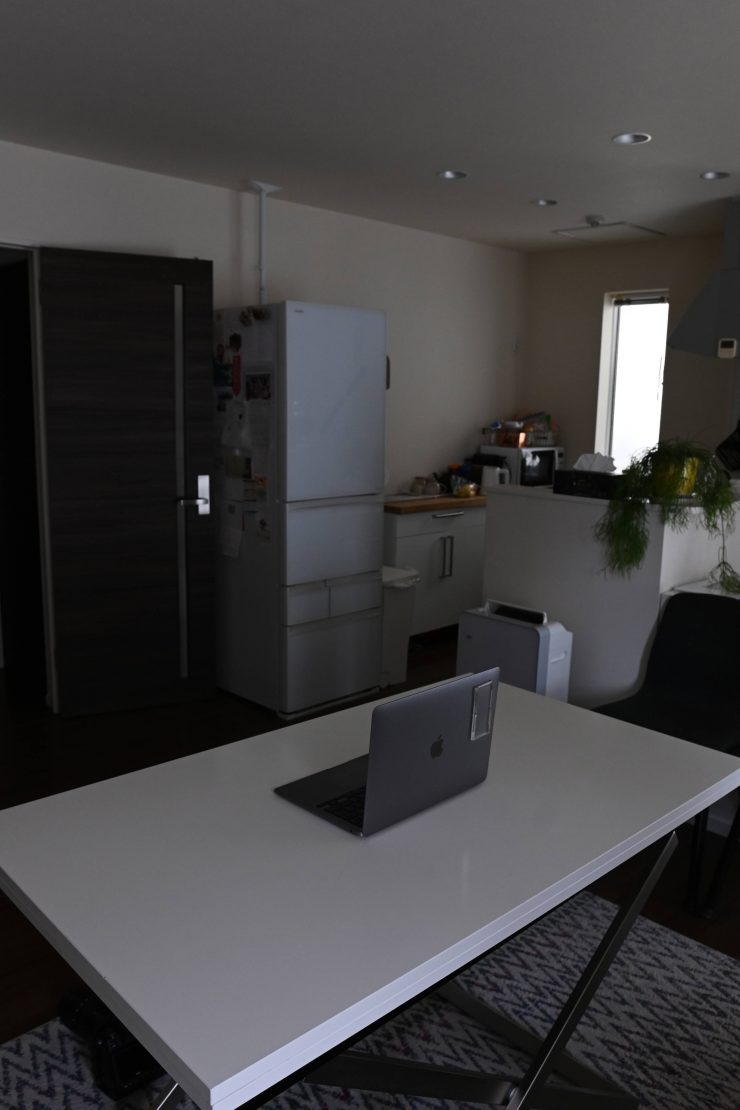
Light off 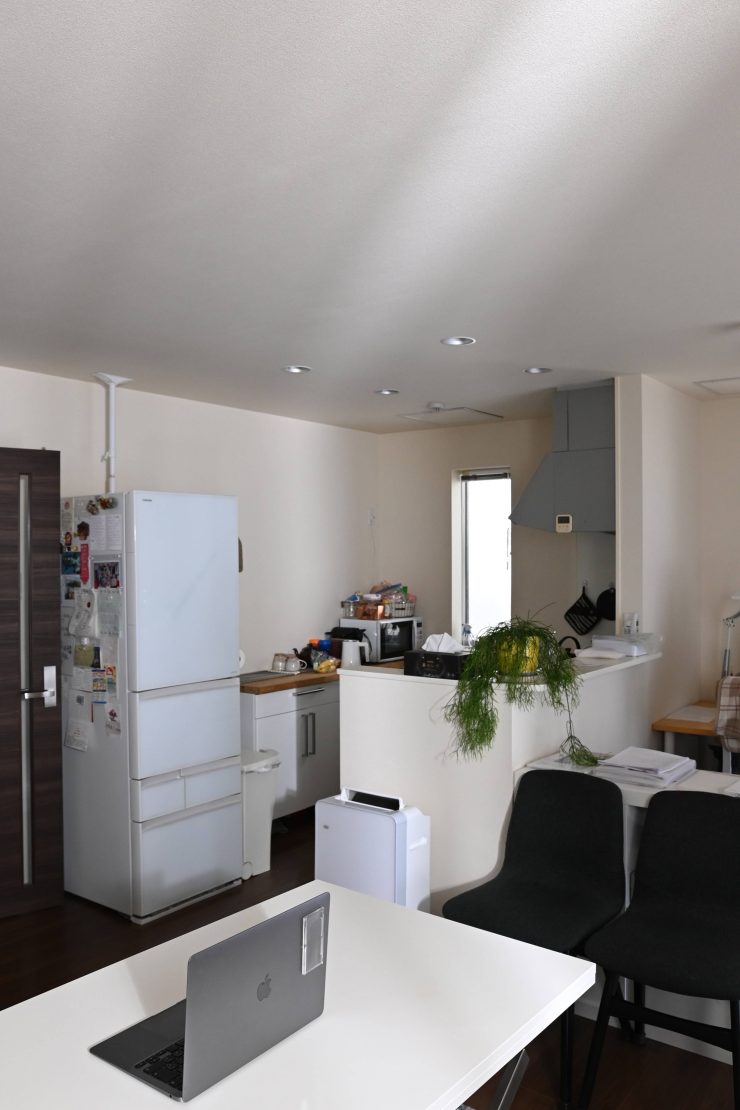
Light On 5600K 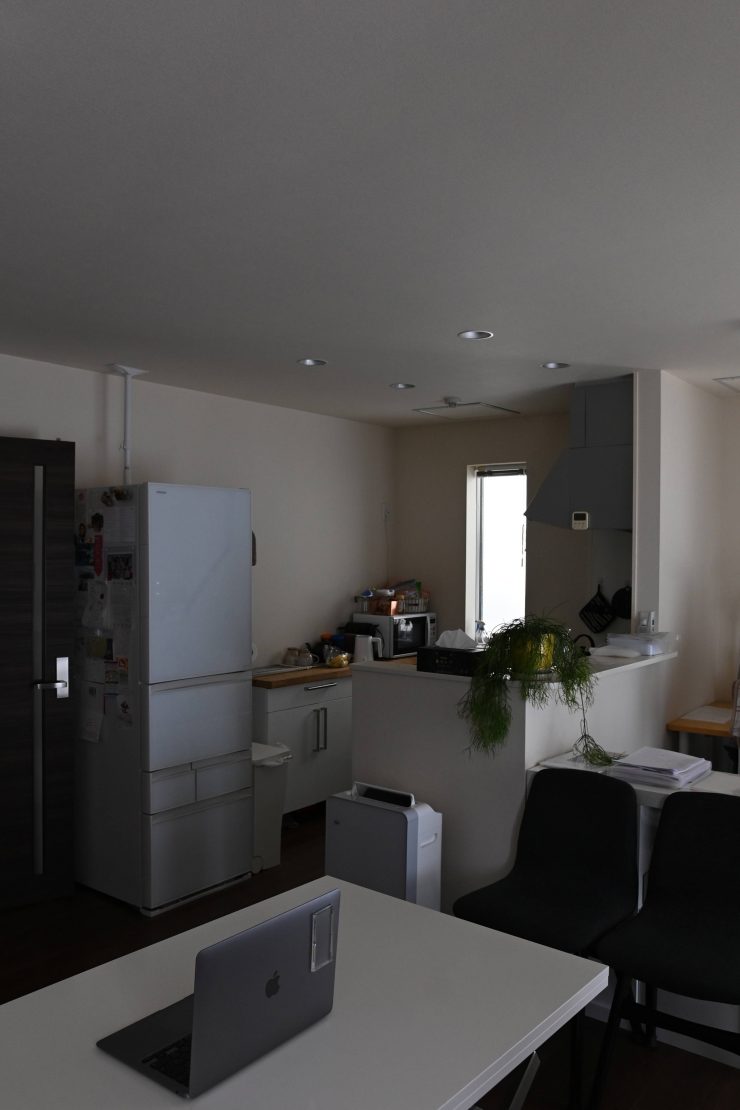
Light off
The light packs a decent punch, and this certainly allows it to be used for a lot of lighting applications. Above you can see how much output the light has when used with its reflector. In this example, I am punching the light from outside through a sheer curtain.
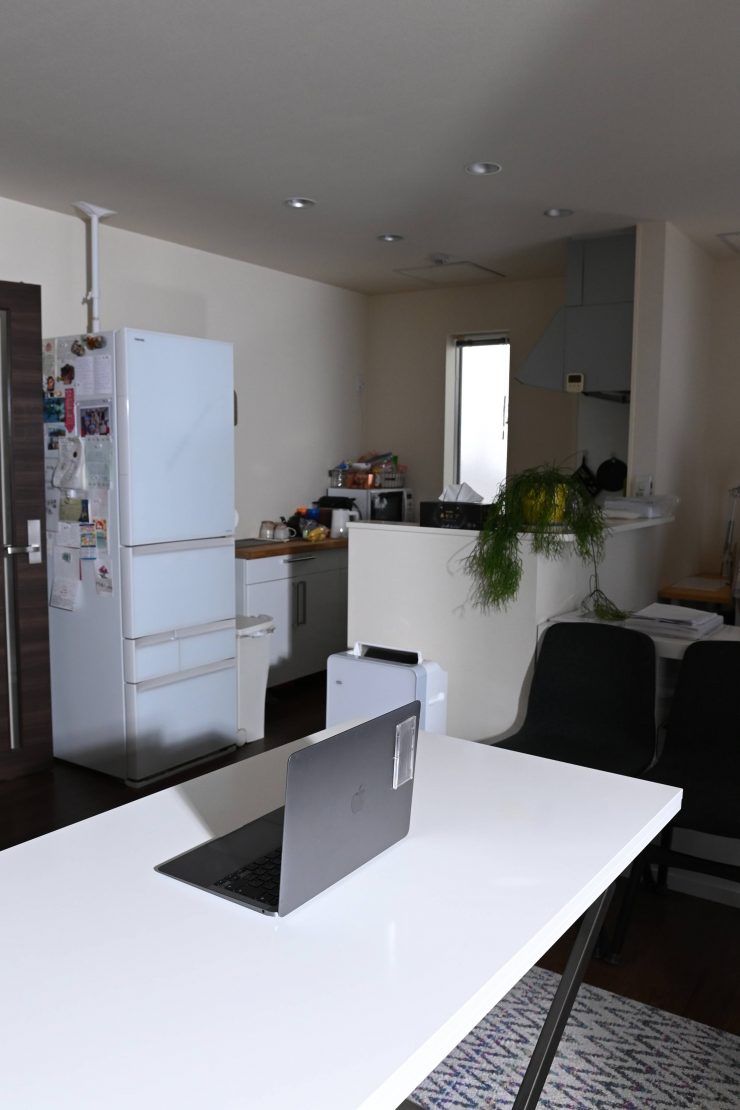
Reflector 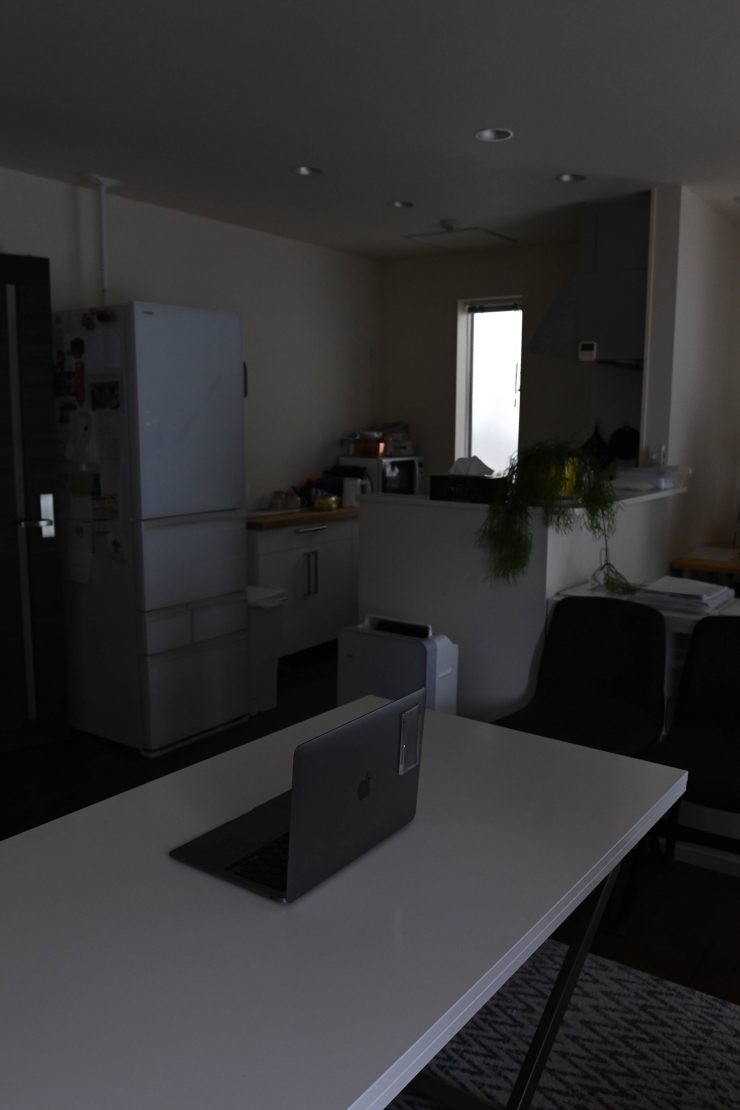
Light off
Above you can see some examples with the light placed outside and aimed down directly at the table.
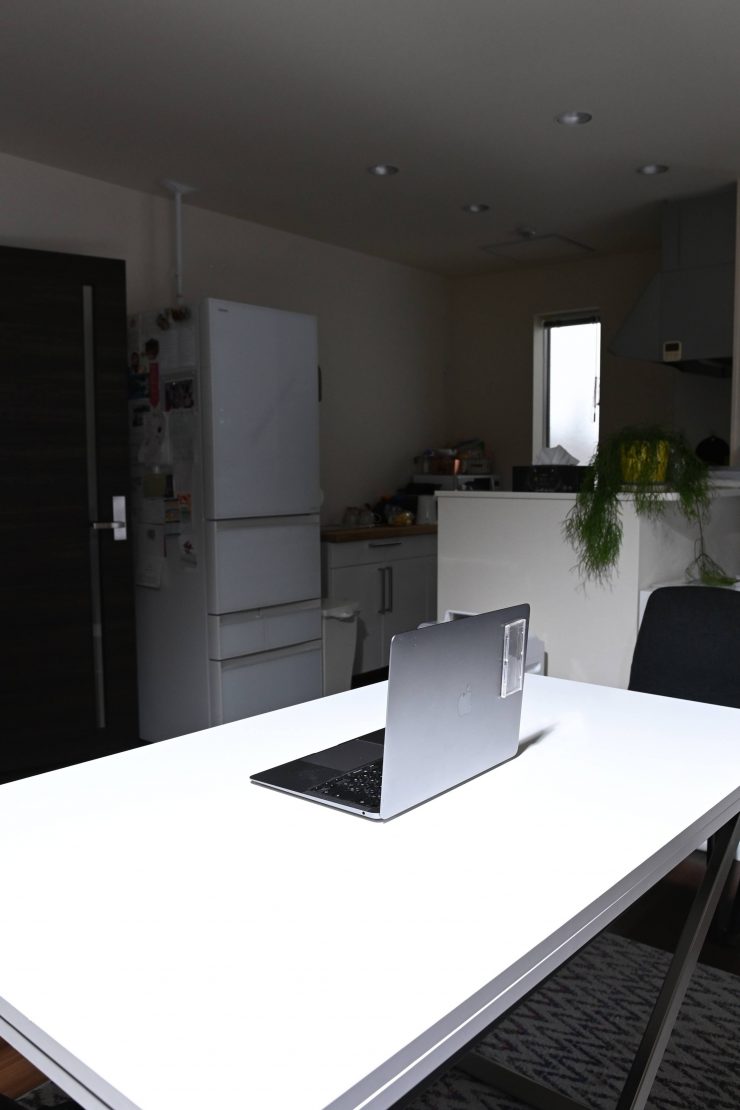
Reflector 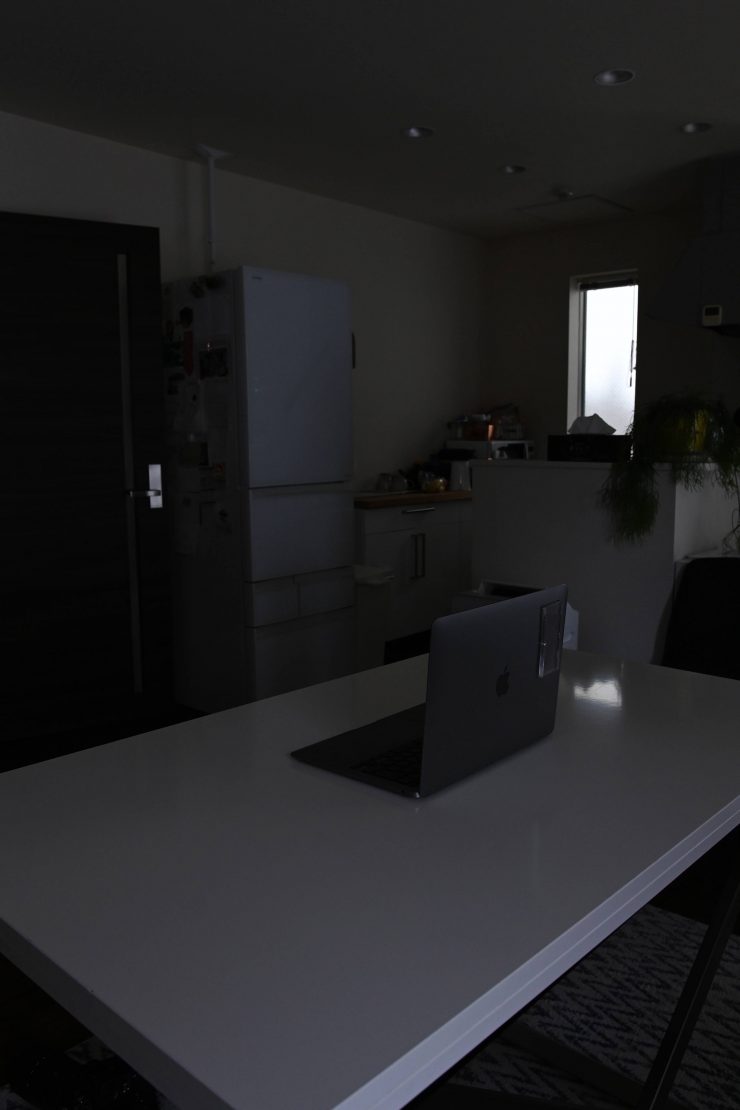
Light off 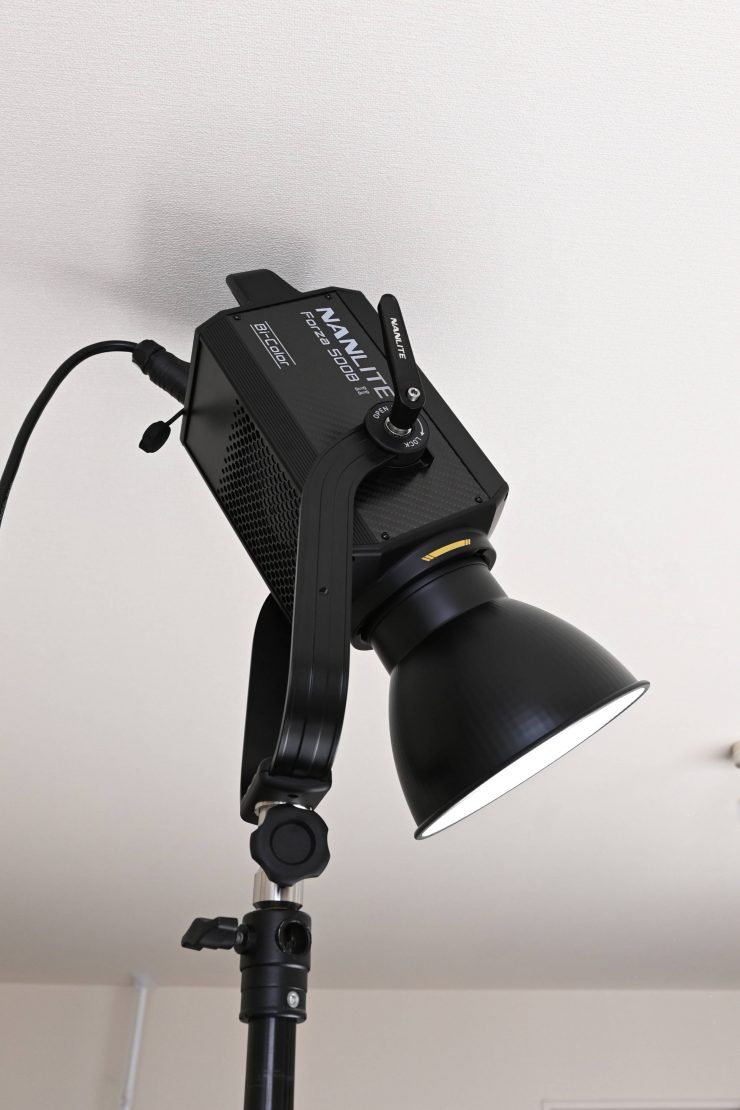
Position of the ligfht
Above you can see an example of the light placed inside and directed straight into the table.
I also tried the light with a DoPChoice Octa 3 softbox. While the light won’t fill the soft box completely, it still fills it enough to provide decent results.
Above you can see the light used with the optional Projection Mount. The Projection mount works really well and it allows you to really concentrate light into a tiny area.
What you also clearly need to remember with point source lights such as this one is that even though they can generate a decent amount of output when not used with diffusion, once you add diffusion they lose a ton of output because that output is coming from a very small concentrated source.
The light also works well when used with bounce boards or the CRLS reflector system when you combine it with the Fresnel or Nanlite Projector.
Who is the Forza 500B II aimed at?
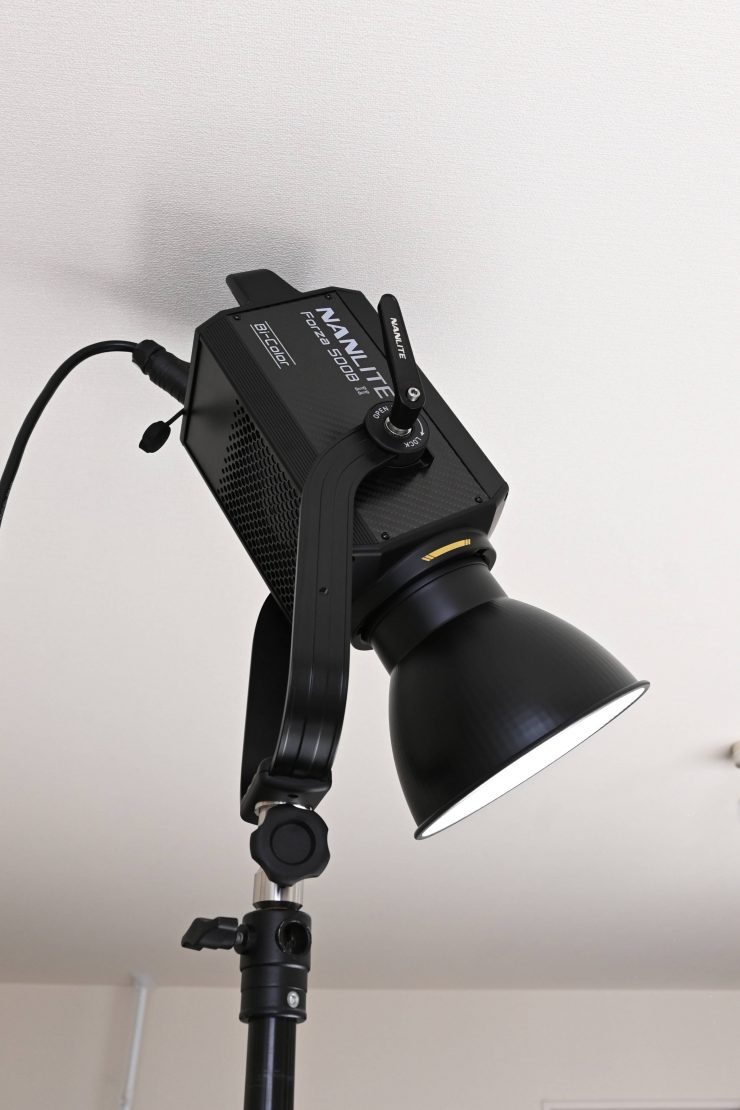
I think a lot of people who are in the market for a high-powered bi-color spotlight that is still reasonably priced and doesn’t weigh too much will be looking closely at this light. It is well made, very competitively priced, and it has a decent amount of output.
Like most COB LED spotlights it is certainly priced to appeal to owner-operators who are looking for a jack-of-all-trades lighting solution. The versatility of the Forza 500B II allows it to be used as a hard light source, a soft source, a fresnel, a gobo, or just about anything else you want it to be with the correct modifier. While bi-color lights certainly still have their place, I think a lot of people are now looking more closely at full-color RGBWW options because of the extra versatility they bring. While daylight-only fixtures are going to have more output than bi-color or full-color models, the difference in output between bi-color and full-color is pretty close.
Nanlite continues to improve its fixtures, and personally think this is one of the best bi-color spotlights with this type of power draw that are currently on the market. It has good color accuracy, and it has consistent output and performance across its wide CCT range, and it is nice that you have the ability to access +/- G/M adjustment.
Price & Availability
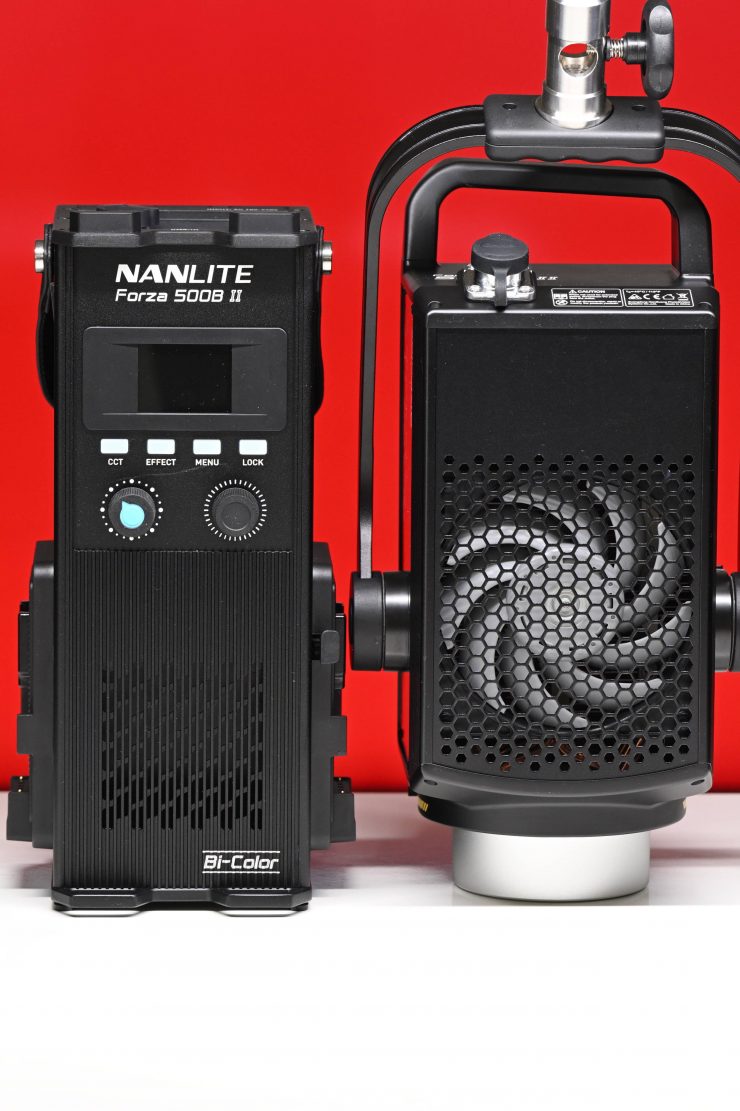
The Nanlite Forza 500B II retails for $1,499 USD and it is available to pre-order. At $1,499 USD it is competitively priced.
Competition
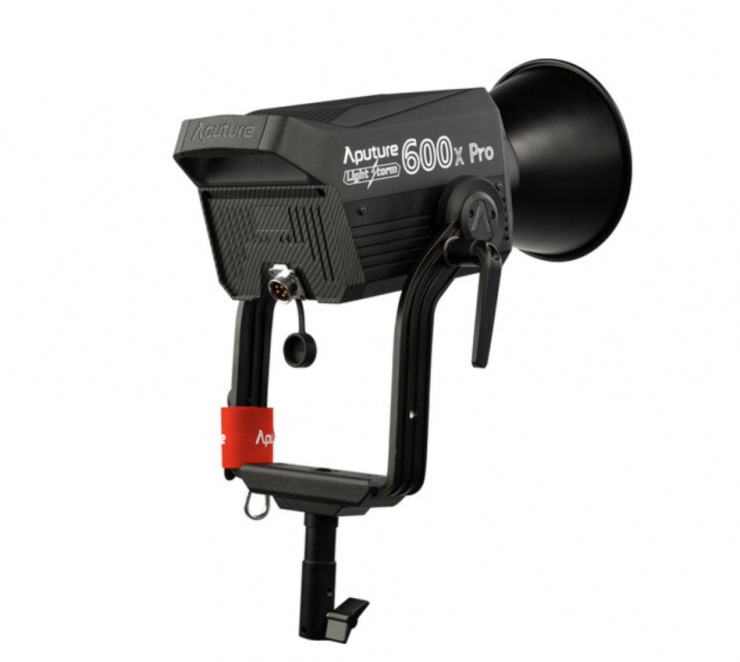
Below you can see some other similar power draw Bi-color spotlights that could be considered competition:
- Aputure Light Storm LS 600x Pro $1,990 USD
- CAME-TV Tioga Series 660W Bi-Color LED Spotlight $1,298 USD
- Godox Knowled M600Bi Bi-Color LED Monolight $1,599 USD
- SmallRig RC 450B COB Bi-Color LED Video Monolight $1,099 USD
What do you get?
- Nanlite Forza 500B II Bi-Color LED Light
- Stand Super Clamp
- Nanlite 55-Degree Reflector for Forza 300 and 500
- Nanlite COB Cap with Bowens Mount for Select LED Monolights
- Padded Carry Bag
- Power Cable (19.8′)
- Head Cable (9.8′)
- Control Unit with V-Mount Plates
- Limited 2-Year Warranty, 1-Year Extension with Registration
Optional Extras
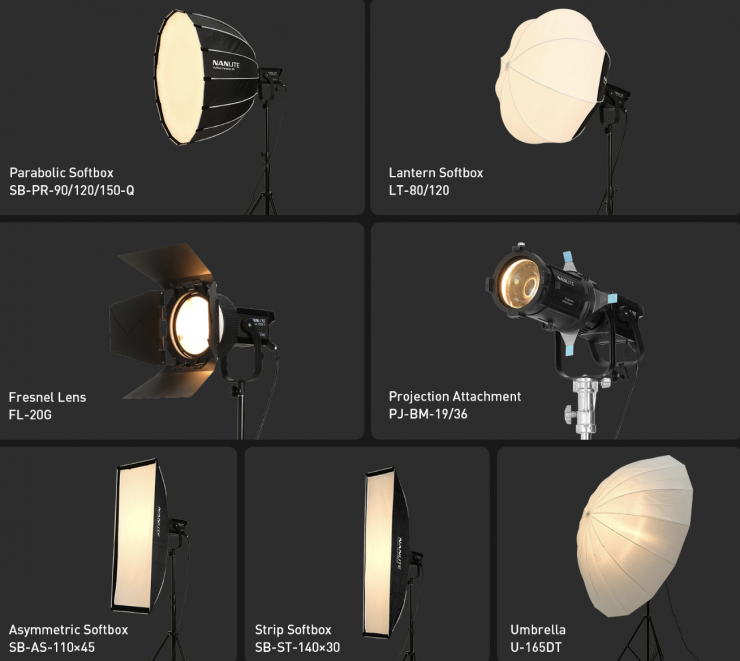
As it utilizes a Bowens mount you can use a wide array of affordable lighting modifiers. Nanlite also makes quite a few of its own accessories for the light.
Conclusion
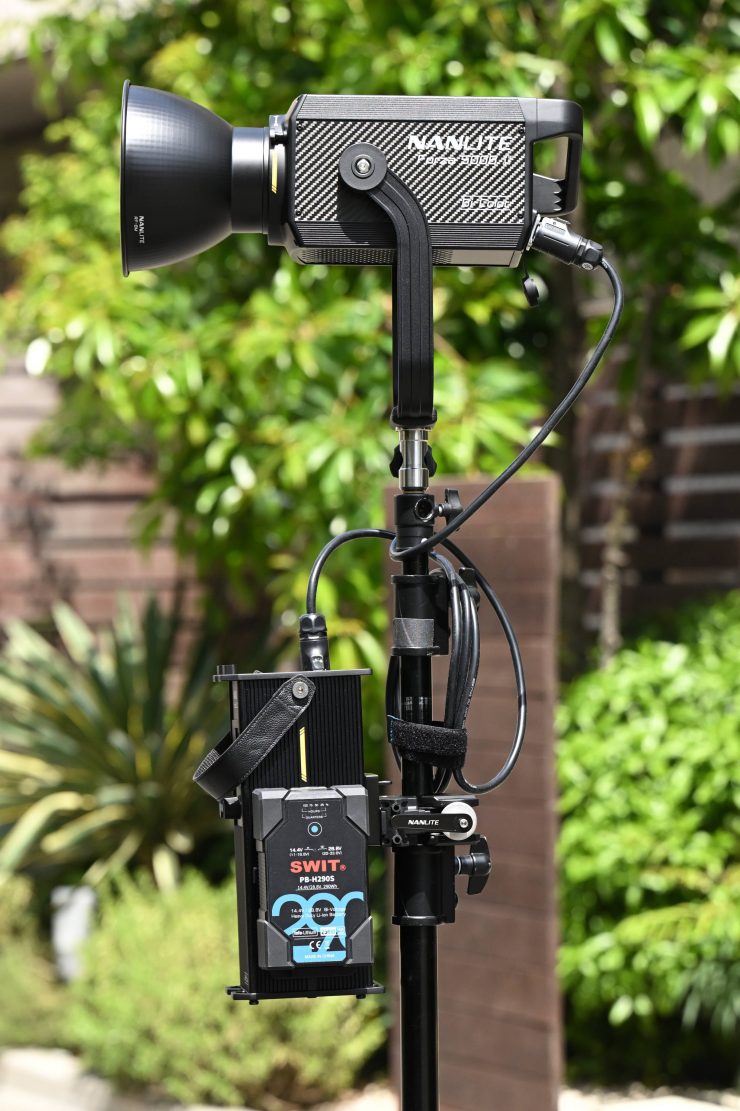
The NanliteForza 500B II is a solid offering. It is reasonably CCT accurate, has a decent amount of output, and most importantly it is reasonably lightweight for a fixture of this size and power draw. Its versatility makes it a fixture you can use for so many different applications.
The output, color accuracy, and weight make this light a compelling option in this space. While it is a decent upgrade over the original, apart from the slight decrease in size and the addition of +/- G/M correction, it doesn’t offer anything new that we haven’t seen before. I like the Forza 500B II, but I kept asking myself what does it offer over something like an Aputure LS 600x that has been around for quite a few years. Yes, it draws less power, it is lighter, and it has +/- G/M adjustment, but that is about it. It doesn’t have a higher output, and the color rendering scores are fairly similar. The biggest reason o pick this over an Aputure, would be the fact that it is considerably more affordable.
That might sound like nit-picking, but LED lights have seemingly reached a plateau where almost every fixture being released offers similar performance and feature sets. I think we are all waiting to see what the next advancement will be.
Having the ability to use the Forza 500B II with a wide array of lighting modifiers gives the light a lot of versatility.
The interface and operating system are easy enough to use, but the app needs improvement and updating. The build quality is solid, and for people who are looking at a light at this price, I think they will find it acceptable.
The fan noise is well controlled, particularly when it is used in its Smart fan mode. That gives the light a big tick in a box that I would consider an important feature.
As a main key light or a jack-of-all-trades single lighting source, it makes for a compelling option, however, as I already mentioned, there are plenty of other lights on the market that can also do the same thing.
The quality of Nanlite fixtures has certainly improved over the last few years and they have a large array of options to choose from. The Forza 500B II is a solid fixture and it does a lot of things really well. Nanlite has done a good job of making a fixture that performs well in so many areas without having to make many compromises, however, it does face stiff competition.

